- ~ Home
- ~ Vía de la Plata (The Silver Way)
- Villanueva de Campean to Zamora, Day Three
Jump to Vía de la Plata Stages
Vía de la Plata, Villanueva de Campeán to Zamora, Day Three, 18.2 Kilometers (11.31 Miles)
Disclosure: the PilgrimageTraveler.com is an associate of Booking.com, Roamless, and Amazon. As associates of these merchants, we earn from qualifying purchases from our links.
Our day three on the Vía de la Plata, from Villanueva de Campeán to Zamora was short and sweet, allowing plenty of time at the end of the day to explore the fabulous medieval town. Zamora is a city filled with many historic and beautiful churches. The castle on the top is the cherry on the sundae.
The destination of Zamora is fabulous, but the walk itself is perhaps the most boring of all as you will see from the photos below.
🙋♀️ Why Trust Us at the Pilgrimage Traveler?
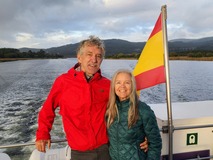
We’re not a travel agency ~ we’re fellow pilgrims! (See About Us)
We've trekked Pilgrimage Routes Across Europe since 2014!
💬 We’ve:
- Gotten lost so you don’t have to. 😉
- Followed waymarks in the glowing sunlight, the pouring rain and by moonlight. ☀️🌧️🌙
- Slept in albergues, hostels & casa rurals. Ate and drank in cafés along the way. 🛌 😴
- Created comprehensive and downloadable GPS maps and eBook Guides, full of must-have information based on real pilgrimage travels. 🧭 🗺️
- Shared our complete journeys, step by step to help YOU plan your ultimate pilgrimage and walk with your own Heart and Soul. 💙✨
Every detail is from our own experiences. Just fellow pilgrims sharing the Way. We have added a touch of spirituality, heartfelt insights and practical guidance from the road ~ offering a genuine connection to the spirit of pilgrimage. Tap into the wisdom of seasoned pilgrims!
Ultreia and Safe Pilgrimage Travels, Caminante! 💫 💚 🤍
Quote for Day Three on the Vía de la Plata, Villanueva de Campeán to Zamora
However softly we speak, God is so close to us that he can hear us; nor do we need wings to go in search of him, but merely to seek solitude and contemplate him within ourselves, without being surprised to find such a good Guest there. ~ San Juan de la Cruz, St John of the Cross, 16th Century Mystic
If ever there was a day for silence and solitude, this day was one, at least for me. If you seek an inward journey on your pilgrimage, the high meseta of central Spain is the place for it.
Maps and Stats of Day Three on the Vía de la Plata, Villanueva de Campeán to Zamora
Here is our Google map of the day's journey. There are absolutely no towns nor services on the entire 18.2 kilometer walk, unless you take an optional diversion to San Marcial, shown on the map in red.
While you could easily walk this distance in 4-5 hours, if it is hot, fill your water reservoirs to the top! Hopefully you have sufficient snacks in your pack. If not, buy something at your accommodation before you set off.
Not only is the distance short for this day, but it is all downhill as you can see, as well!
👣 Camino Sanabrés EBook:
Offline Guide with Bonus Route
~ Includes 4-5 additional days on the Vía de la Plata from Salamanca!
Walk smarter with our ad-free, beautifully formatted Camino Sanabrés eBook Guide, perfect for offline use ~ important in the mountainous and remote areas. Includes daily stage details, stunning photos, historical background and a BONUS digital guide on the Vía de la Plata from Salamanca, called the Camino Fonseca. This allows you the opportunity to add 4-5 more days to your Camino in the beginning.
Don't carry a hard copy guide book to increase your pack weight. Use our frequently updated digital guide on your next Camino instead!
📲 Instant download. 💸 Money-back guarantee. 🔄 Free updates for 1 year.
👉 Click here for more info or BUY NOW!
Jump to Vía de la Plata Stages
Photo-Rich Travelogue of Day Three on the Vía de la Plata, Villanueva de Campeán to Zamora
Our day began after leaving the center of town with full bellies and packs full of the food we had purchased from the vendor's truck in town the prior day.
Within a few meters from the center, this lovely town placard shown here, greeted us. This was to be the first of many we were to see on the Camino Fonseca, and showed the community's history and dedication to the Camino de Santiago, the "Root of Europe - Path for Peace." This was indeed, a lovely morning salutation as we paused to read it.
The morning was misty and fresh as we set out. At eight o'clock the sun was coming up quickly to warm the Earth.
The first Vía de la Plata pillar that greeted us, shown in the next photo, on the very north edge of town, ensured us we were on the correct path.
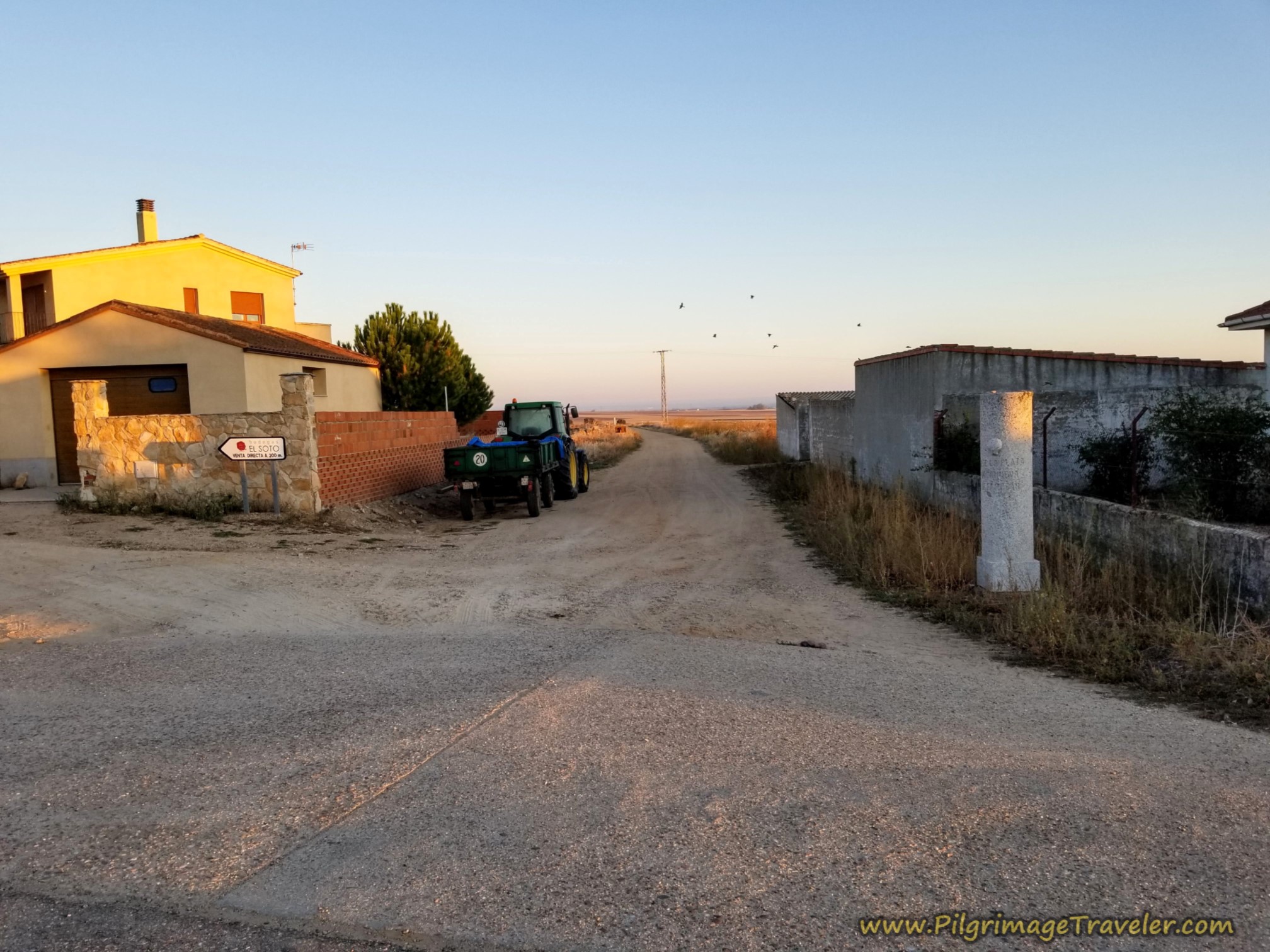 Town Limits of Villanueva de Campeán
Town Limits of Villanueva de CampeánA few meters later, Norm walks by a second pillar, showing the way as straight ahead. I love the morning light across the meseta. For me it is so calming and hopeful as the dawn of a new day bursts forth!
The way is very well waymarked, so it would be quite difficult to get lost through this countryside, despite passing through many dirt intersections.
I could tell already that the day was going to be hot, so I enjoyed the lingering mist in the fresh morning, for as long as I could.
The sunflowers and grains were already harvested by this time in October, but the grape harvest was in full swing. We passed tractors and autos full of workers heading to the fields.
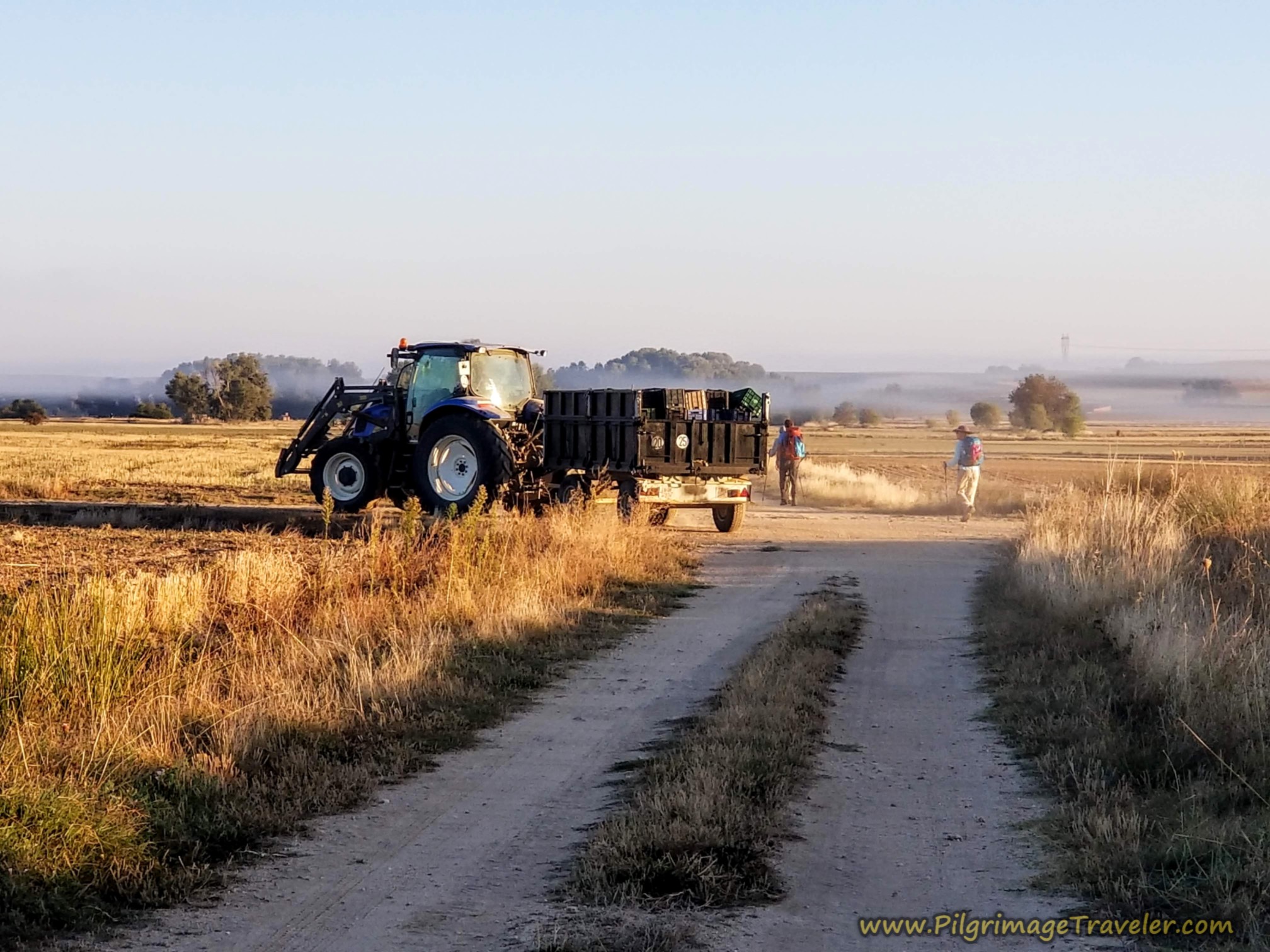 Tractor and Wagon Heading to the Vineyard
Tractor and Wagon Heading to the Vineyard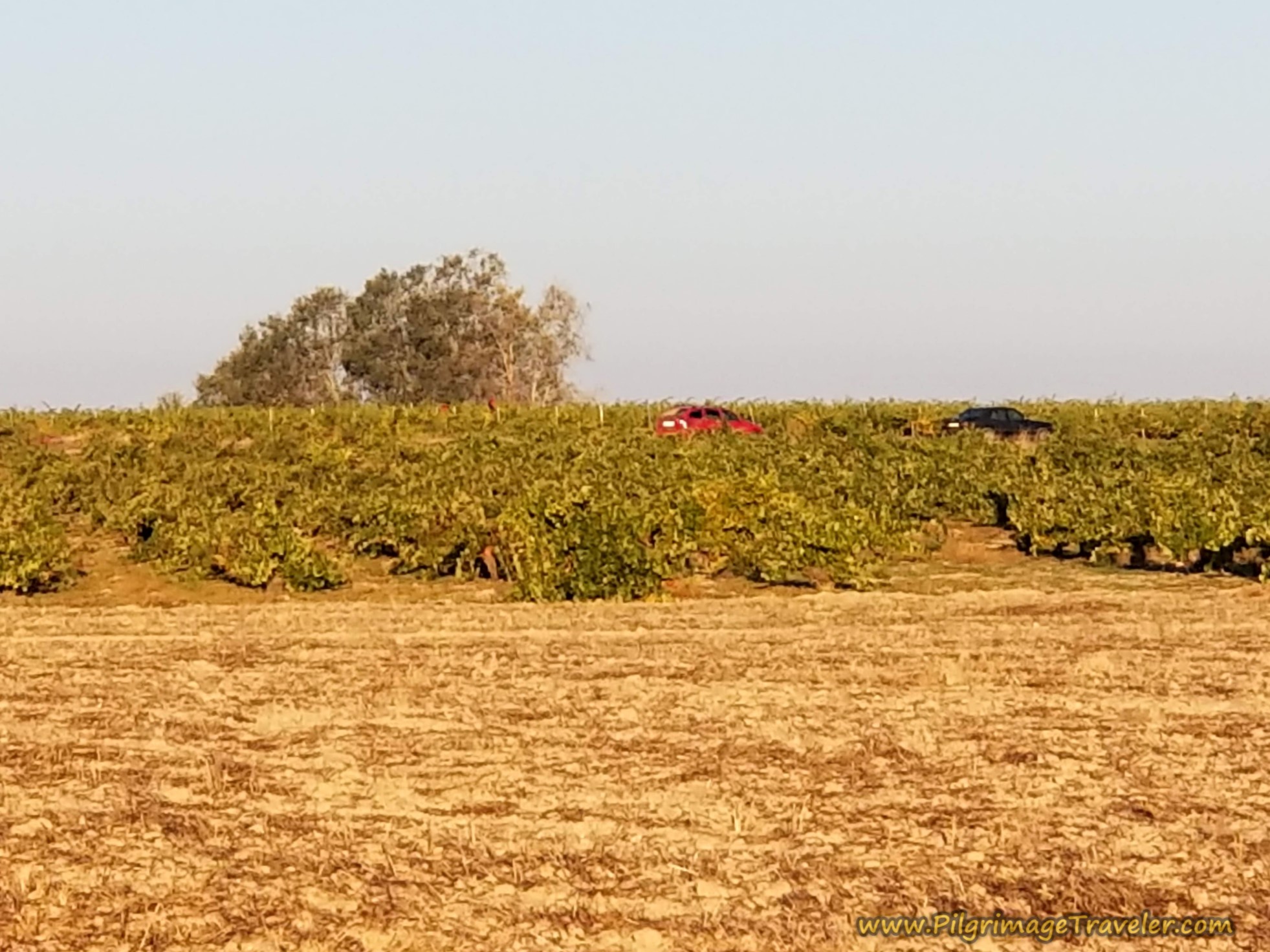 Vineyard Worker's Cars Already in the Fields
Vineyard Worker's Cars Already in the FieldsAs you walk along these open fields, small structures catch your eye that looked to me like storage buildings of some sort. They did not look like they were currently being used.
Also the road was lined with wild rose bushes and its remaining fruit, the rosehips shown below.
Another interesting addition to the landscape was various types of wells, all round, some made of red brick like this one next to another structure, below, and another type of well, perhaps more recent, made of concrete, shown farther below.
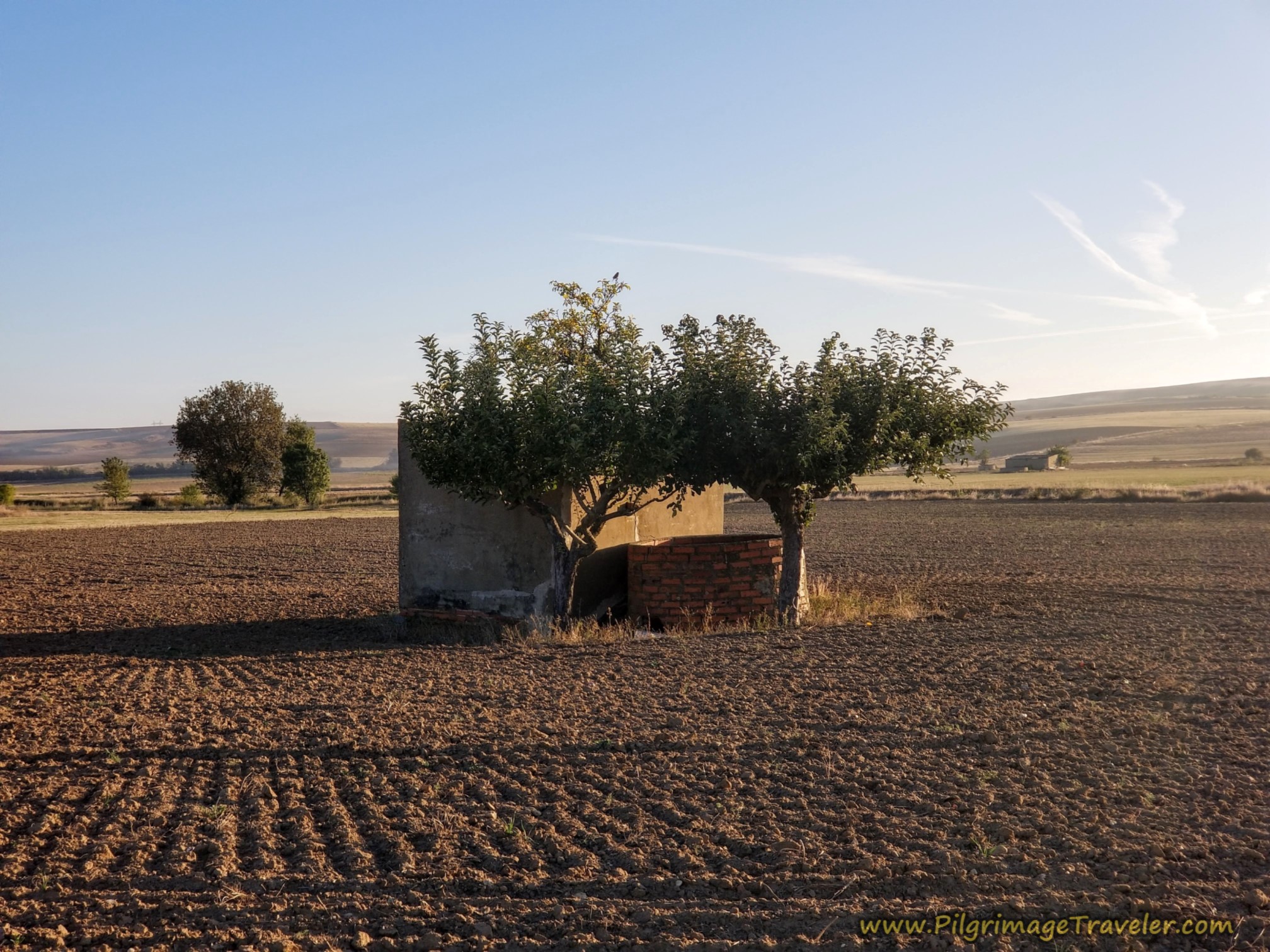 Well and Storage Structure
Well and Storage StructureAfter about 4.0 kilometers into the day, with the town of San Marcial clearly in the distance, instead of heading toward the town, the Camino directs you to turn right, at the waymark shown below. This direction also heads toward the power line shown in the photos to follow.
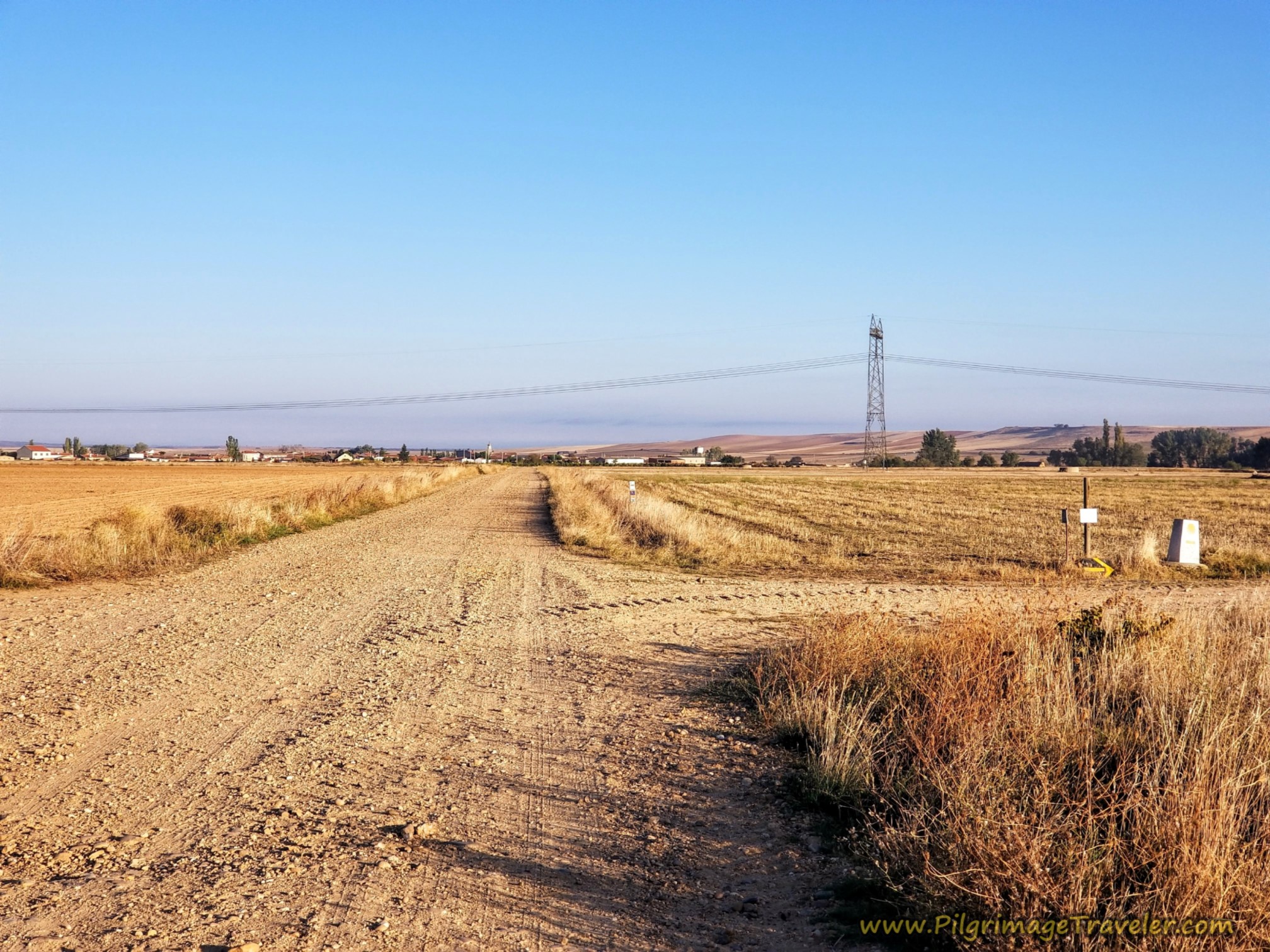 Right Turn Away from San Marcial
Right Turn Away from San MarcialYou could stay straight here to head into San Marcial, if you were in dire need of services, depending on your own day's journey. There is a bar and a grocery store. It wouldn't even be a detour, if after you reached town, you headed north on the ZA-305 which the Camino eventually joins farther ahead. However, this is highway walking, so I wouldn’t recommend it, unless you really must have a bar break.
After turning right, come to the next intersection, in about 700 meters, at 4.7 kilometers for the day. The next waymark pillar for the first time had an accompanying pilgrim's staff and gourd. This is a unique characteristic of the Vía de la Plata. There are several more to come.
After this pillar, it appears that there is a bit of an incline ahead, but instead, at about 5.0 kilometers, the Way directs you to the left, at this intersection shown next. Painted on the concrete waymark, but not visible in the photo, we saw "Zamora, 12 kilometers." Yes, that would be about right. Thank-you Camino Angel.
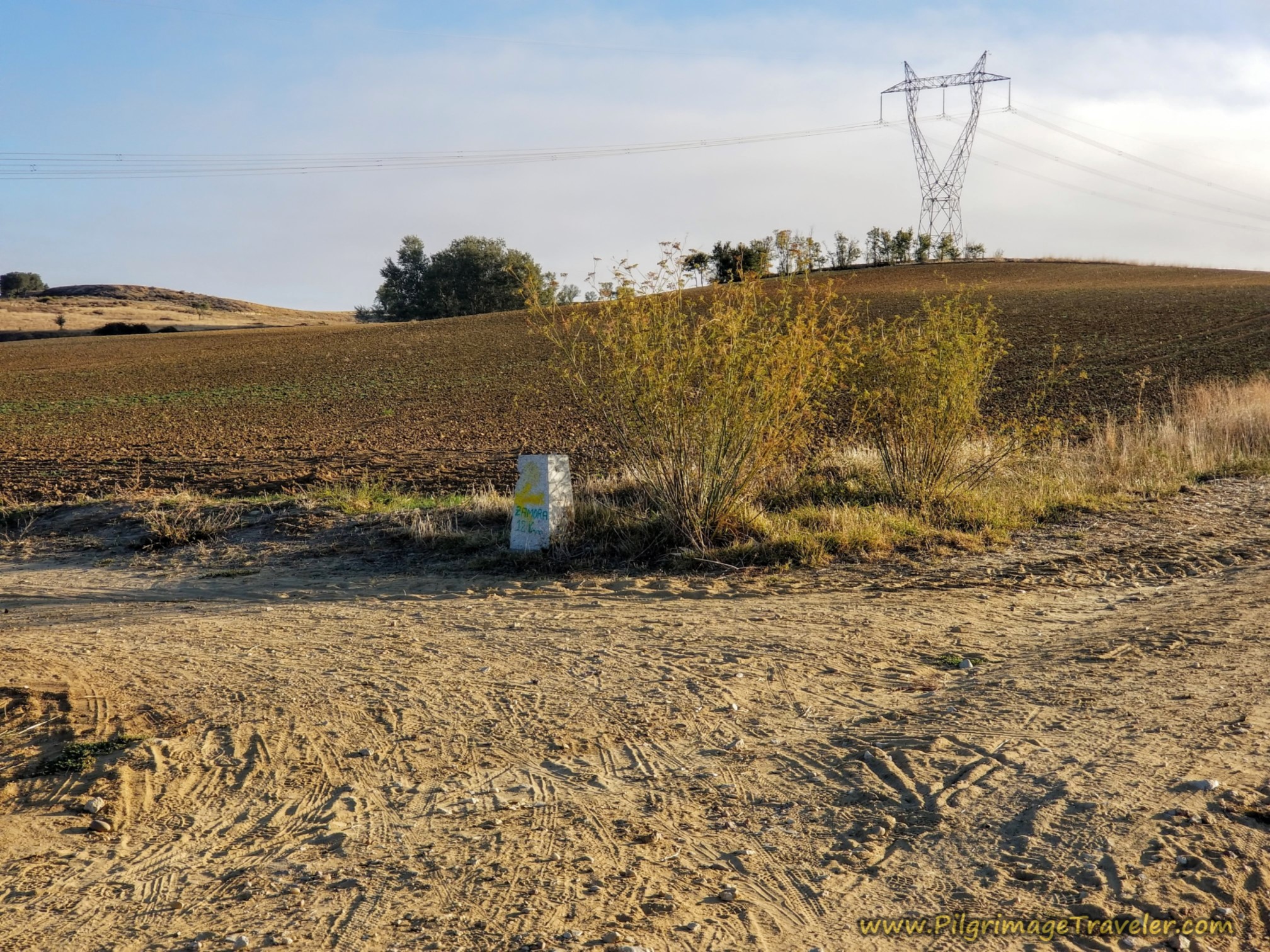 Zamora, 12 Kilometers
Zamora, 12 KilometersAfter the turn we spied our first of many concrete water reservoirs, mentioned above, scattered around the fields. Perhaps you can make out the yellow arrow on this one below.
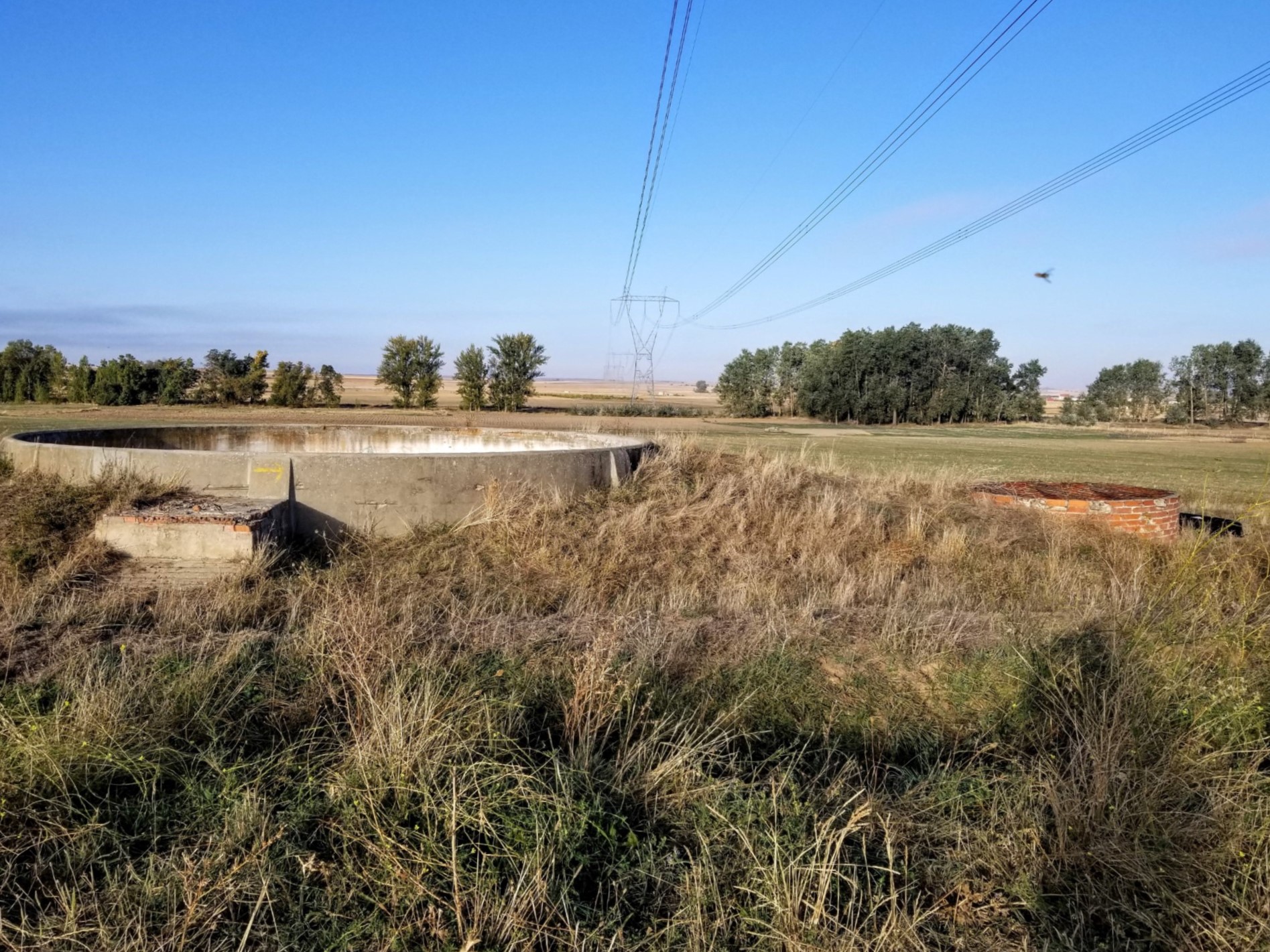 Concrete Water Reservoir
Concrete Water ReservoirAfter passing under the powerline, here is the long barren road ahead shown below, with a visible white pillar in the distance at the next turn. You can continue to see San Marcial on your left shoulder.
Jump to Vía de la Plata Stages
I hung back from the group today, as I voice journaled my experience. I was not into the group talk of the day, but preferred to stay behind, alone with my thoughts as the others marched on ahead of me. Once in a while my husband would slow down and look back to check up on me. It was comforting.
If I was looking for answers, none came. If I was seeking God, my head was too busy processing random thoughts.
You are at about 5.75 kilometers into the day when you reach this pillar at the next intersection, where you make a right turn.
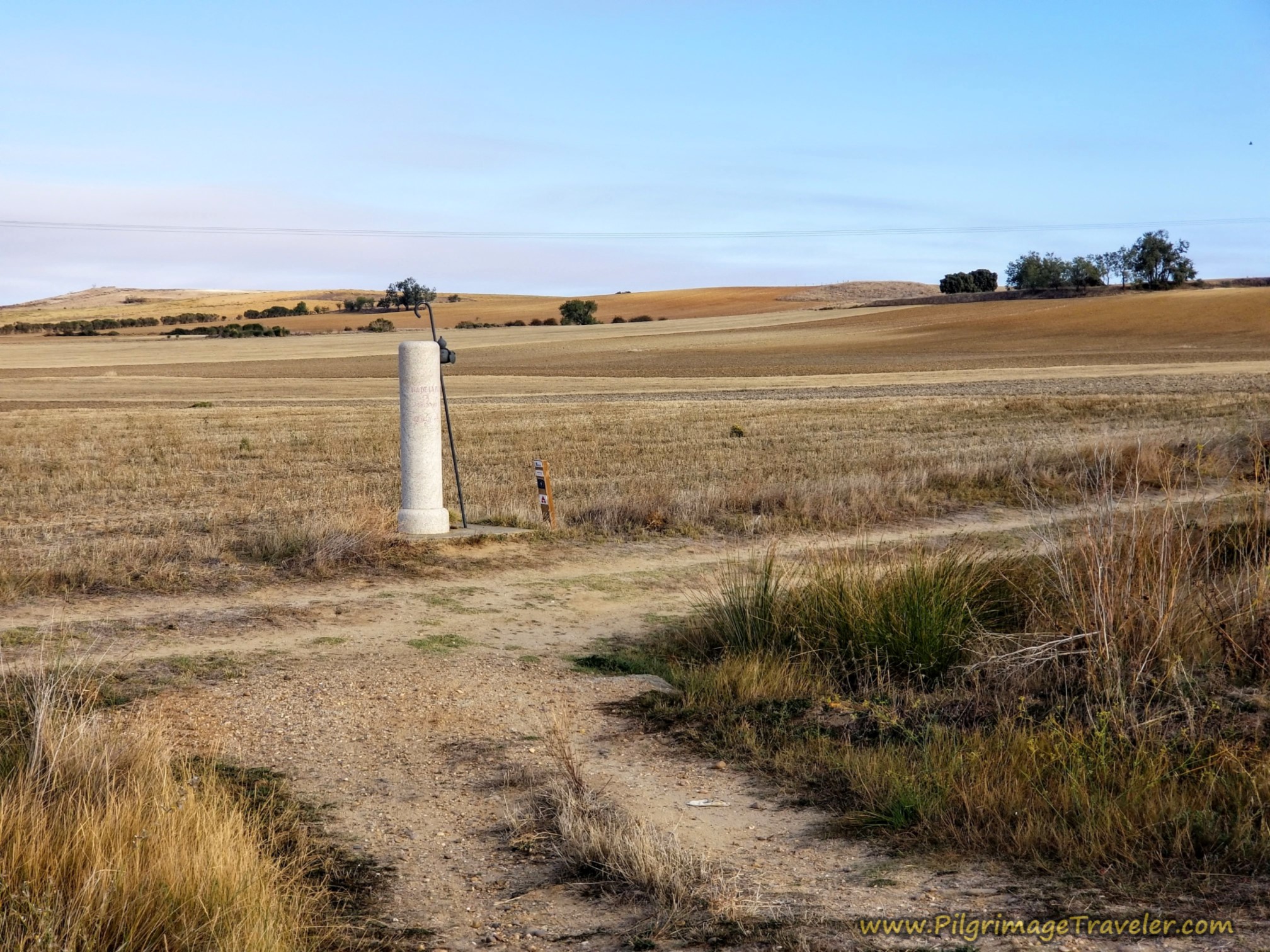 Right Turn at Pillar, 6 Km into the Day
Right Turn at Pillar, 6 Km into the DayAfter the turn, the road is open, hot and dry. You can see the church steeples of another town now, on your right shoulder, El Perdigón. There is a rise in the distance where you will walk towards.
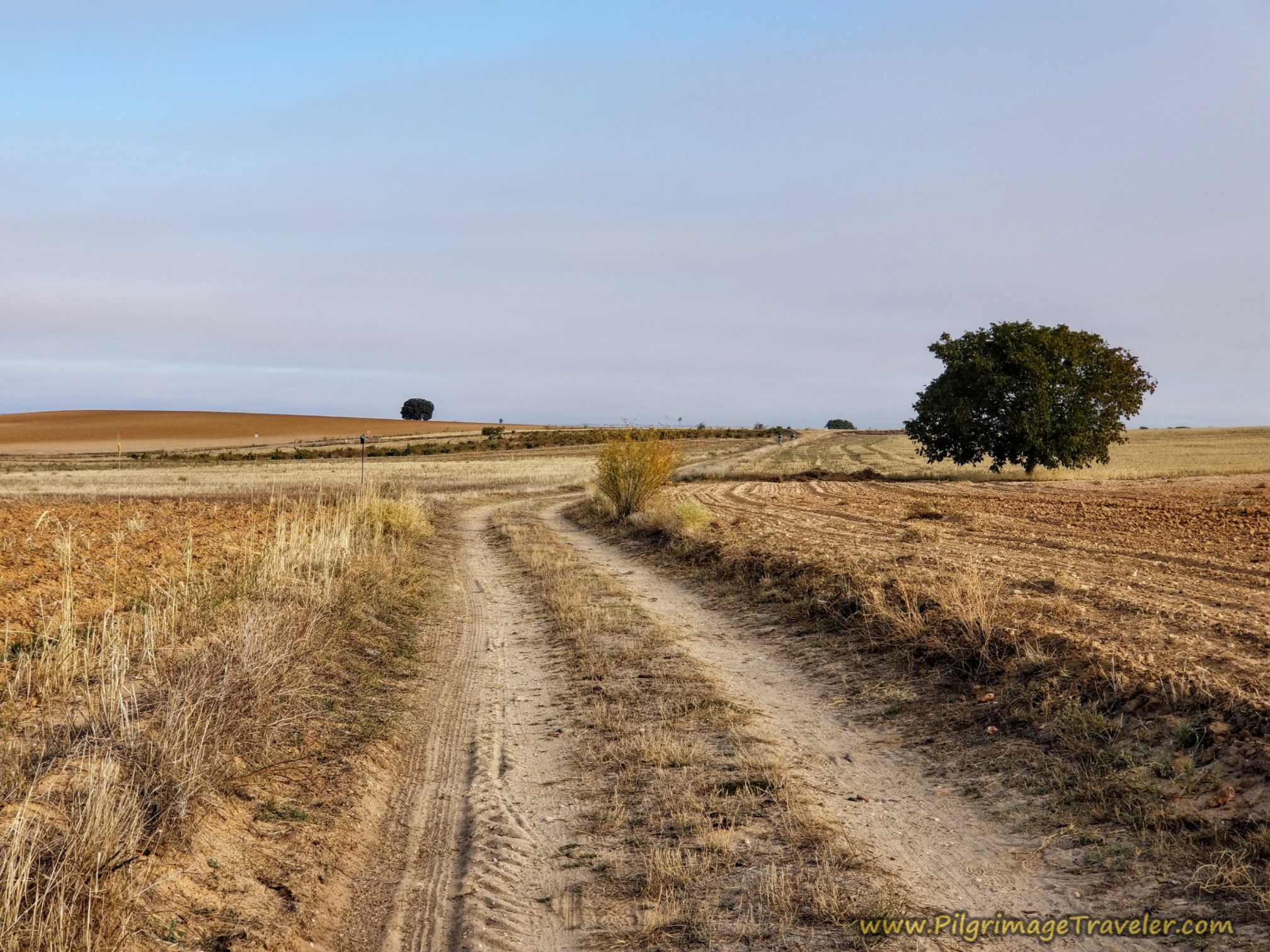 More Open Road
More Open RoadAt the top of the rise, the city of Zamora comes clearly into focus! When you arrive at a T-intersection, after 7.0 kilometers for the day, the concrete waymark below directs a turn to the left and announces that Zamora is 10 kilometers away.
In barely 100 meters, this lane comes to a T-intersection with the ZA-305, the paved road that joins the Camino from San Marcial. Take a right hand turn onto the pavement toward Zamora.
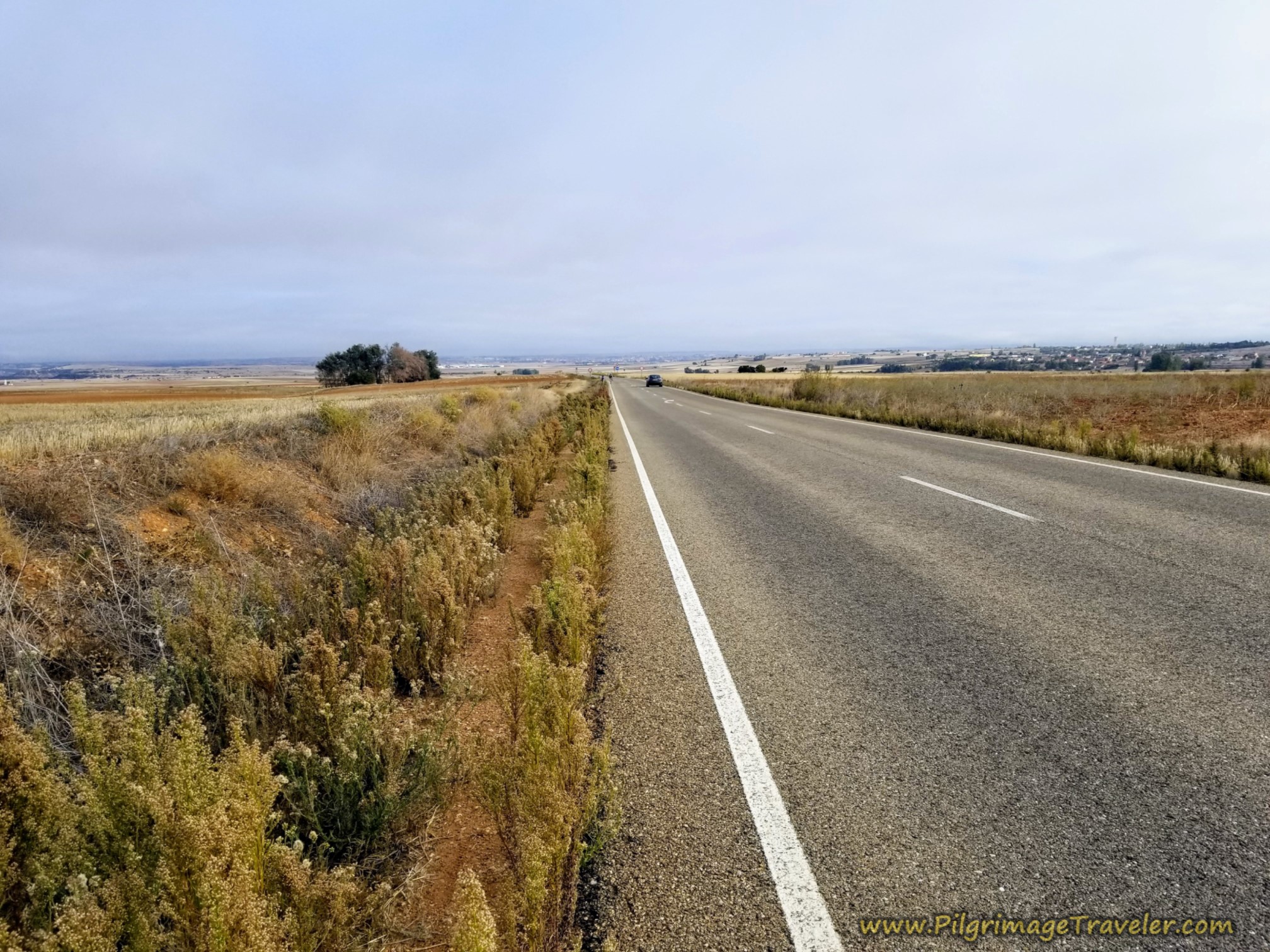 Join the ZA-305
Join the ZA-305Fortunately, it is only a short kilometer or so later that the Camino leaves the road, to go back onto the farmer's lanes.
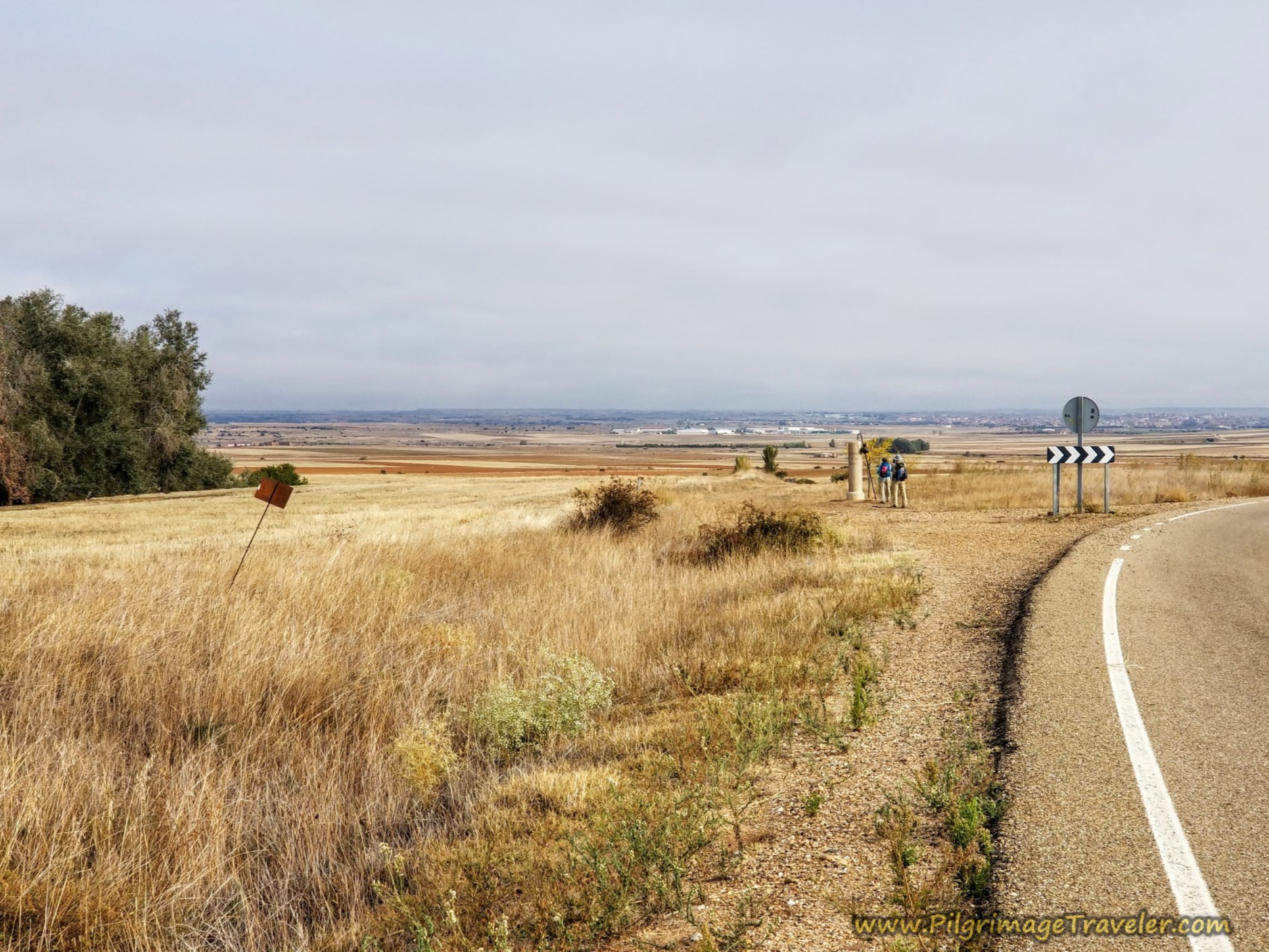 Leave the ZA-305
Leave the ZA-305It is after about 8.2 kilometers that you reach the turnoff from the ZA-305, at this pillar. This is one of the last pillars of its kind, so take a long look or a photo! I caught up to the others here as they admired the pillar and the view.
Very recently, a resting bench has been added by the pillar, advertising a bank, with the back a large yellow arrow. I am not fond of it after viewing a photo from a fellow pilgrim!
The way ahead on the country lanes are once again a wonderful place for introspection. I continued seeking solitude.
The town of Entrala, with a prominent white tower, possibly a grain elevator or a water tower is visible on your right shoulder as you walk along through here (not pictured).
After about 8.5 kilometers into the day, come to this mojón, below, at an intersection. Zamora is ahead and the way is clearly downhill from here.
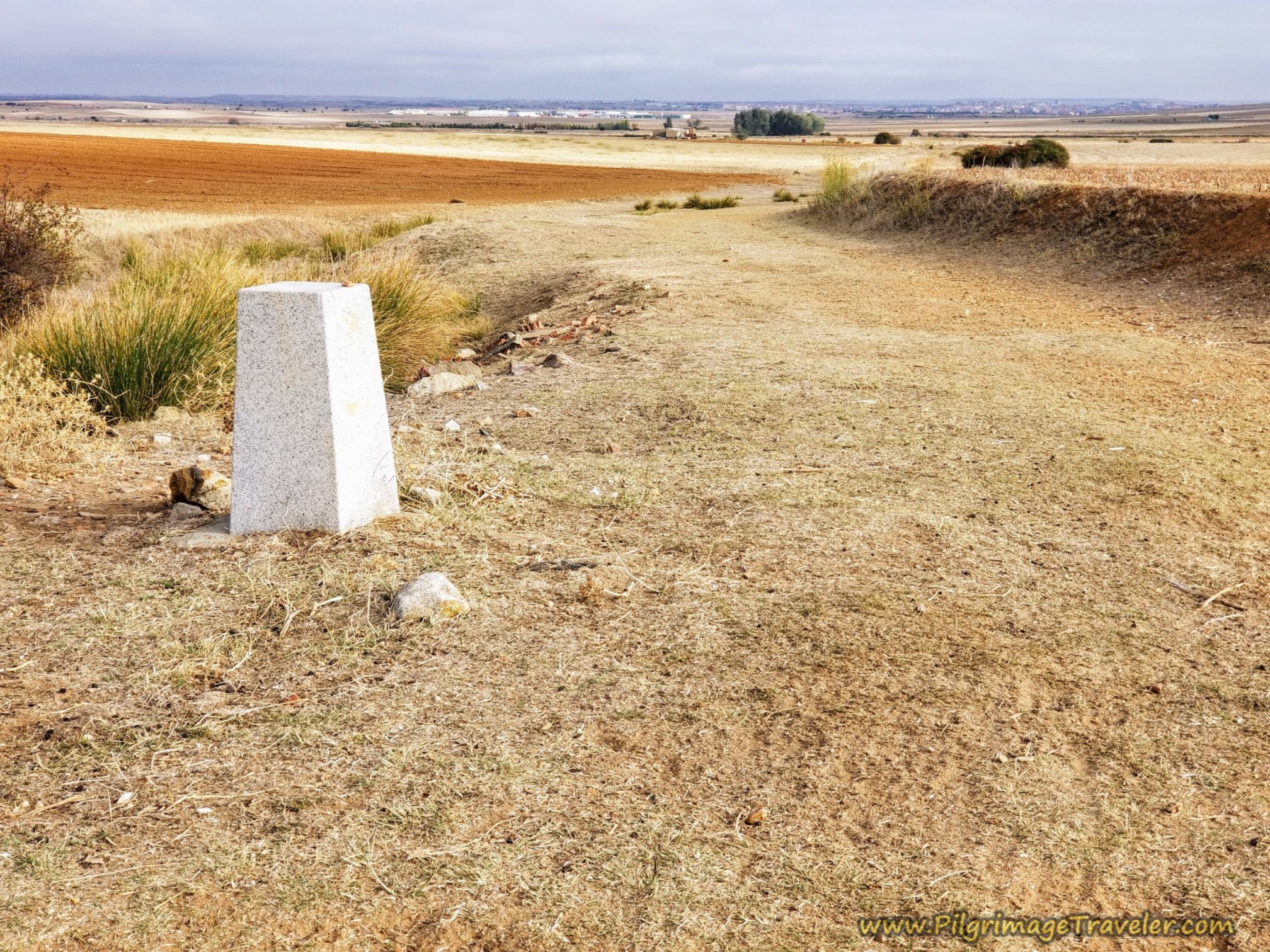 Zamora Visible Ahead Downhill
Zamora Visible Ahead DownhillAnother 1.5 kilometers onward, pass by this group of farm buildings. Some cyclists passed us through this area, our first pilgrims we had seen in awhile!
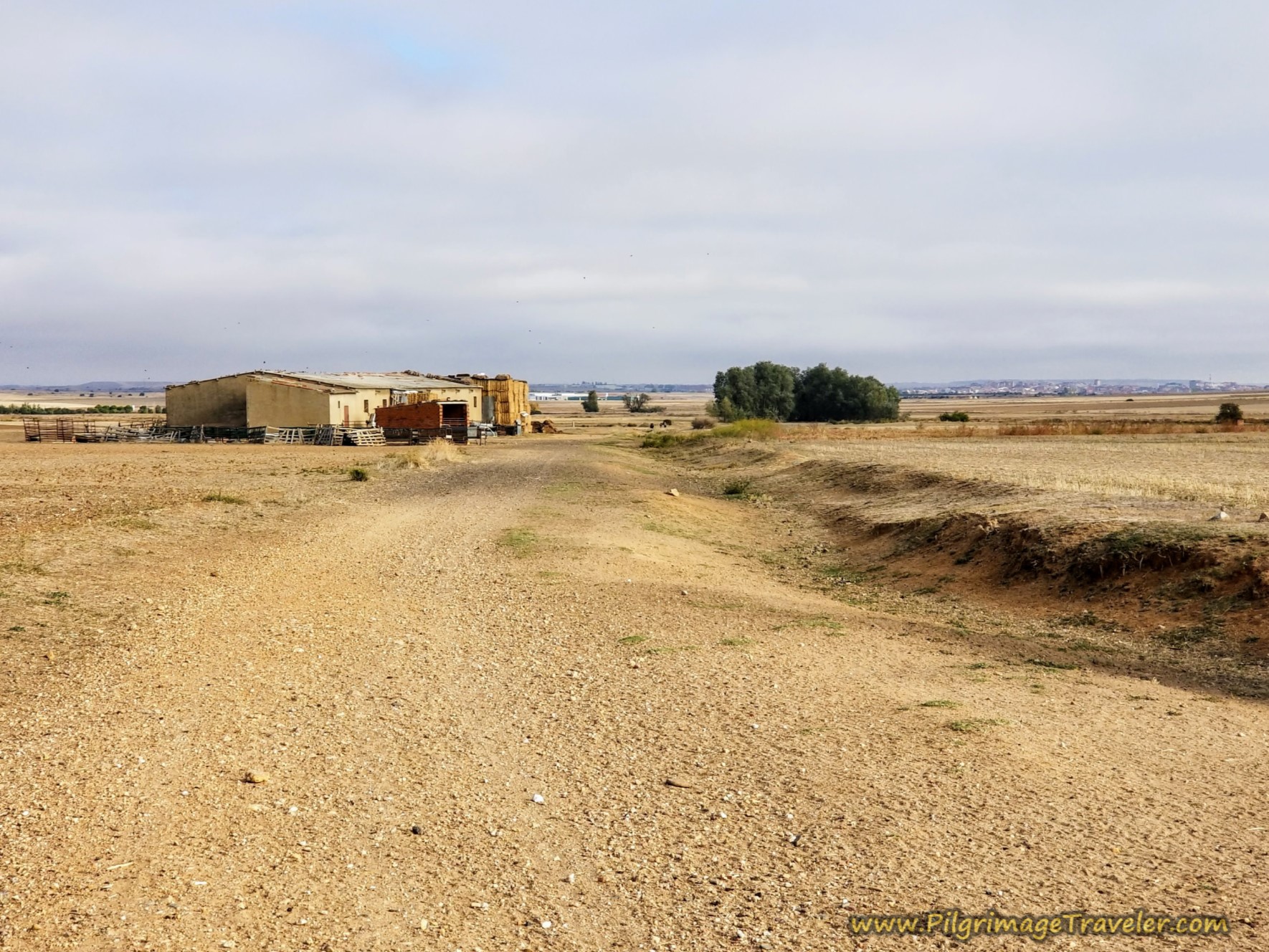 Farm Buildings Break Up the View
Farm Buildings Break Up the ViewAfter 10.6 kilometers on the Vía de la Plata from Villanueva de Campeán to Zamora we came to this final staff and gourd pillar, shown below, where a group of French pilgrims were having their lunch. More humans! We would not see them again, as they were just completing a section that would end in Zamora. They had the luxury of completing small sections of the Silver Way at a time.
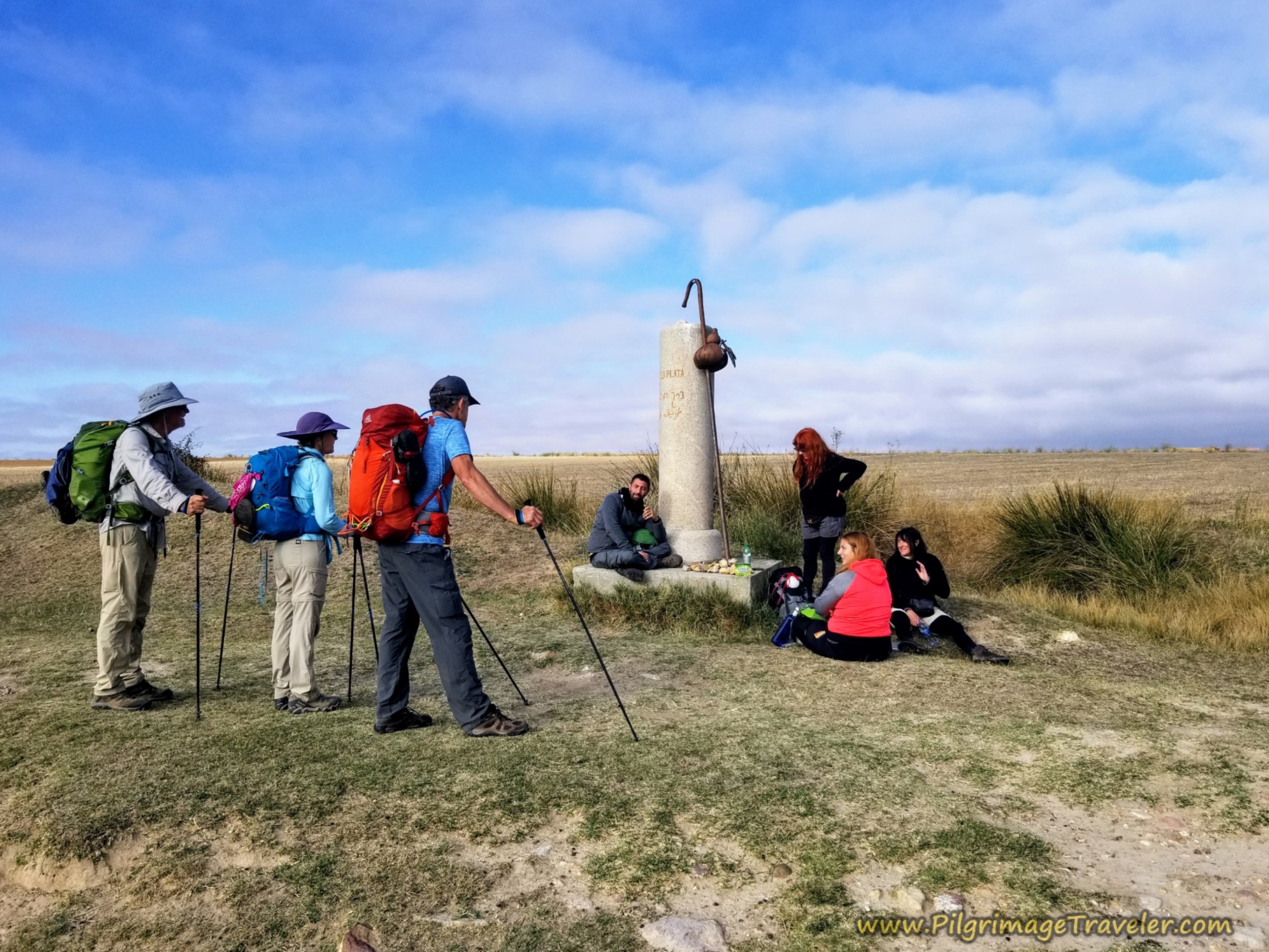 Fellow Pilgrimage Travelers
Fellow Pilgrimage TravelersThe pillar above marks the left turn shown below, onto the little bridge with the yellow arrow.
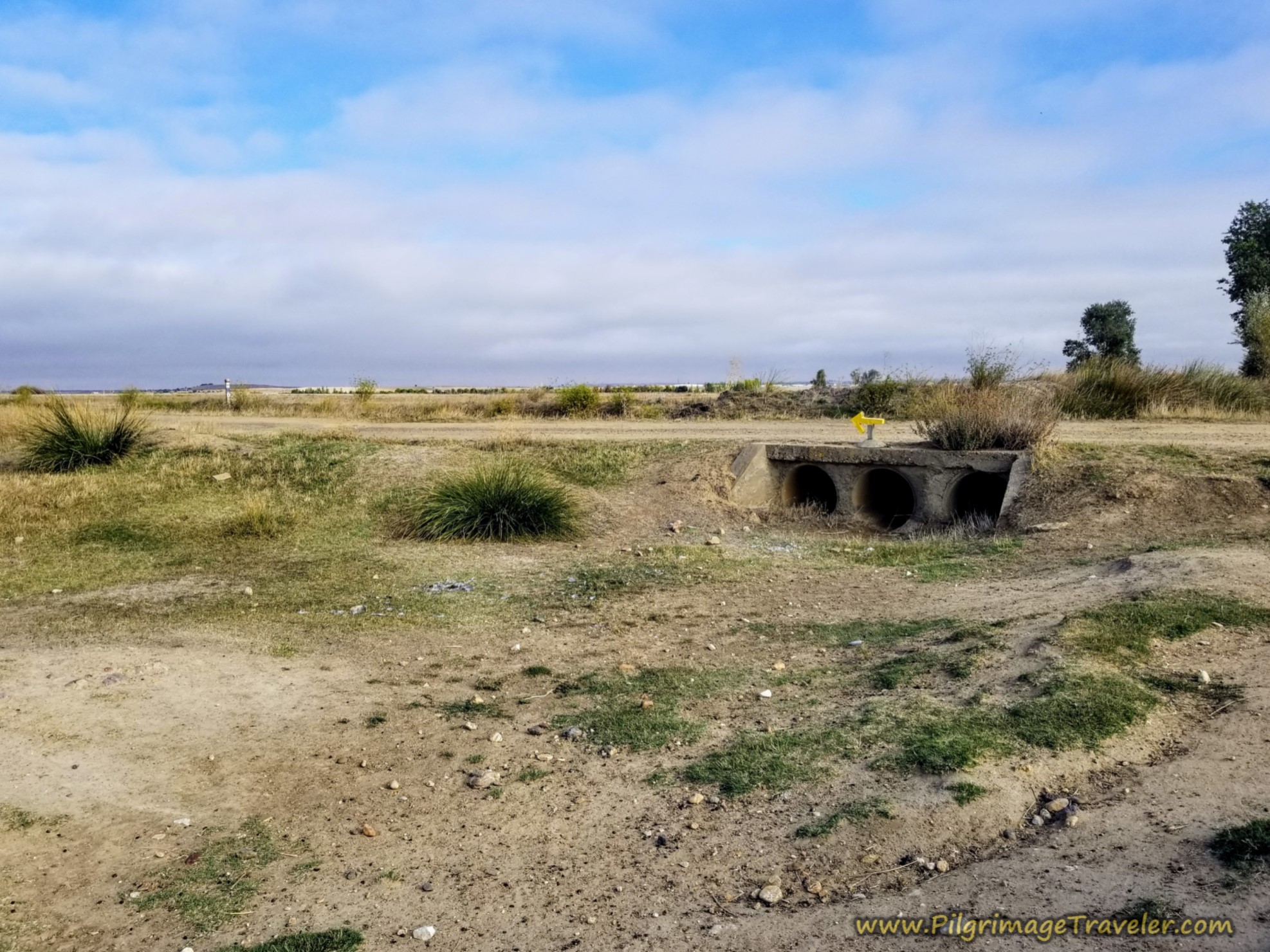 Left Turn at the Bridge
Left Turn at the BridgeThe diversion to the left is only about 300 meters before the Camino turns to the north (right) again, shown below. At this turn you now share the road with another trail system called the GR 14 or La Senda del Duero, but only until Zamora. Click on the link if you are curious about this trail.
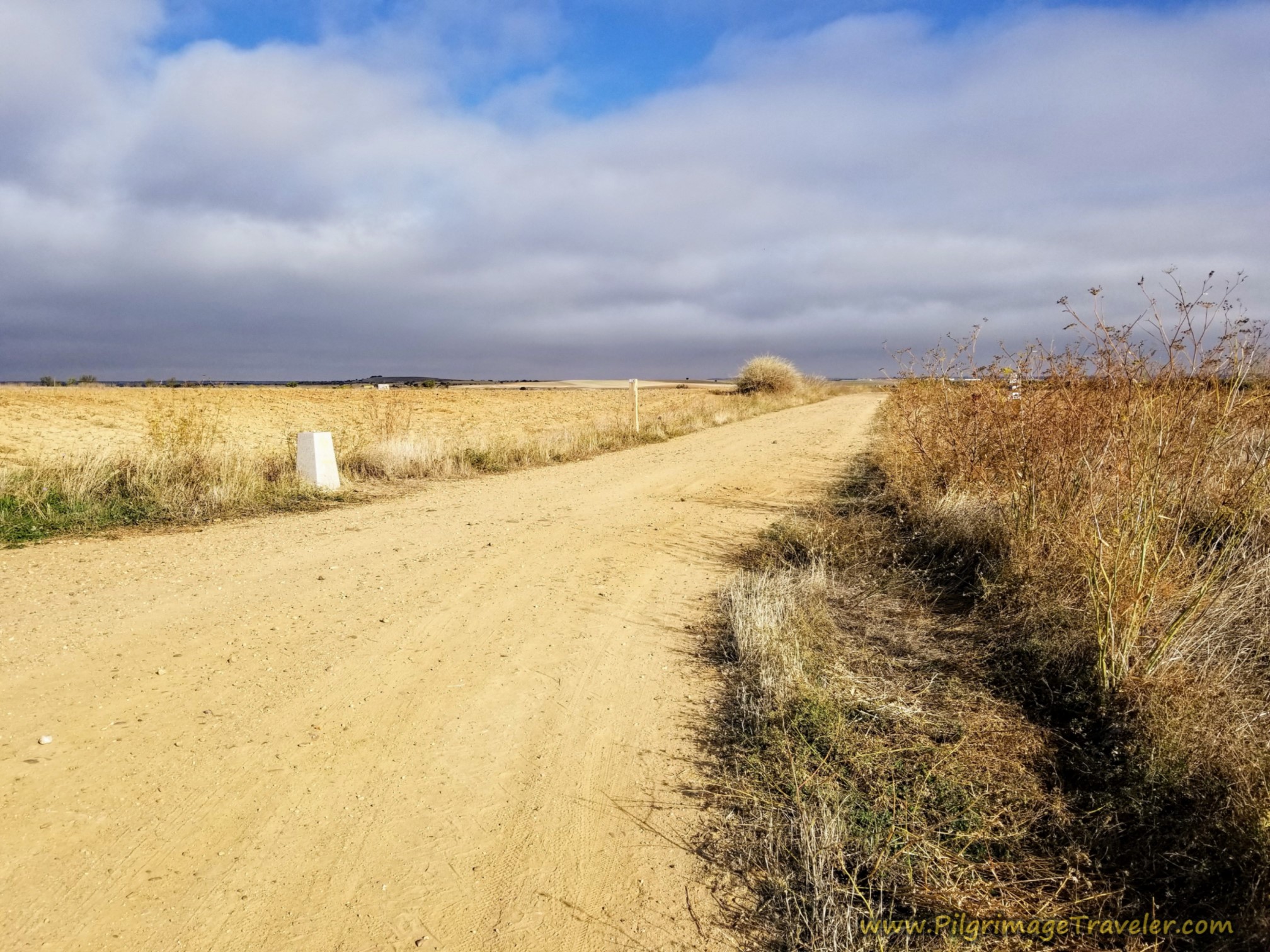 More Open Road
More Open RoadShortly after the turn above, the separate red trail marker for the GR 14, has a 6 kilometer marking. This is a rough estimate of the remaining kilometers to go on your own Vía de la Plata from Villanueva de Campeán to Zamora.
Jump to Vía de la Plata Stages
The Curbstone of the Promises Monoliths
After 11.8 kilometers we came to this monument, below, called El Brocal de las Promesas y Monolitos de las Tres Calzadas, meaning roughly, the "Curbstone of the Promises and the Monoliths of the Three Roads."
This monument, erected in 2009 by the Association of Friends of the Camino de Santiago de la Vía de la Plata de Zamora and the Ramos de Castro Foundation for the Study and Promotion of Man, commemorates the confluence of three Jacobean routes: the Via Mirandesa, a route of friendship and the Jewish path to freedom, the Vía de la Plata, symbolizing a meeting point for cultures in peace and the Vía de la Dalmacia, a reminder of a Muslim pilgrim's way to San Francisco.
Each of the three monoliths represents each Vía, with a separate inscription describing the significance of each. By the middle monolith is also a round structure that simulates a wishing well, where pilgrims may deposit stones as they make a wish.
Thus, the symbolism of the monument is to honor the Christian, Jewish and Muslim cultures who lived in this land in Peace for many, many years before the Christian Reconquest. These trails were established by the first Mozarabic pilgrims, another reminder of the arabic connection that has never fully disappeared.
To read more about this important monument and the lovely inscription on each monolith, click here. You must use Google translate if you do not speak Spanish.
I wish I had known about this monument before we arrived, but we all buzzed right by it. I stopped just long enough to snap a photo of it as a landmark.
Between our desire to get to Zamora and out of the hot sun, the difficulty in deciphering the Spanish on each monolith and the disrepair the monument had fallen into, we failed to enrich our day with a wish and a meditative stop here. But now, you, dear pilgrim, will know and will not make our mistake.
I must also admit that I was caught up in the idea that I must keep up with the group as they all hurried onward. Part of my mental processing on this day was just how I felt about walking with a group. It was a toss-up. There were most certainly advantages and disadvantages.
If your goal is not to "get there," spend some moments in wonder and gratitude as you meander through this barren meseta of Spain, perhaps also seeking an inward journey.
Jump to Camino Primitivo Stages
Back on the on the Vía de la Plata from Villanueva de Campeán to Zamora
It is at the monument, where you make a right hand turn to follow the Camino onward, following the well-waymarked Vía.
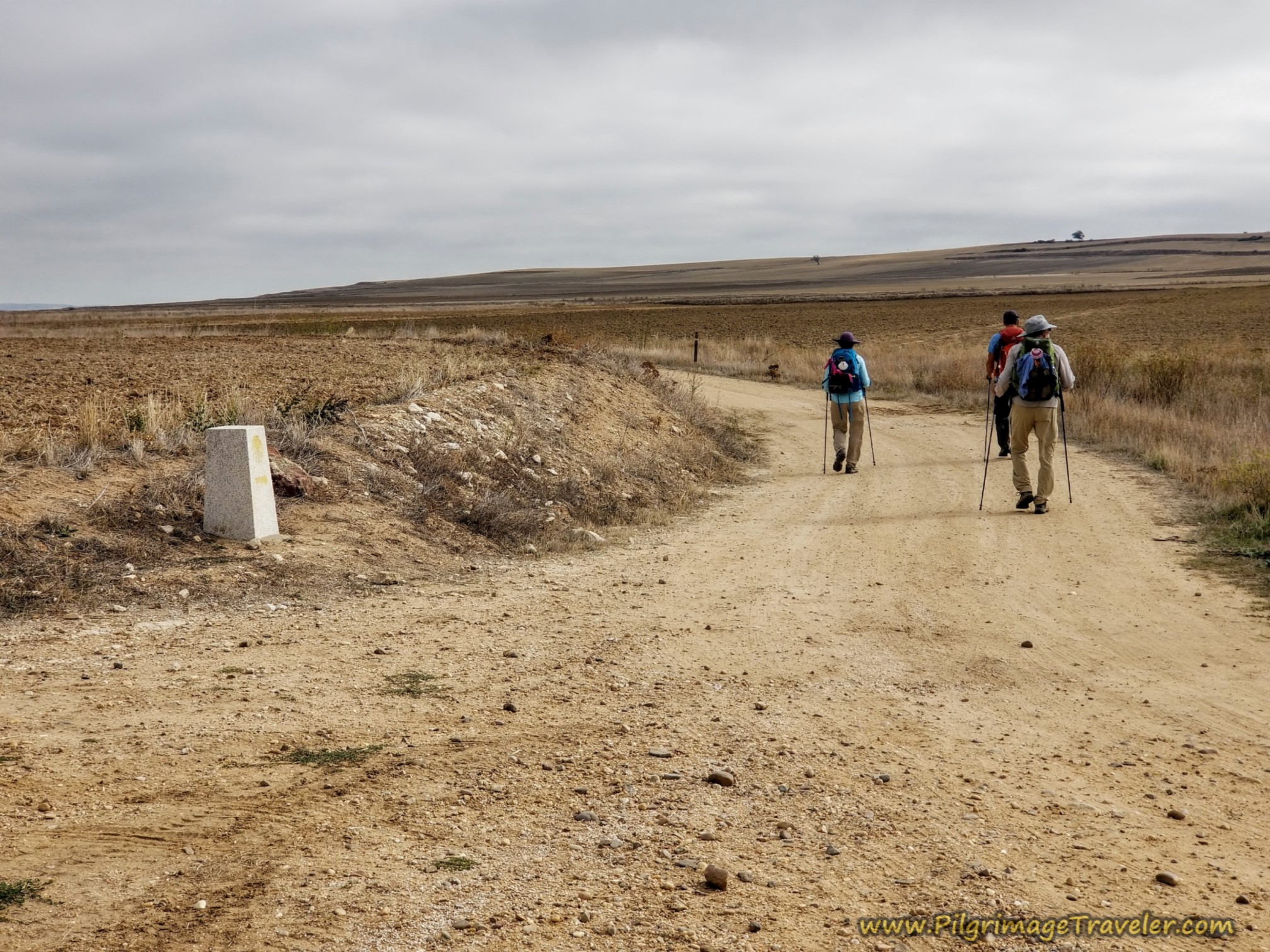 Right Turn by the Monument
Right Turn by the MonumentShortly the road takes a bend toward the north, and you can see Zamora getting much closer. There is a railroad track to your right shoulder that you walk close to, but soon it takes a separate path.
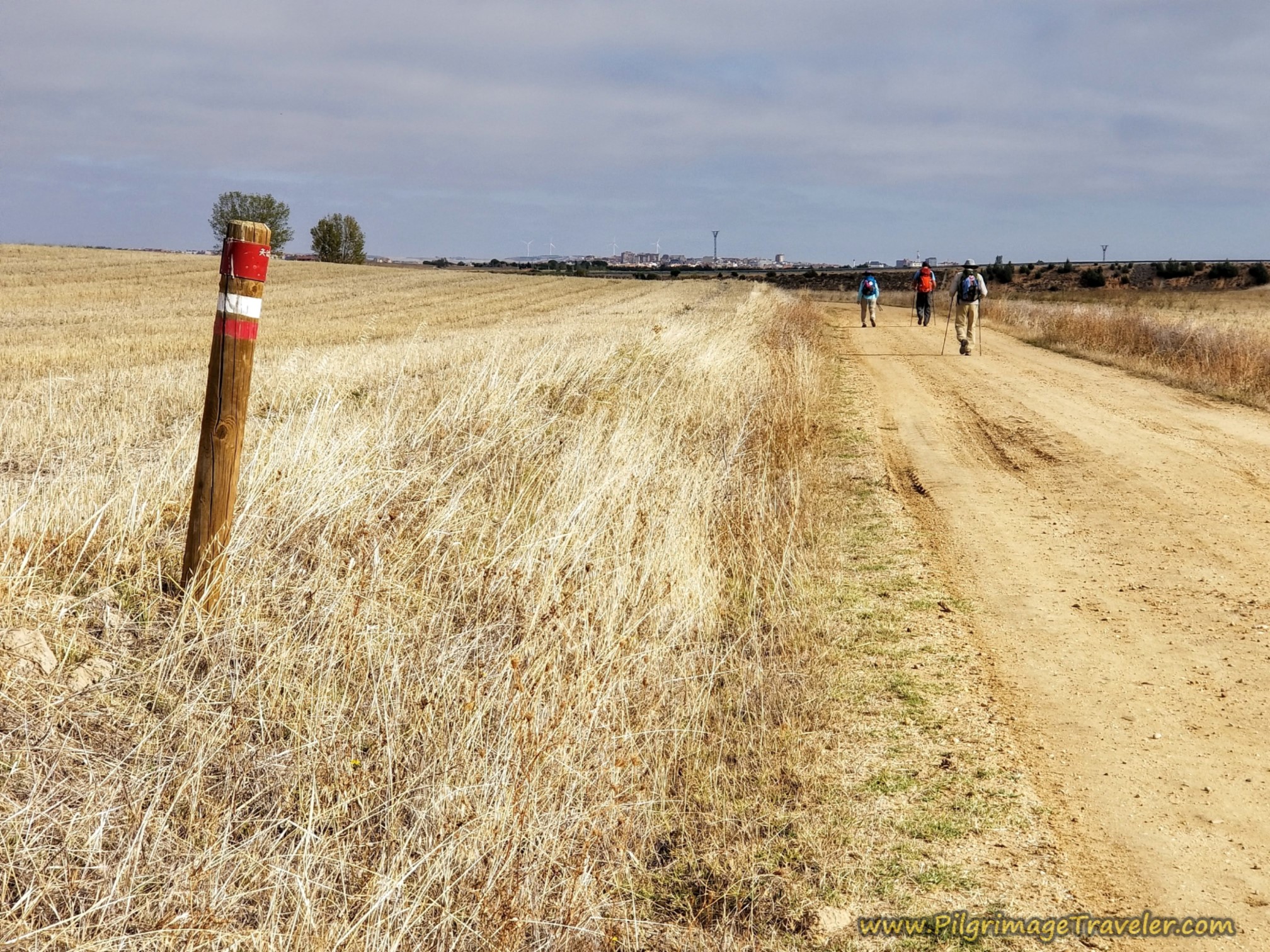 Zamora Getting Closer
Zamora Getting CloserAfter 13.7 kilometers, and after noticing a large industrial park on your left, you cross this highway heading towards the outskirts of town. Fortunately, this industrial park is far removed from the Camino and you never do have to walk through it.
The red signposts of the GR 14, La Senda del Duero, in various formats come more frequently now, the closer you get to town. The one across the road says four kilometers to Zamora.
When I googled the municipal albergue in Zamora, it was 4.4 more kilometers from this intersection. Only another 54 minute walk. Good to know.
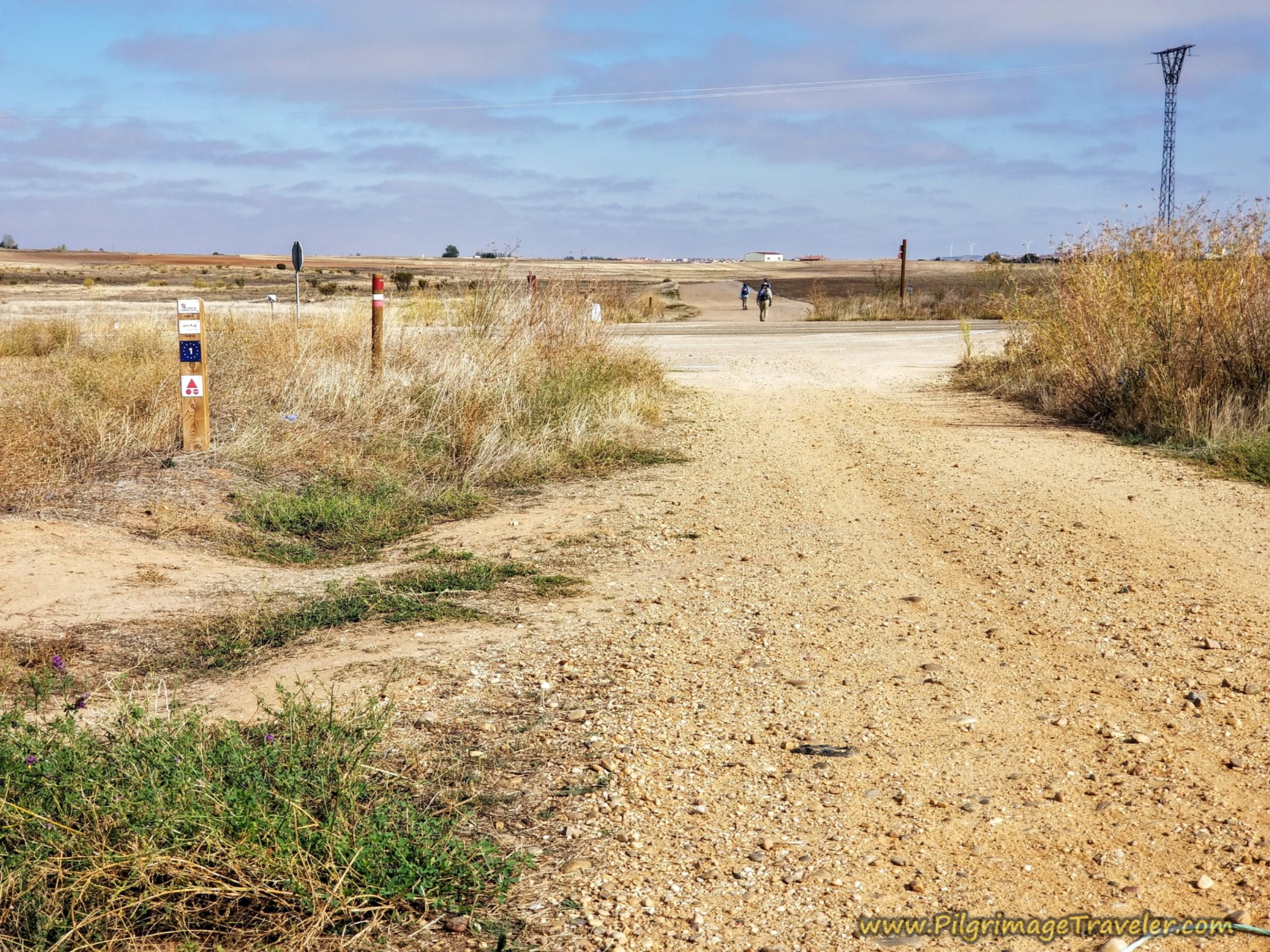 Cross Highway at Industrial Center
Cross Highway at Industrial CenterAfter 14.5 kilometers, at a T-intersection, the next mojón directs you to the left. Walk only about 50 meters and turn to the right. There are large banks of solar panels at this unmistakable intersection.
Walk by the banks of solar panels on the way to a long-walled homestead, after about 3/4 kilometer.
Come to a T-intersection after the homestead and stay to the right, with a lovely row of evergreens that line the roadway. Farther along this dirt road, Zamora appears in clear sight.
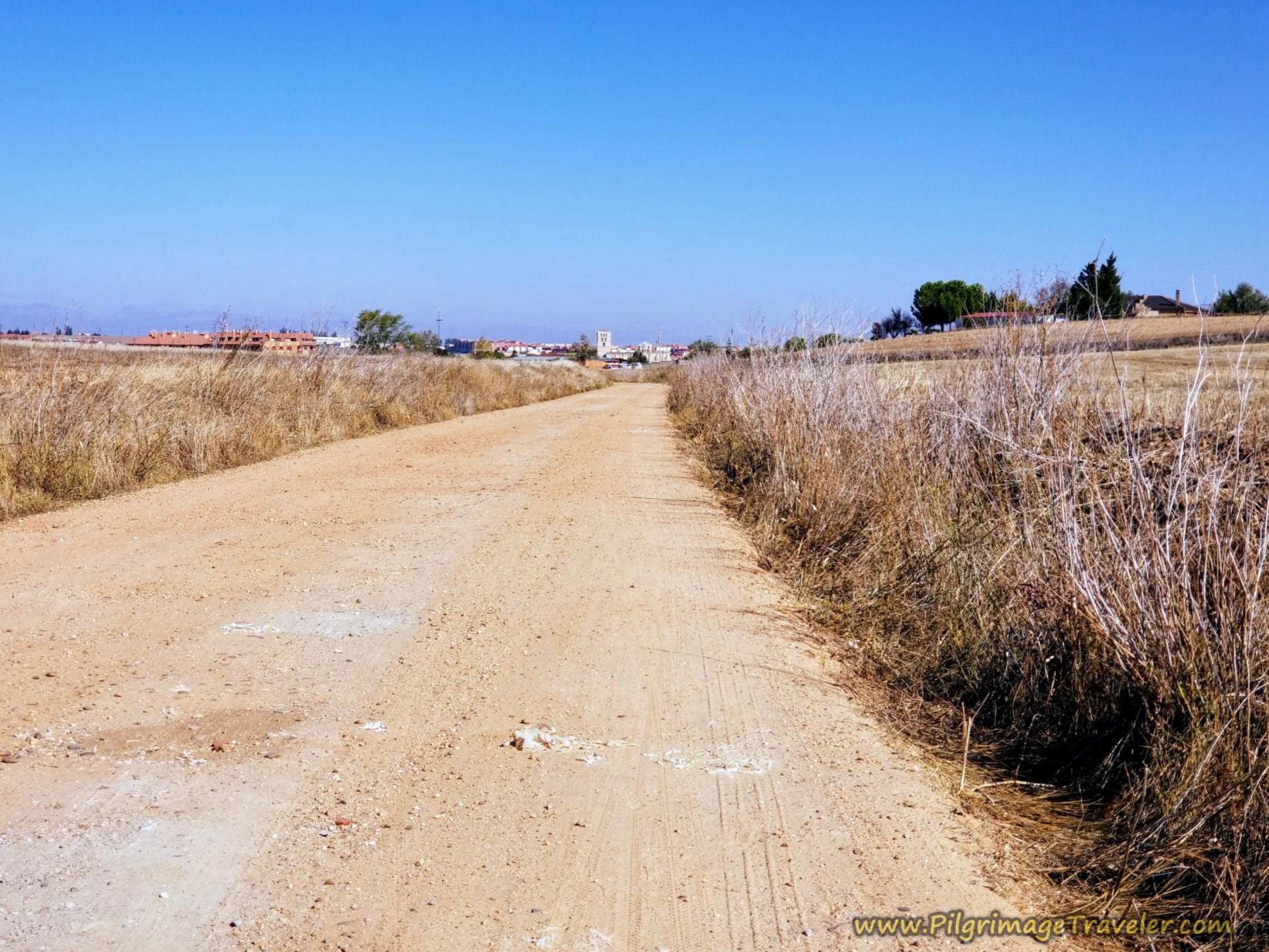 Zamora in Clear Sight Ahead
Zamora in Clear Sight AheadAfter 16.2 kilometers, the dirt road finally ends and pavement begins at a Y-intersection. Stay to the left and pass at this cement factory.
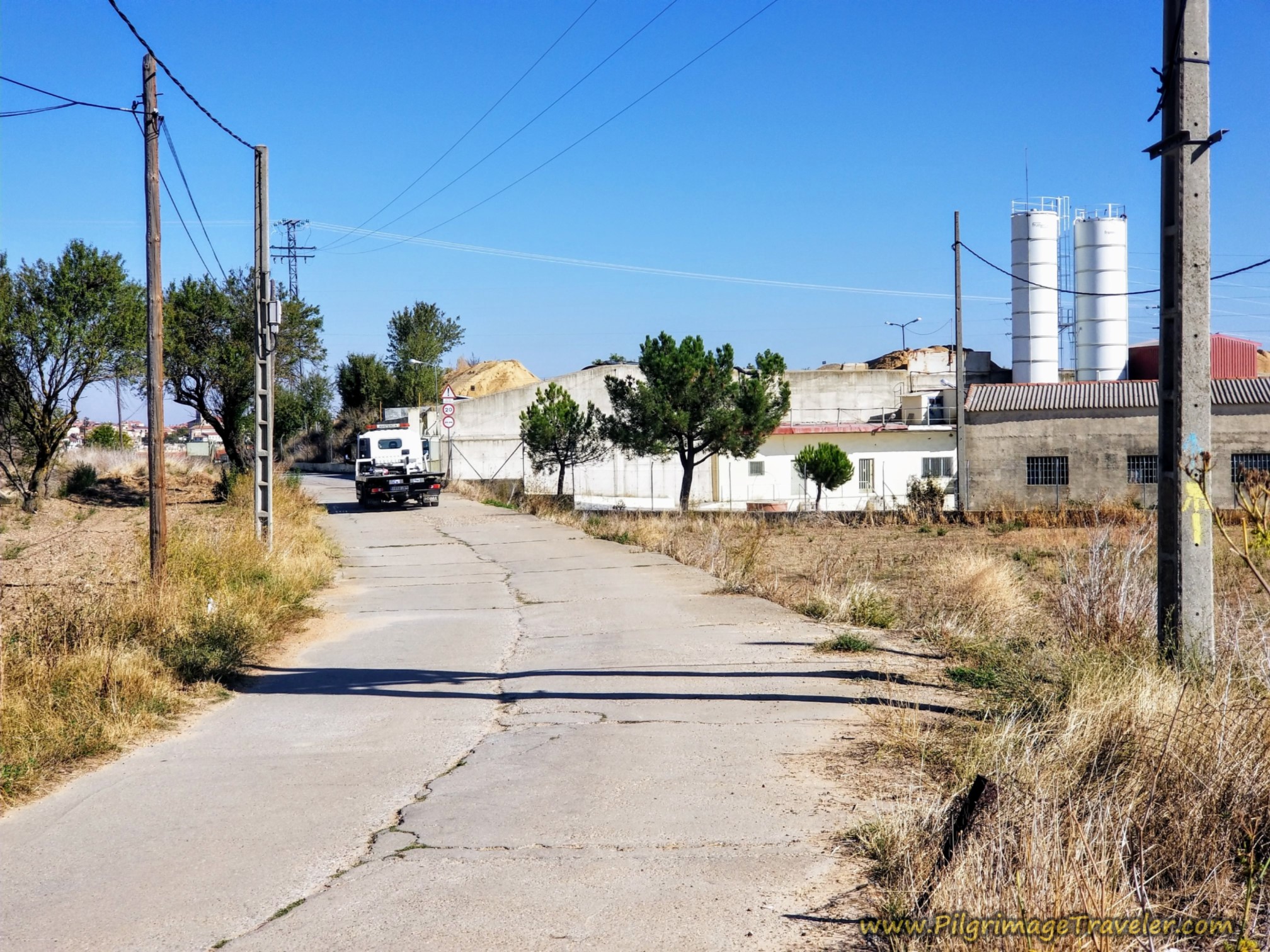 Pavement Begins at Cement Factory
Pavement Begins at Cement FactoryAfter about 16.4 kilometers, you cross the CL-527 highway, to see this Camino sign, below, leading you down the hill. The cathedral tower and rotunda are clearly in view.
The waymarking is very good coming into the city, with these large Camino signs giving you clear directions. There is also a red Senda del Duero sign claiming it is only 1.1 kilometers to Zamora from here.
After staying straight on at the last intersection, come to this next one in a few meters with a small roundabout. The large yellow building to the left in the photo, just after the roundabout is a bar, so if the timing is right for you, this is the very first one of the day that is directly along the Camino!
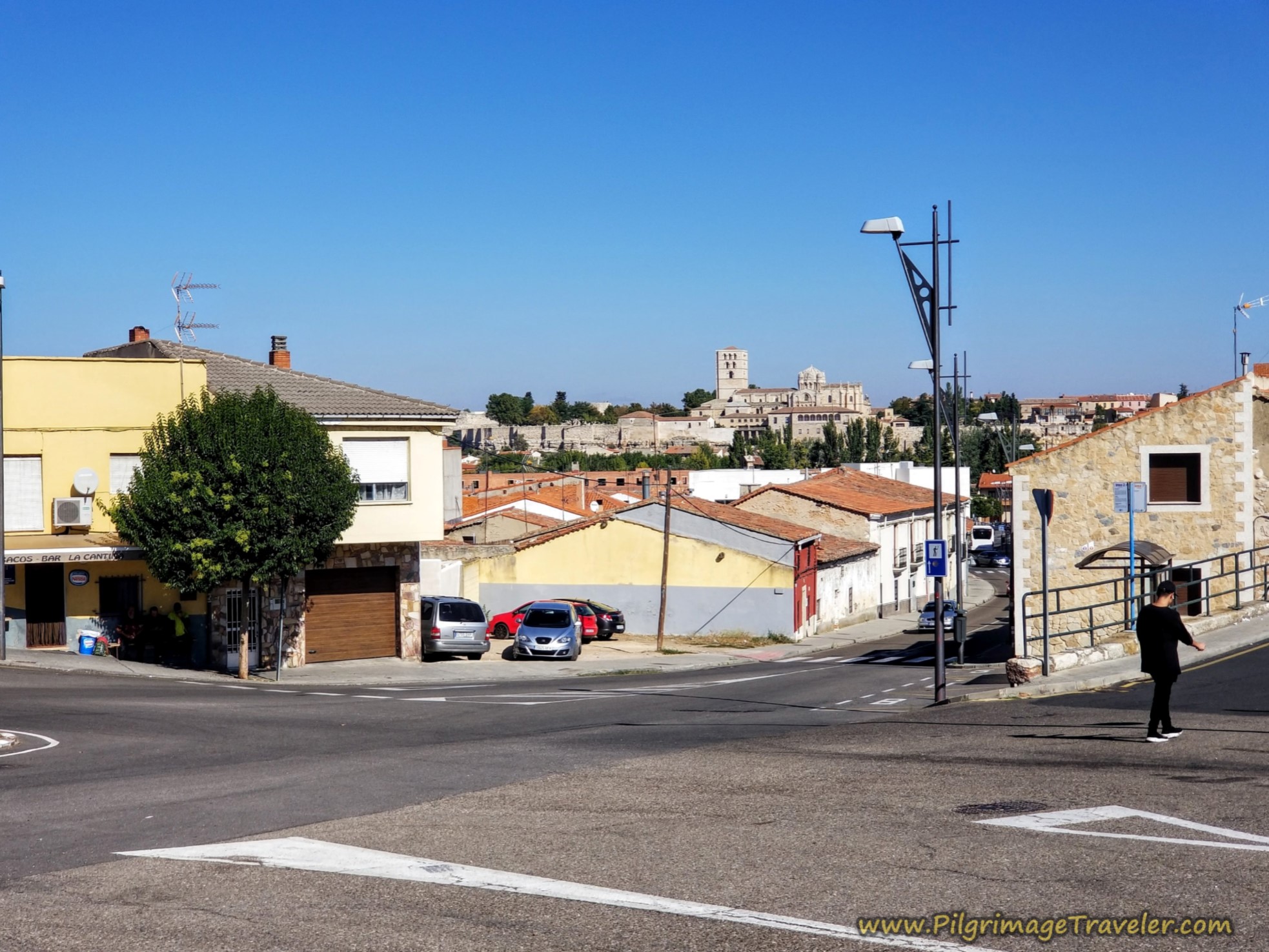 Cross Traffic Circle at Bar
Cross Traffic Circle at BarAfter you pass the bar, head straight down the hill for about 1/4 kilometer more, passing the landmark church, the Iglesia de San Frontis next.
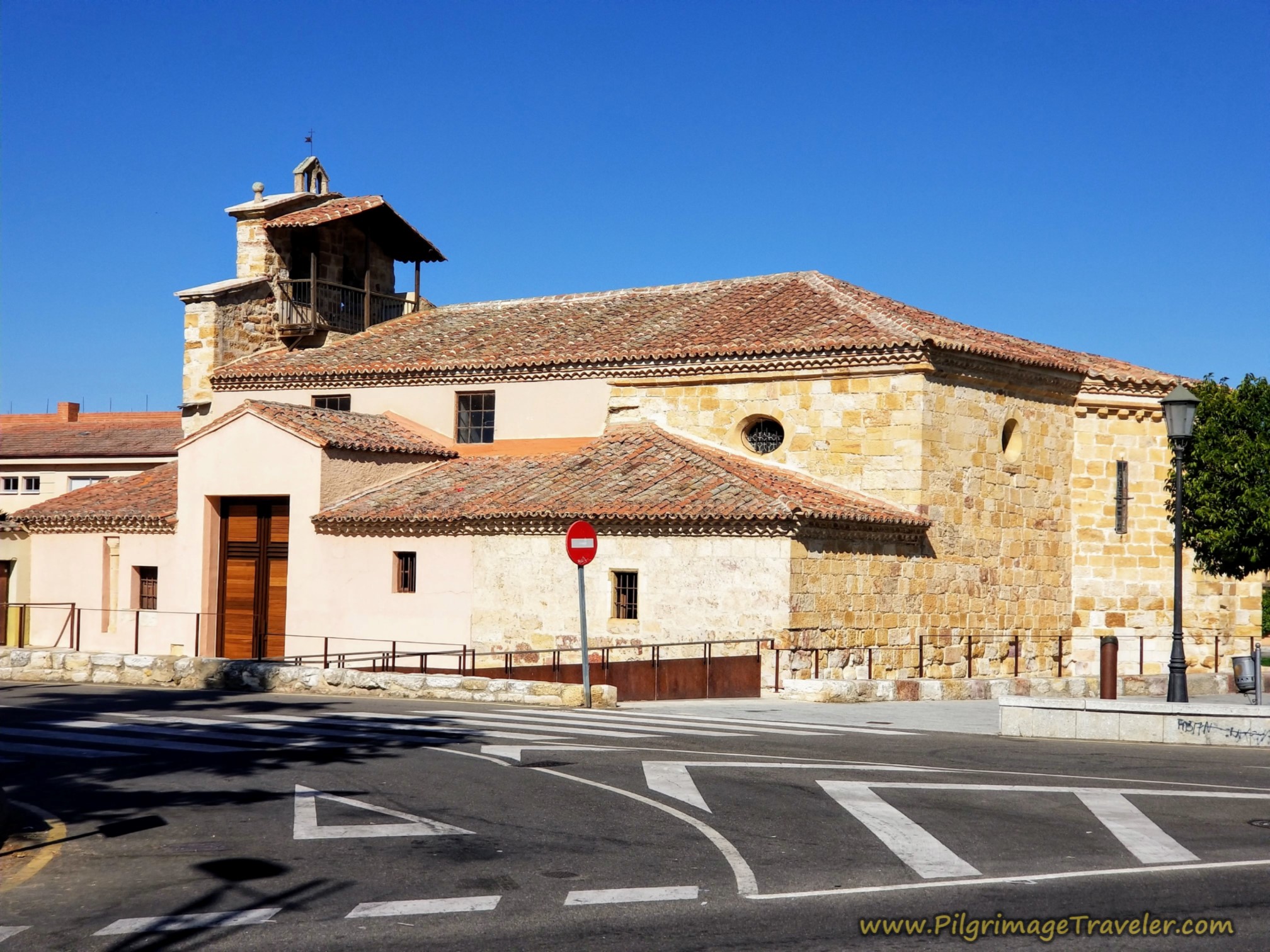 Pass by the Iglesia de San Frontis
Pass by the Iglesia de San FrontisBy 17 kilometers, after negotiating this large roundabout on its right side, you come to the Douro River waterfront promenade.
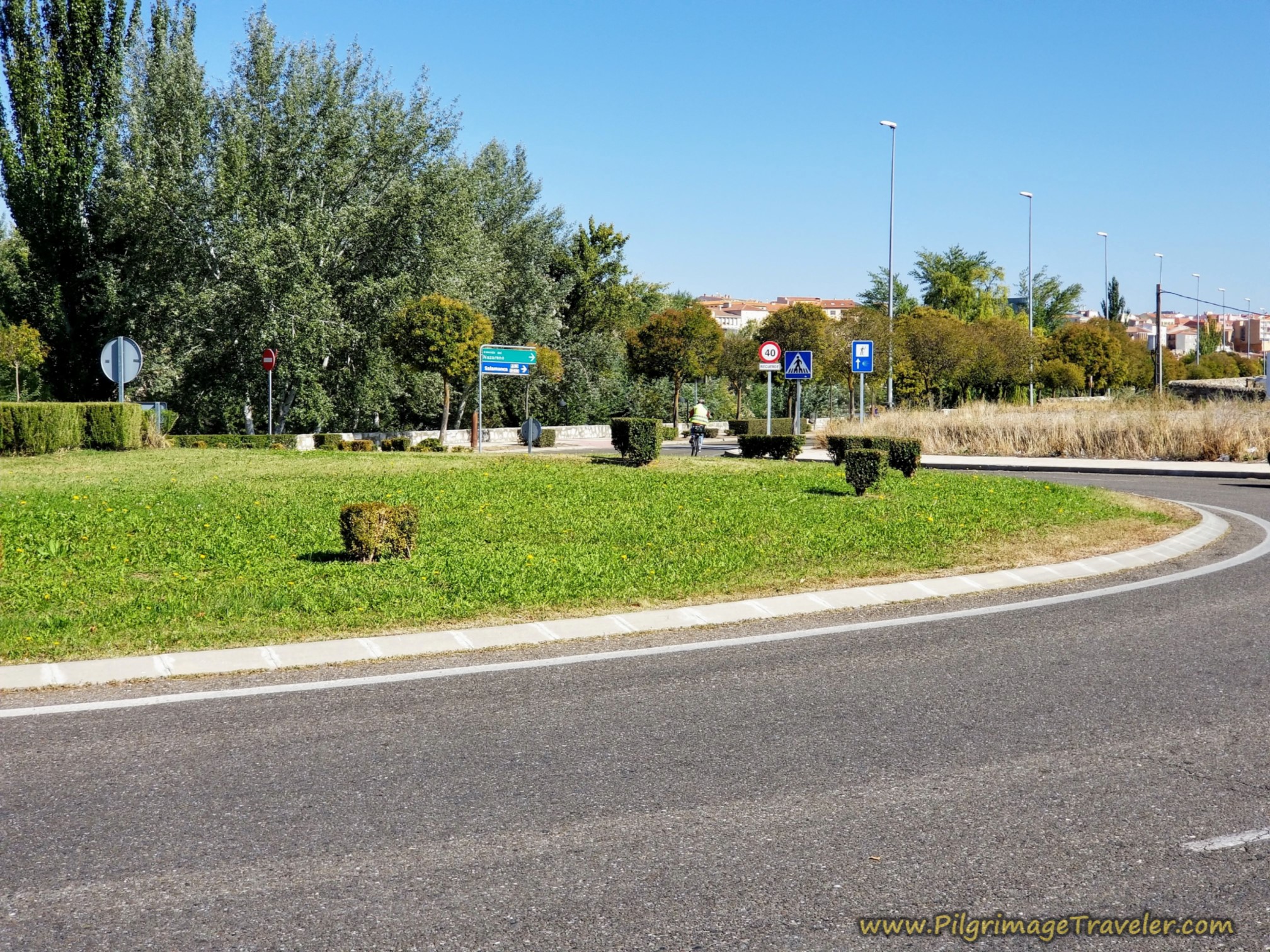 Turn to the Right Around the Large Traffic Circle
Turn to the Right Around the Large Traffic CircleThe promenade along the river is gorgeous and you get fantastic views of the fortified city, all the way along your walk. There is a pedestrian path above as well as below as you can see. But it is only the walk at the street level that brings you to the pedestrian bridge and into the city proper, farther along, so we stayed on it.
Jump to Vía de la Plata Stages
In the photo below, you can see the cathedral complex, towering above the fortress walls. You can also see the vestiges of the old Roman bridge jutting out of the water. There are quaint aceñas or old water mills just behind the old bridge, that are not discernable in the photo. Keep an eye out for all these features.
Just before the pedestrian bridge, is a nice public water fountain. If you are going through, or are desperate for water, here is your opportunity.
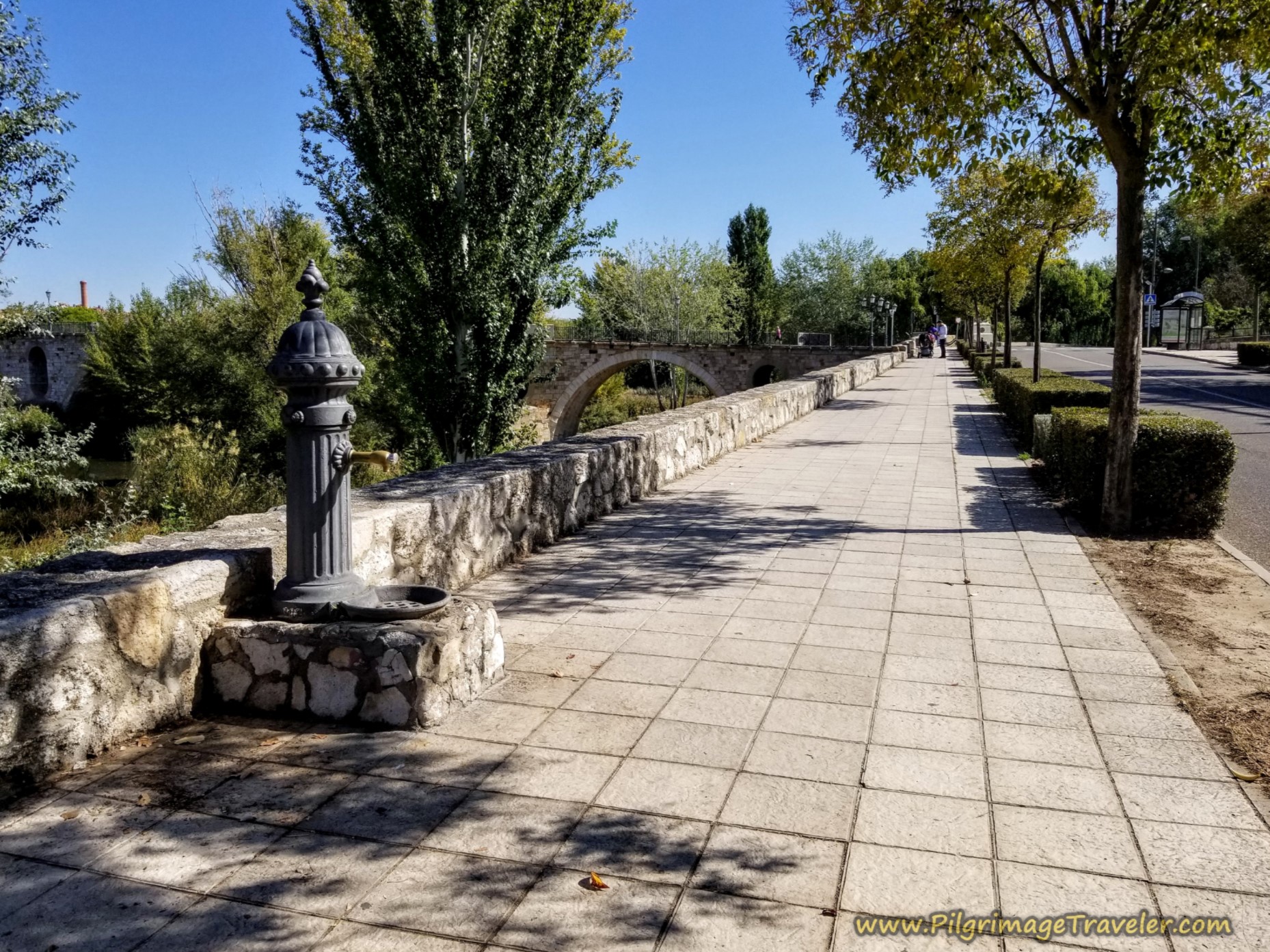 Water Fountain Along the River
Water Fountain Along the RiverAfter about 17.6 kilometers you come to the Puente de Piedra, the pedestrian footbridge, shown below. It was first built in the 13th century and was the main bridge into the city, by way of the Vía de la Plata.
The bridge was vastly improved in 1905, when two historic towers and all of the ornamentation was removed for easier access. Only the stones of the arches and piles are original, and yet they were also greatly retouched. There is a placard explaining this to you, in Spanish, and we paused to read the historic information that you will now see throughout the city.
We crossed the historic bridge on the final steps on the Vía de la Plata from Villanueva de Campeán to Zamora.
For me, the view of the city from the pedestrian bridge was the best of all!
After crossing, come to this well-signposted intersection...
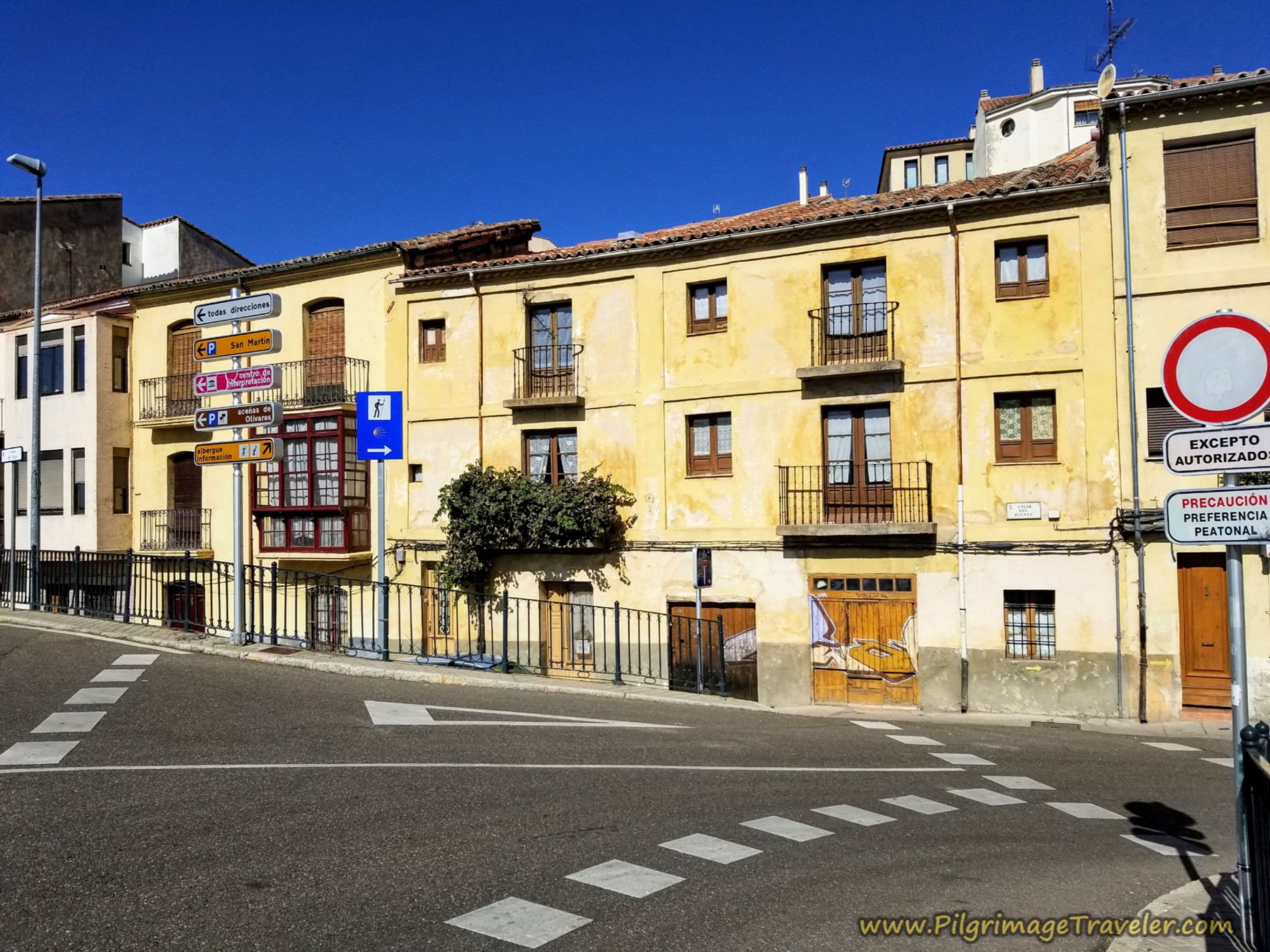 Cross Street Here After Bridge
Cross Street Here After Bridge...and make an immediate right turn onto the Calle Puente, the "Bridge Street." Now it is time to finish your day with a short walk up the hill on the other side.
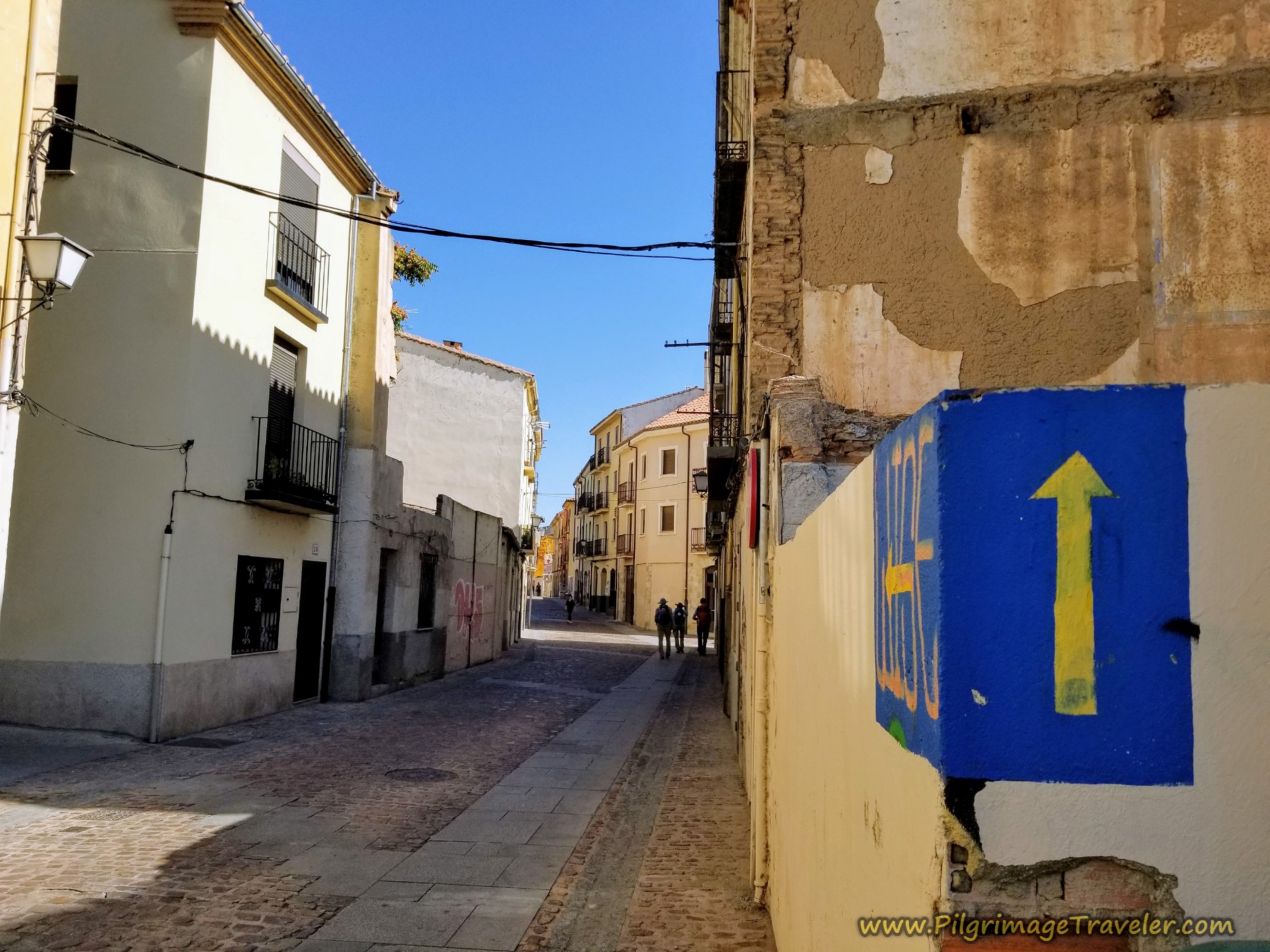 Right Turn onto the Calle Puente
Right Turn onto the Calle PuenteIn less than 100 meters you come to the Plaza Santa Lucía and its church.
After admiring the plaza and perhaps catching your breath, keep heading up the hill and around to the right side of the same church, taking a left at the wall shown below and toward a small museum on the uphill side. The castle walls are before you as you can see in the photo. This renovated wall is the support for the beautiful look-out above, the Mirador Del Ramos Carrión (see farther below).
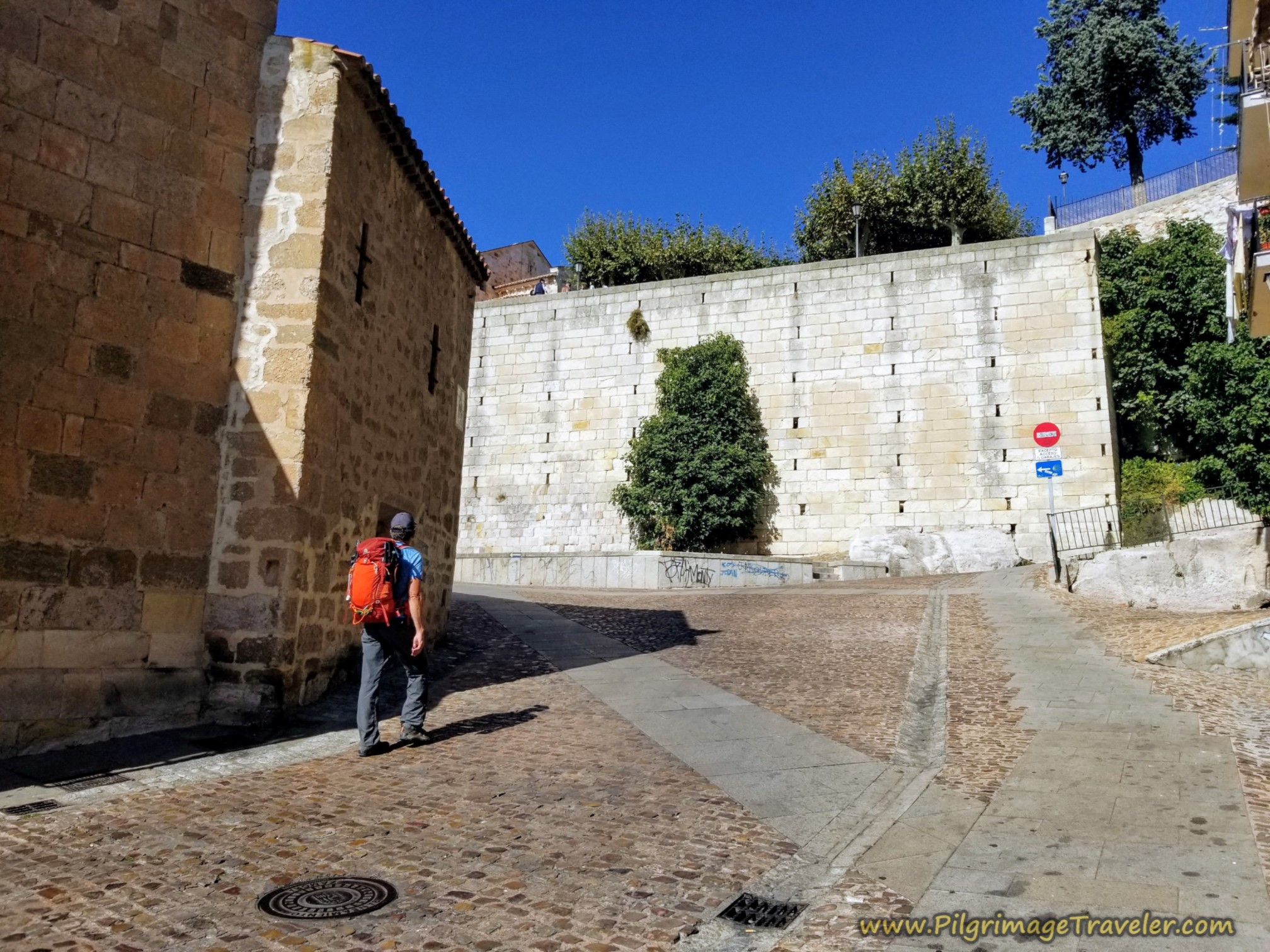 Climb Up the Hill by the Iglesia Santa Lucía
Climb Up the Hill by the Iglesia Santa LucíaKeep climbing the hill on the Calle San Cipriano until you see this bright yellow building on your right, and the sign next to the door says "Albergue de Peregrinos." This is the albergue, but not the entrance. Follow the signs onward, taking a right toward the church steeple ahead of you, the Iglesia de San Cipriano.
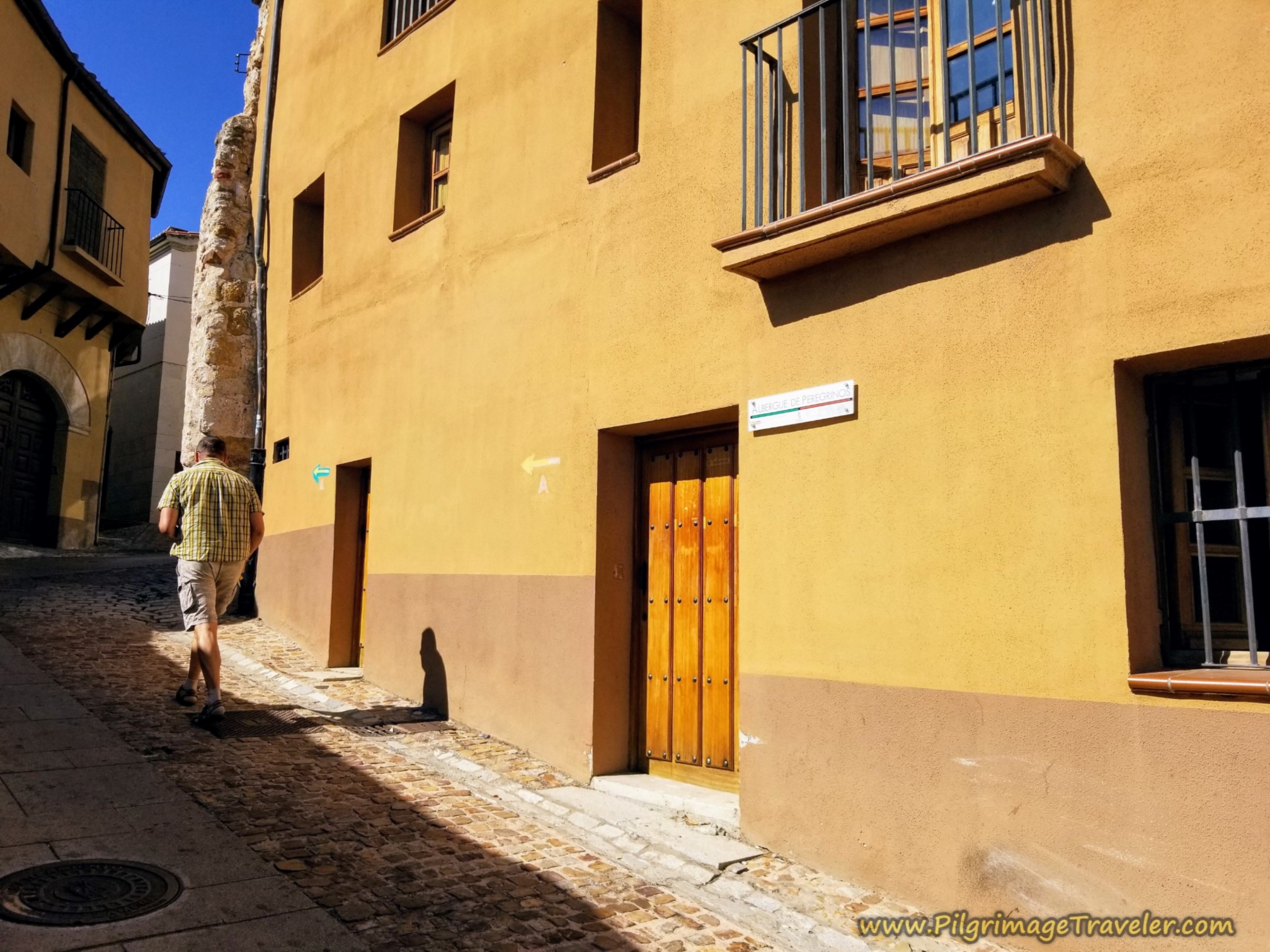 Albergue de Peregrinos on the Right
Albergue de Peregrinos on the RightThe Albergue de Peregrinos de Zamora entrance is shown below, seen on your right, immediately before the church building. Look for the white, Vía de la Plata pillar to the left of the door, that didn't make it into the photo below. This is where I turned off my GPS for the day.
It is posted that it opens at 2:30, but in our experience they opened before that.
The albergue is in an amazing, historic building, built right into the wall of the city. It is a donativo, so please give generously to this fantastic, accommodating and well-equipped place.
It has at least 32 beds in various room configurations of 16, 8, 4 and 4. The hospitaleros state they can open even more rooms if needed. They supply real sheets, soap in the bathrooms and for clothes washing. There is a lovely, well-stocked kitchen in the basement, with a community breakfast available in the adjacent dining room, also for a donation.
By the church next door to the albergue, the Iglesia de San Cipriano, lies a passageway leading to a lookout, the Mirador Del Ramos Carrión shown below. It is a gorgeous place, looking out over the river, not visible in the photo, but to the left of the church, where you can sit and contemplate life and the meaning of your Camino.
This is where we waited for the albergue to open, when we arrived around 1:00 in the afternoon.
The albergue is centrally located between the Plaza Mayor to the east, and the historic attractions a short walk to the west. There are tiendas and cafés just down the street.
There are many, many places to stay in Zamora, as you might expect. Click the link for current deals on booking.com. Thank you for your support. There are not a lot of economical places to stay in Zamora, unless you are willing to stay on the outskirts of town and then there are plenty, especially beyond the historic wall to the north. A few of these are the Hostal Don Rodrigo, the Hostal Sol and the Hotel Doña Urraca. They are as economical as it gets in this town.
Near the center, not far from the albergue is the Hotel Hosteria Real Zamora, along the river to the west and and north of the cathedral is the Hostal La Reina, +34 623 40 79 68. You may want to try these as well.
I was surprised with the numbers of pilgrims that showed up at the albergue, when it felt like the Camino was most deserted. Perhaps they were beginning their Camino here?
After cleaning up and doing our laundry, we headed out to the main plaza for a bite to eat and a beer, in the afternoon.
The Plaza Mayor is lined with cafés as you might expect. The Iglesia de San Juan Bautista dominates the plaza, shown below.
There is so very much to see in Zamora. Click on the link to see all the wonders it offers! After our break, we decided to explore the rest of town, the castle and the churches.
After our extensive tour of the town, we cooked a meal together in the albergue and fell into bed early, completely exhausted. I did not measure the additional steps we took exploring town, but a good guess would be somewhere between 3-4 more kilometers. Not so short a day afterall.
Reflections of Day Three on the Vía de la Plata, Villanueva de Campeán to Zamora
I was happy to have this day as a short one, as the town of Zamora deserves at least a day or more of exploration, if you have the time.
As I alluded above, I was growing a bit weary of the group walking, only three days into the Camino Fonseca. I wasn't sure how much of my attitude was also because I was growing weary of the monotonous landscape. My husband and I had completed an additional five days beforehand on the Camino Teresiano, across more of the high meseta. This would bring the count up to eight days.
I did long for mountains, cooler days and more interesting landmarks, that was for sure.
Whatever the reason, I was happy to seek some solitude on my walk on this day. My musings filled my head and allowed for precious little emptiness. Whether or not I experienced Presence, if only for brief moments, my desire was there and it was always waiting for me. And so it is.
Salutation
May your own day three on the Vía de la Plata from Villanueva de Campeán to Zamora be filled with listening to your own still, small voice, through seeking solitude and Presence on the lonely, high plateaus of central Spain. Ultreia!
Camino Fonseca Stages
~ Vía de la Plata Stages from Salamanca
~ Camino Sanabrés Stages
Please Consider Showing Your Support
Many readers contact me, Elle, to thank me for all the time and care that I have spent creating this informative website. If you have been truly blessed by my efforts, have not purchased an eBook, yet wish to contribute, I am exeedingly grateful. Thank you!
Search This Website:
🙋♀️ Why Trust Us at the Pilgrimage Traveler?

We’re not a travel agency ~ we’re fellow pilgrims! (See About Us)
We've trekked Pilgrimage Routes Across Europe since 2014!
💬 We’ve:
- Gotten lost so you don’t have to. 😉
- Followed waymarks in the glowing sunlight, the pouring rain and by moonlight. ☀️🌧️🌙
- Slept in albergues, hostels & casa rurals. Ate and drank in cafés along the way. 🛌 😴
- Created comprehensive and downloadable GPS maps and eBook Guides, full of must-have information based on real pilgrimage travels. 🧭 🗺️
- Shared our complete journeys, step by step to help YOU plan your ultimate pilgrimage and walk with your own Heart and Soul. 💙✨
Every detail is from our own experiences. Just fellow pilgrims sharing the Way. We have added a touch of spirituality, heartfelt insights and practical guidance from the road ~ offering a genuine connection to the spirit of pilgrimage. Tap into the wisdom of seasoned pilgrims!
Ultreia and Safe Pilgrimage Travels, Caminante! 💫 💚 🤍
Follow Me on Pinterest:
Find the Pilgrimage Traveler on Facebook:
Like / Share this page on Facebook:
***All Banners, Amazon, Roamless and Booking.com links on this website are affiliate links. As an Amazon associate and a Booking.com associate, the Pilgrimage Traveler website will earn from qualifying purchases when you click on these links, at no cost to you. We sincerely thank you as this is a pilgrim-supported website***
PS: Our eBook Guide books are of our own creation and we appreciate your purchase of those too!!
Shroud Yourself in Mystery, along the Via de Francesco!
Walk in the Footsteps of St. Francis, and Connect Deeply with the Saint and to Nature in the Marvelous Italian Countryside!
Need suggestions on what to pack for your next pilgrimage? Click Here or on the photo below!
Find the Best Hotel Deals Using This Tool!
Carbon Trekking Poles ~ My Favorites!
Carbon fiber construction (not aluminum) in a trekking pole makes them ultra lightweight. We like the Z-Pole style from Black Diamond so we can hide our poles in our pack from potential thieves before getting to our albergue! There are many to choose from! (See more of our gear recommendations! )
Gregory BackPack ~ My Favorite Brand
Do not forget your quick-dry microfiber towel!

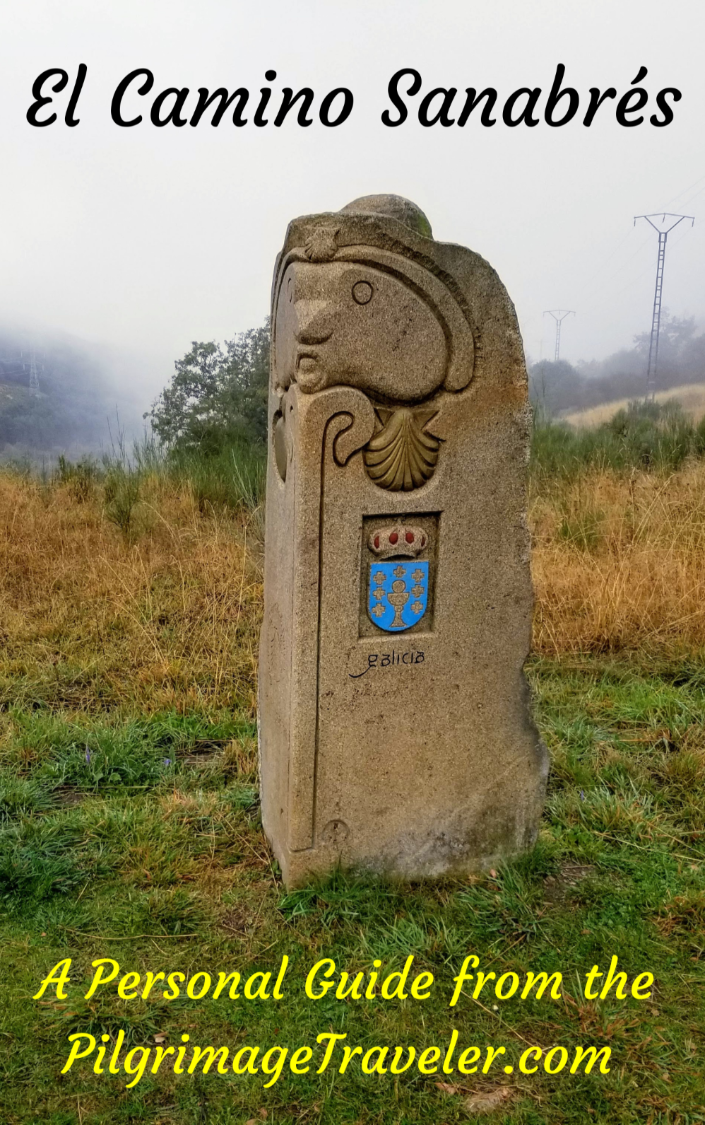
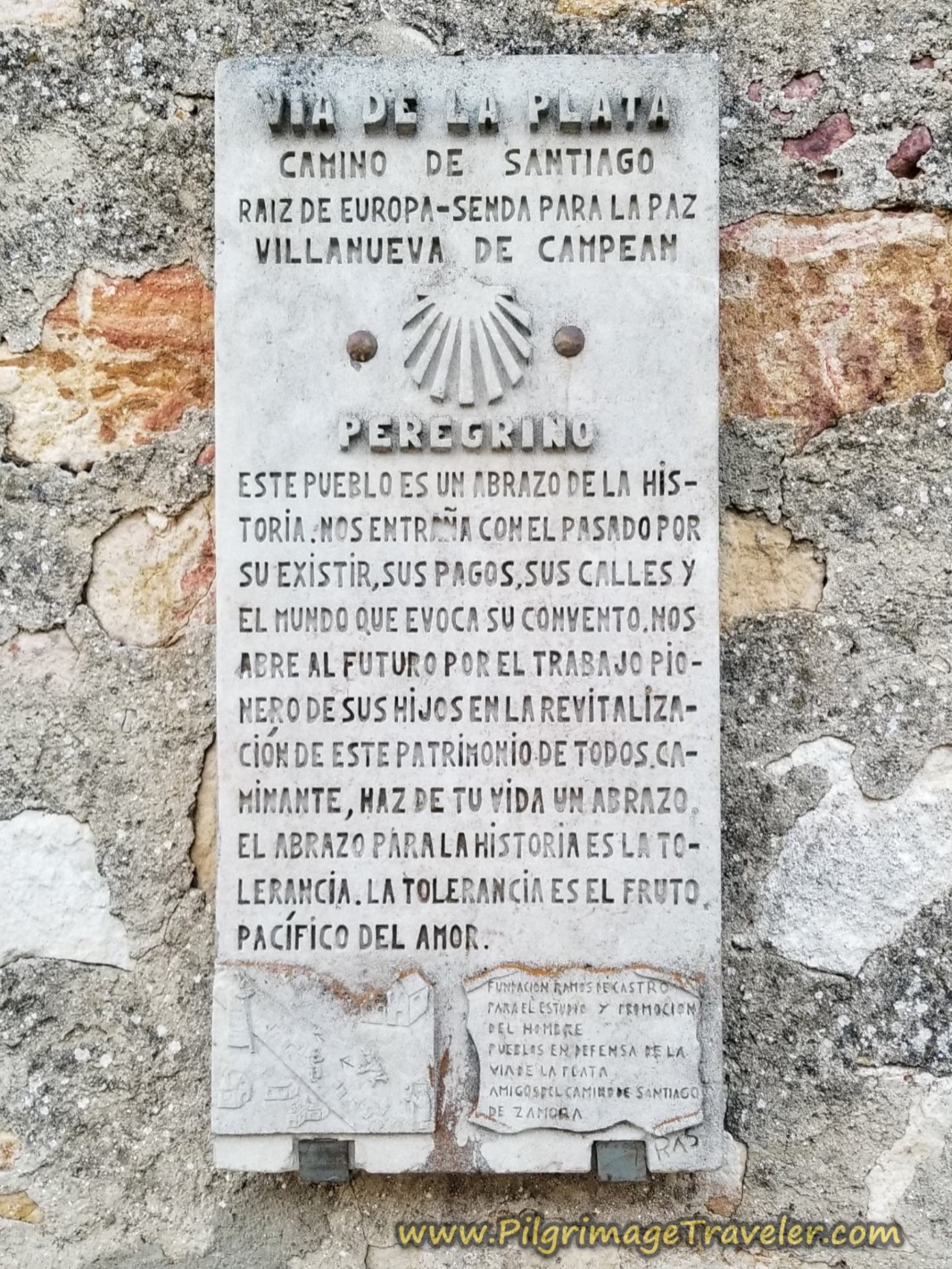
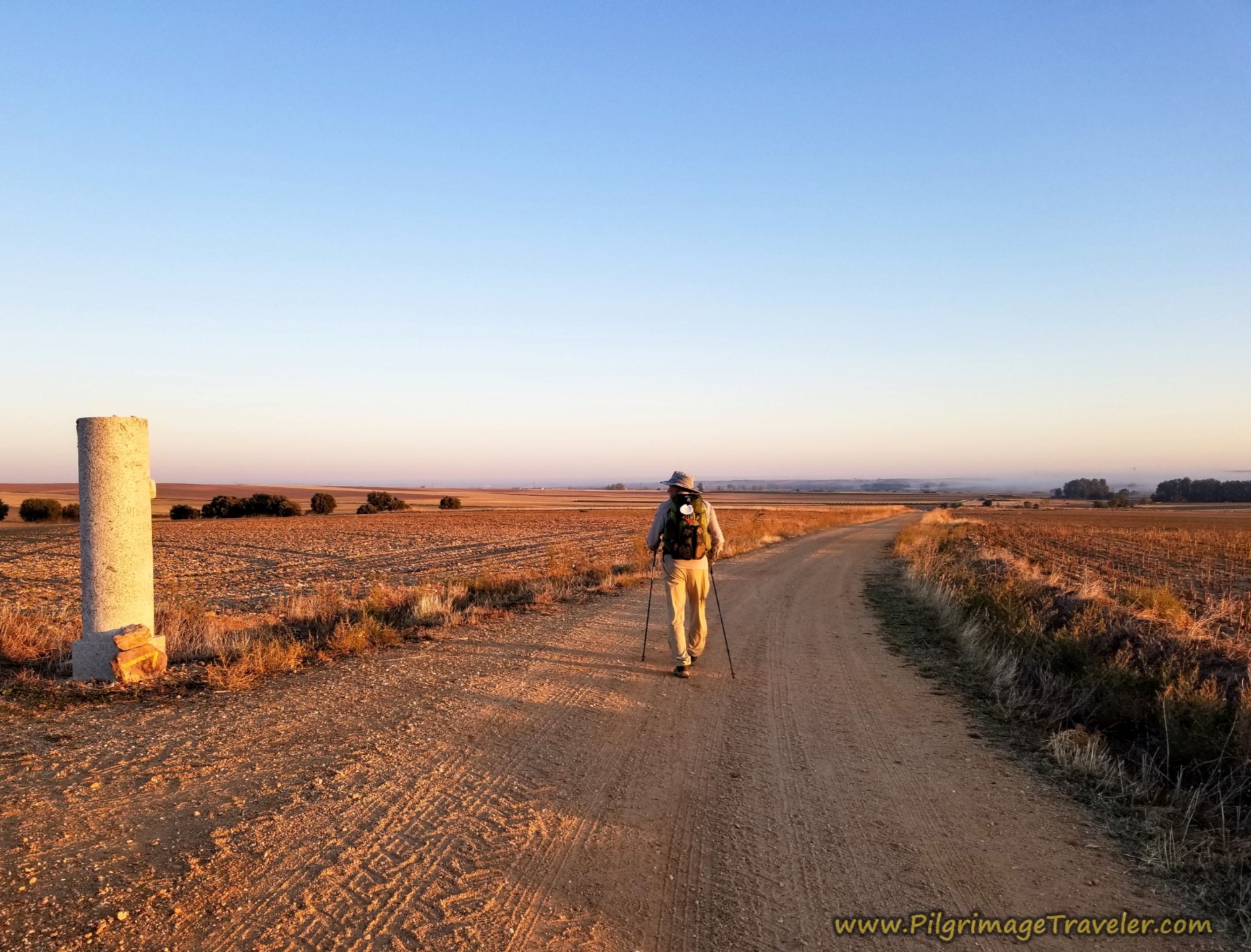
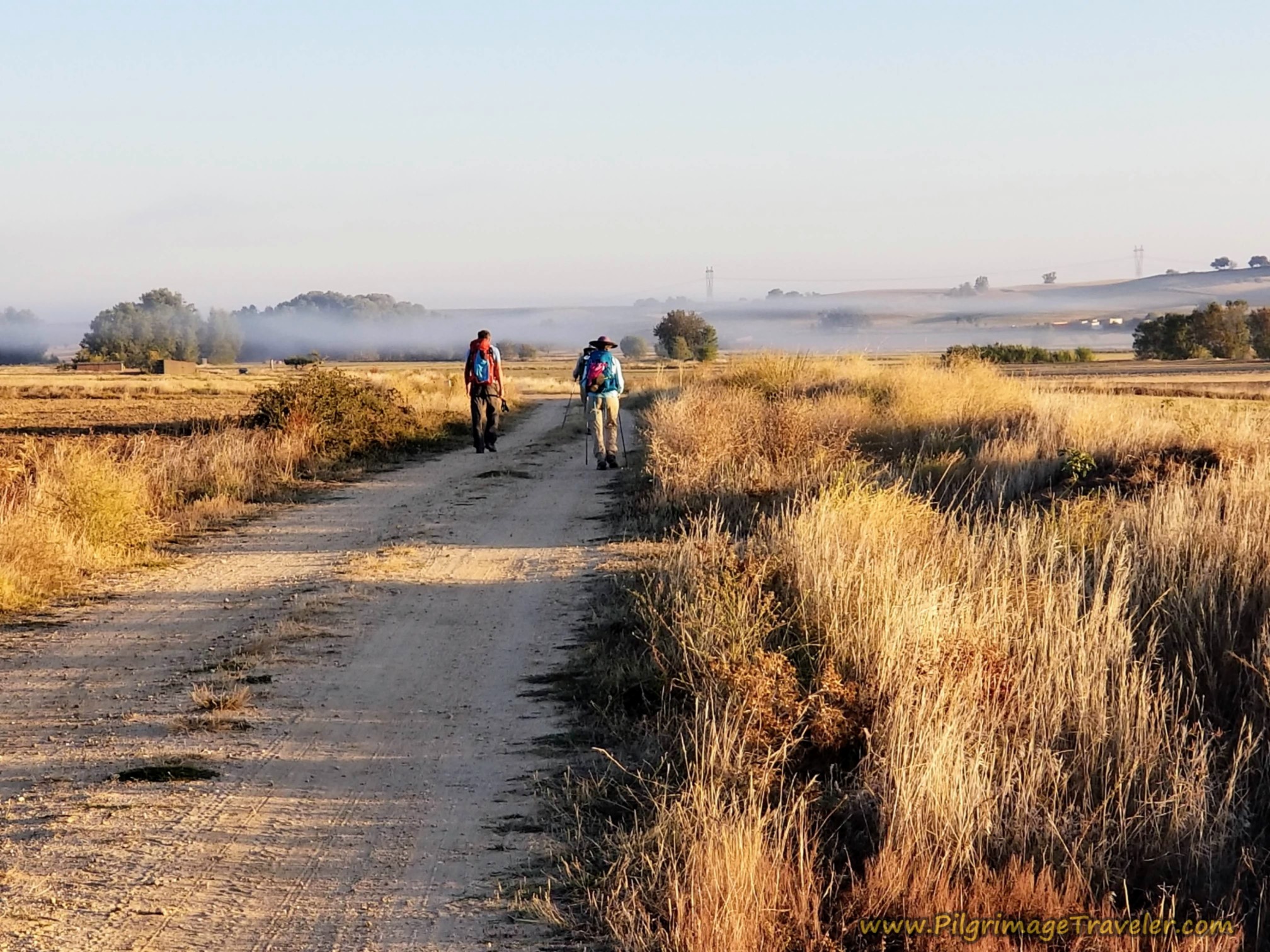
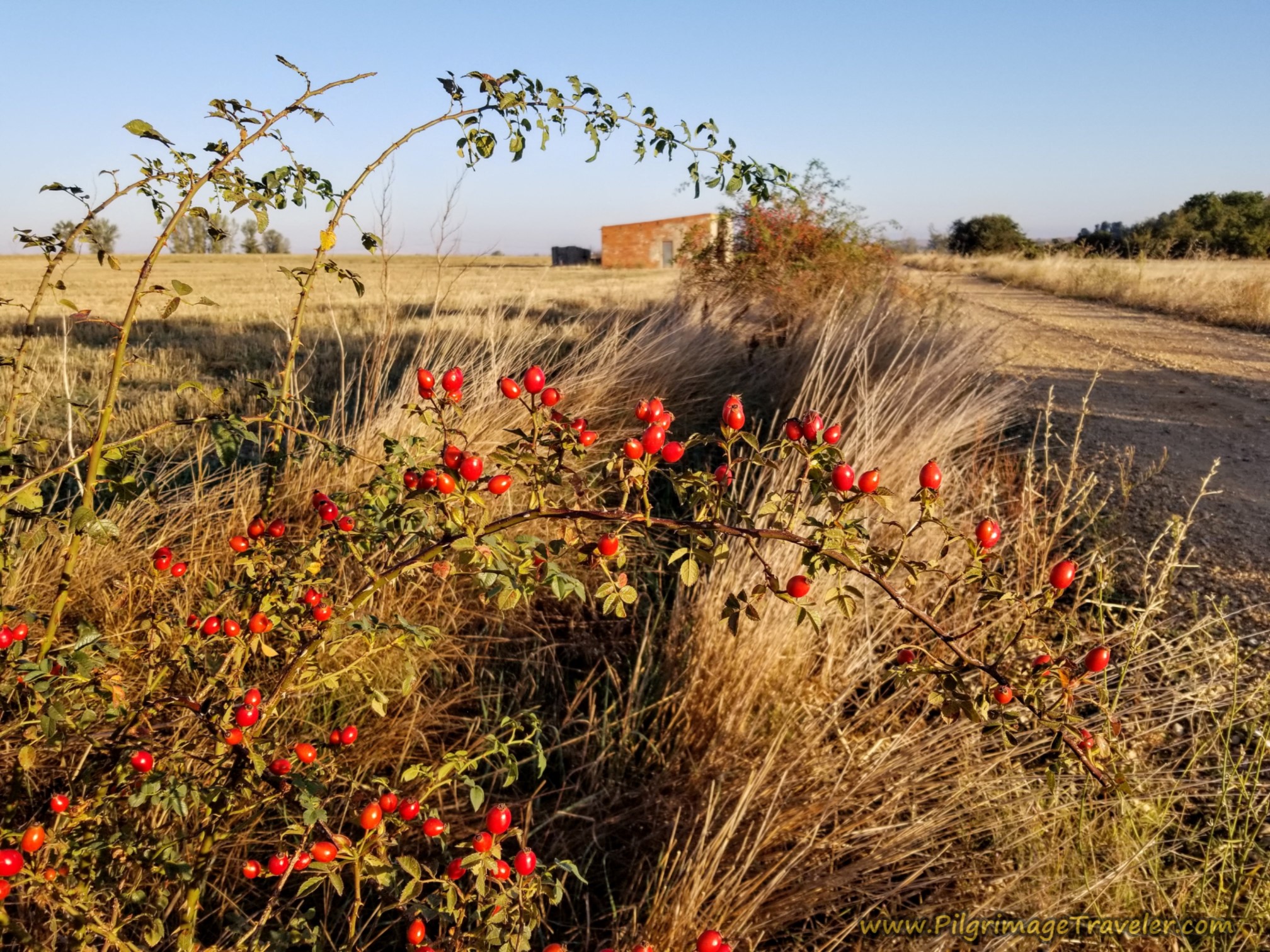
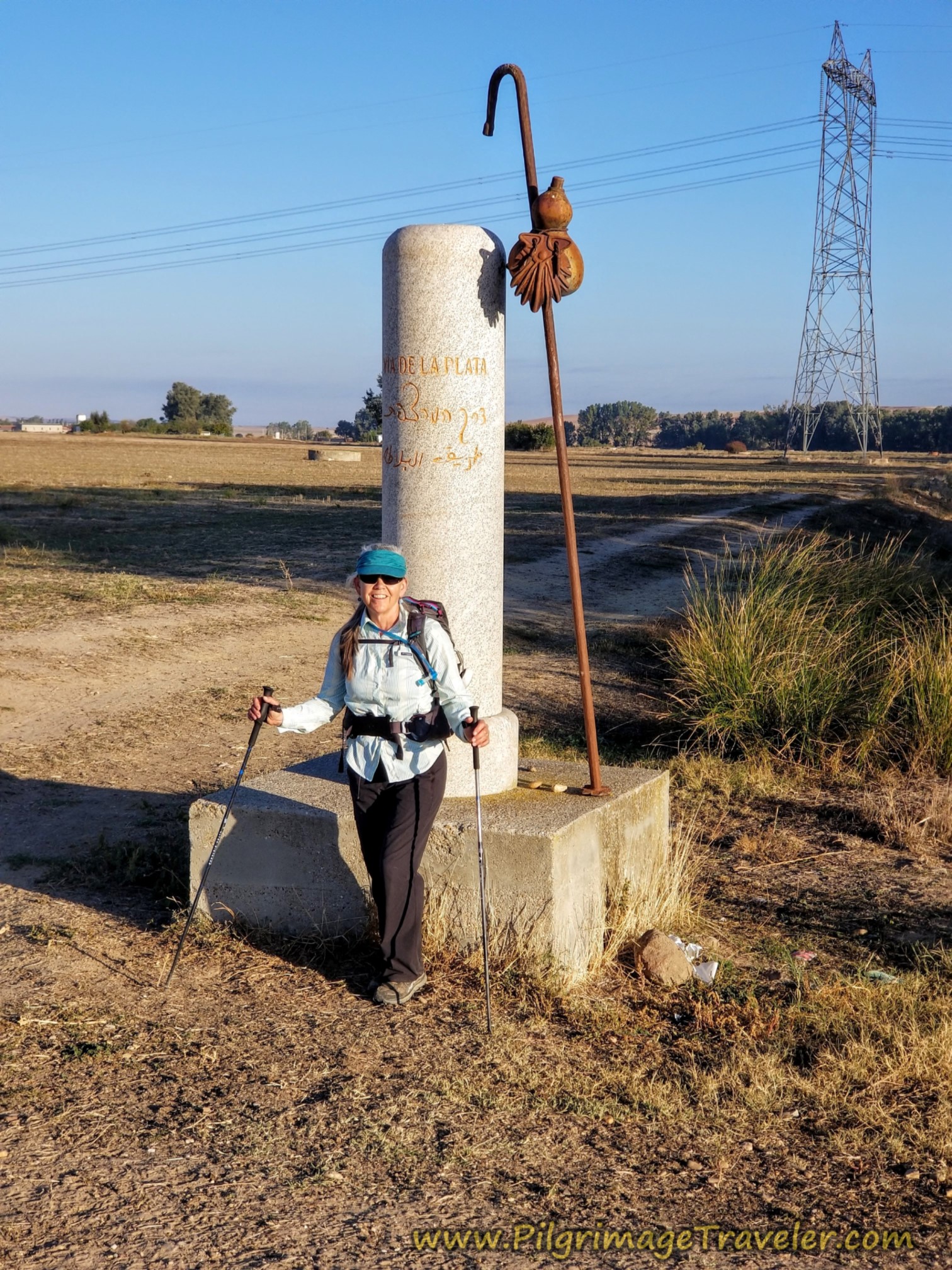
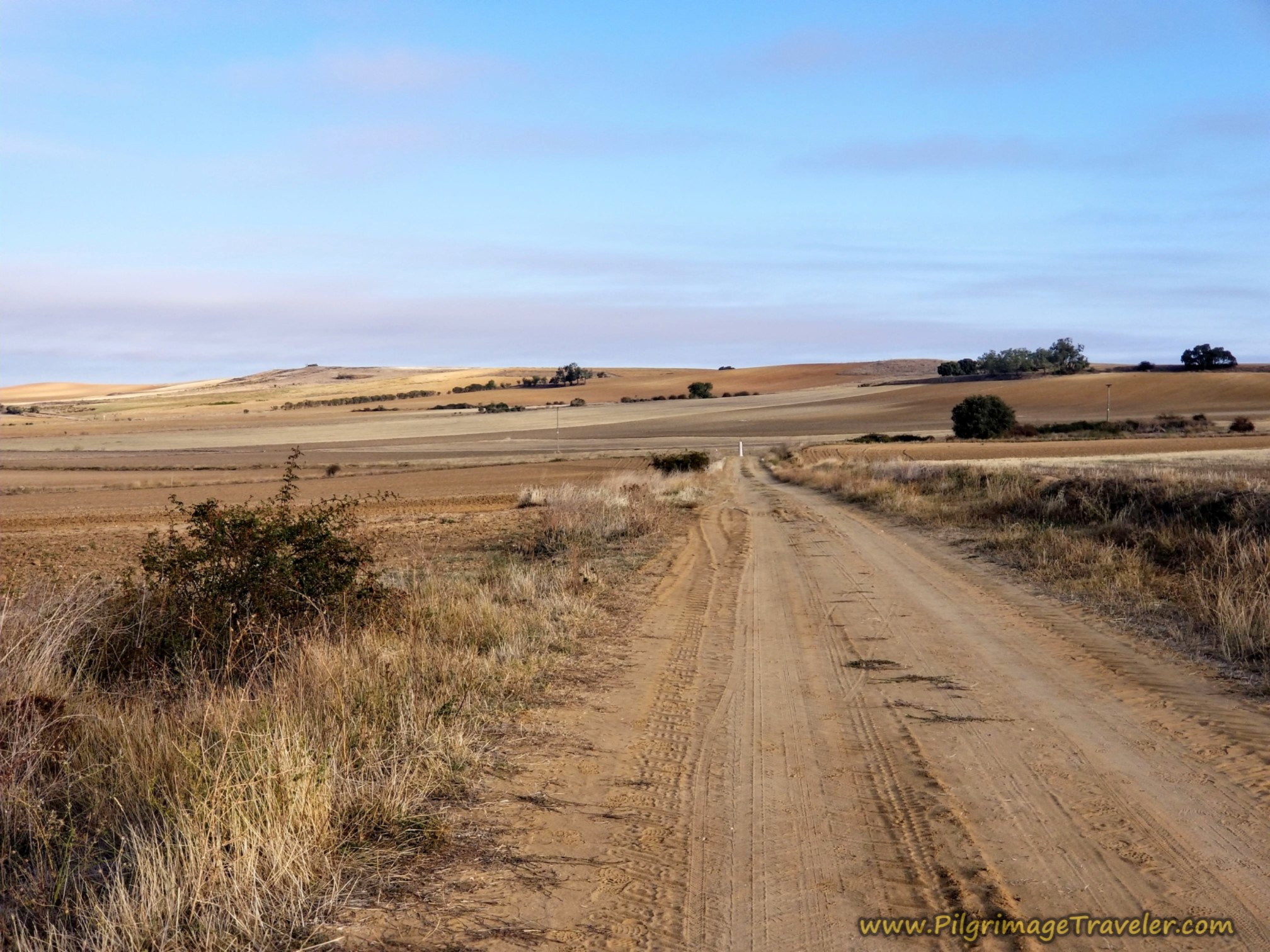
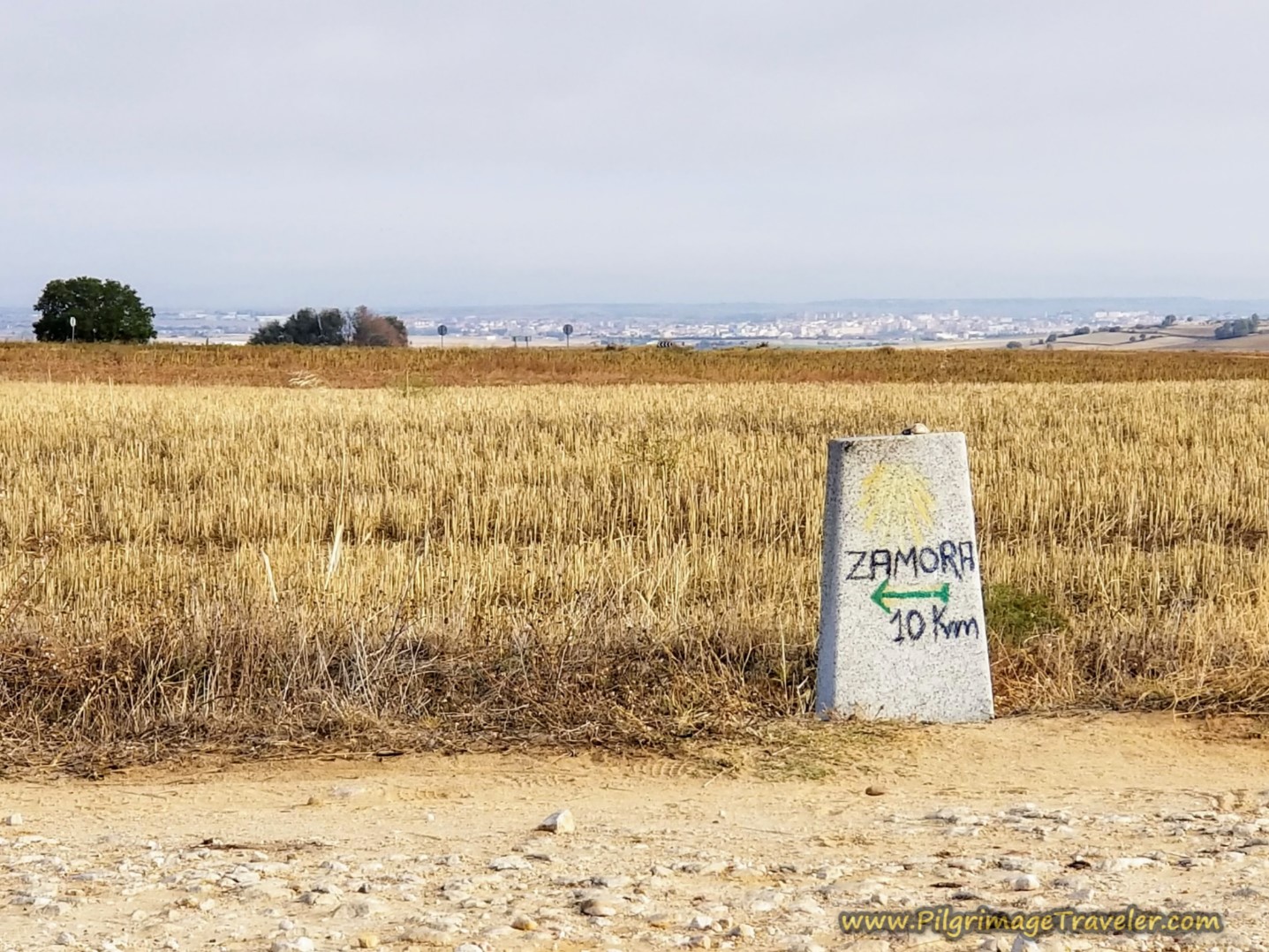
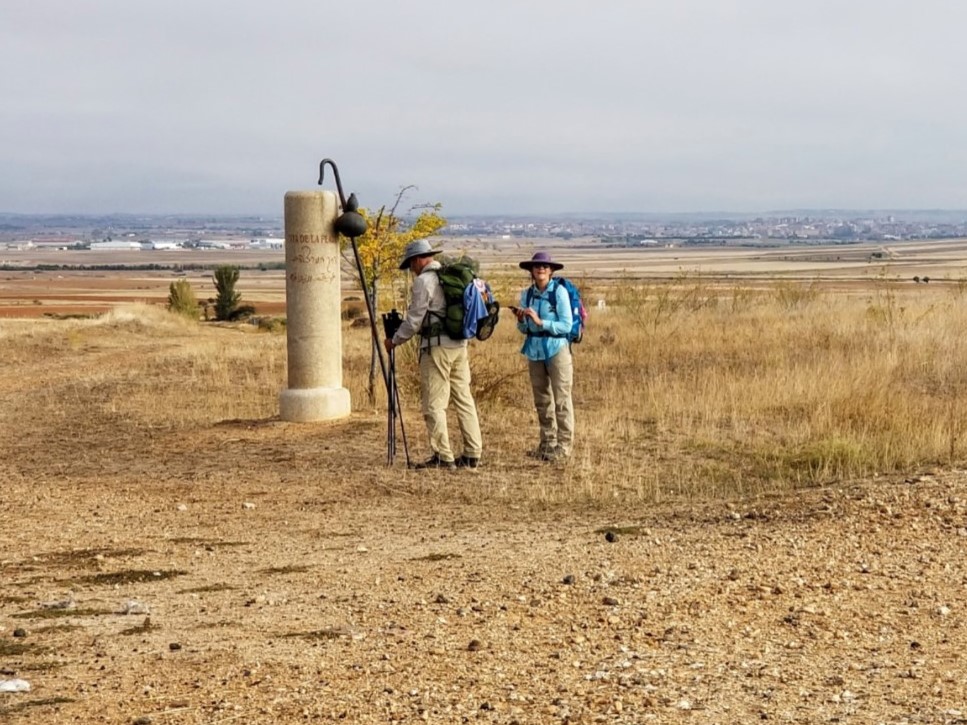
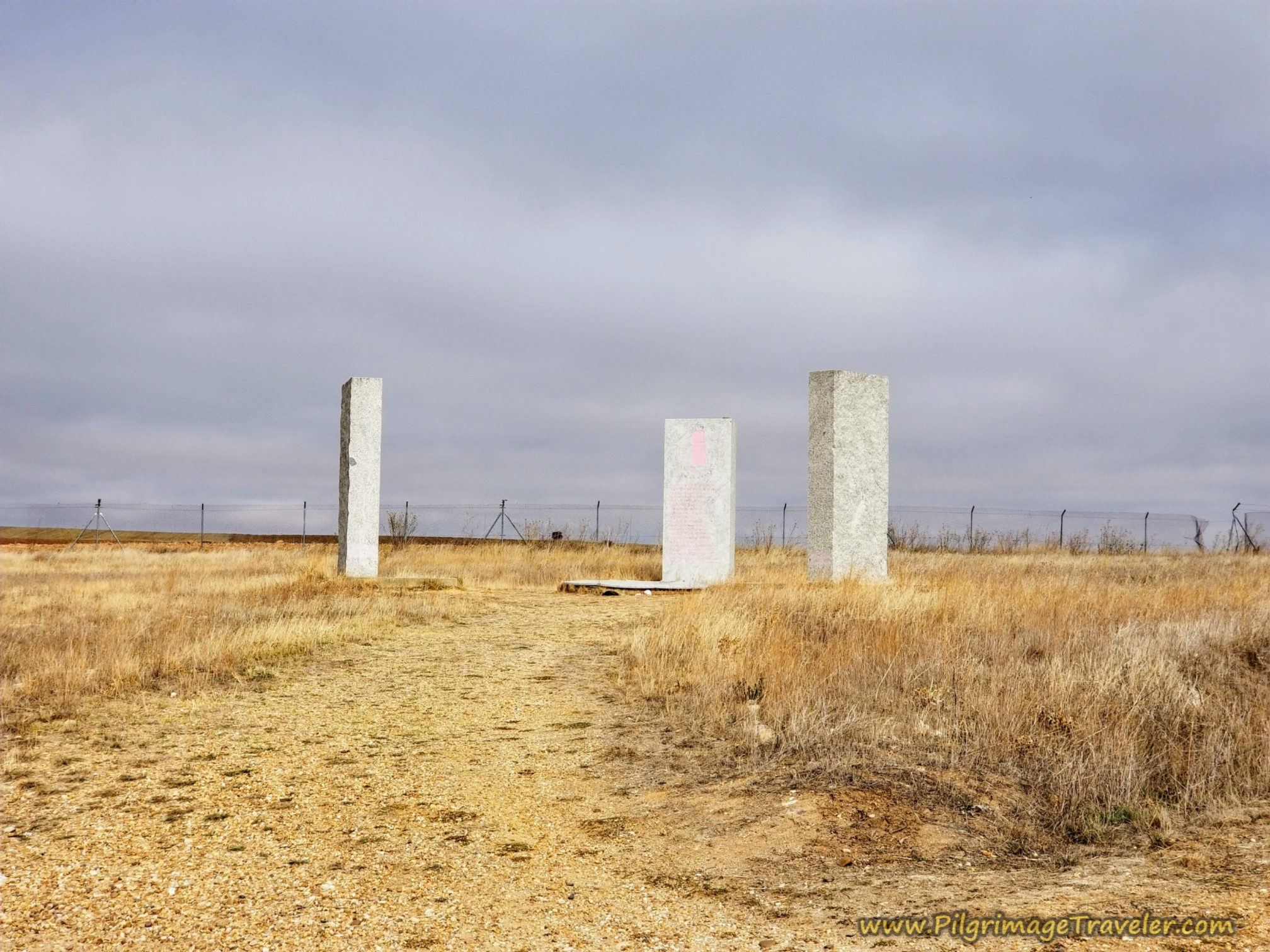
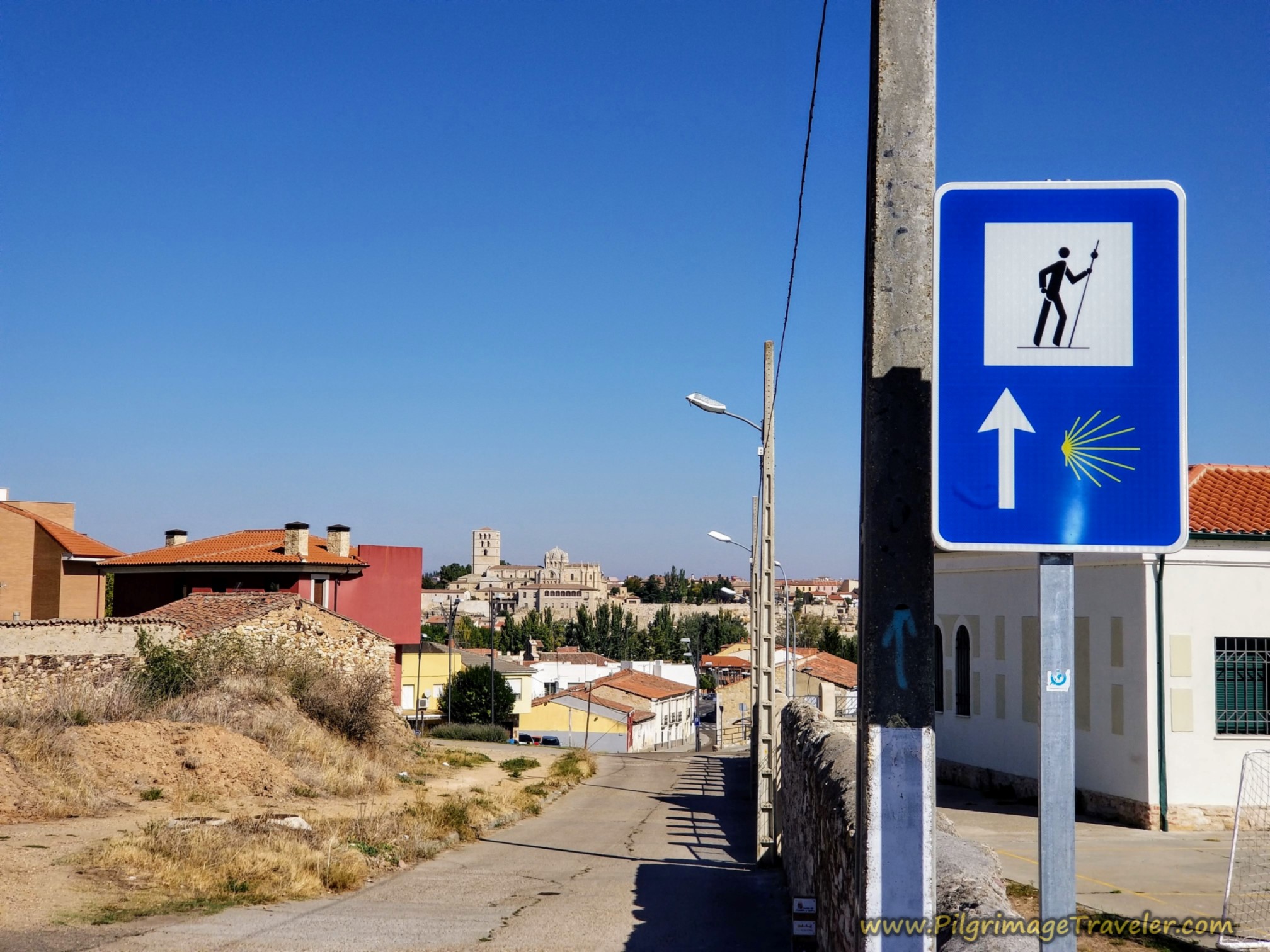
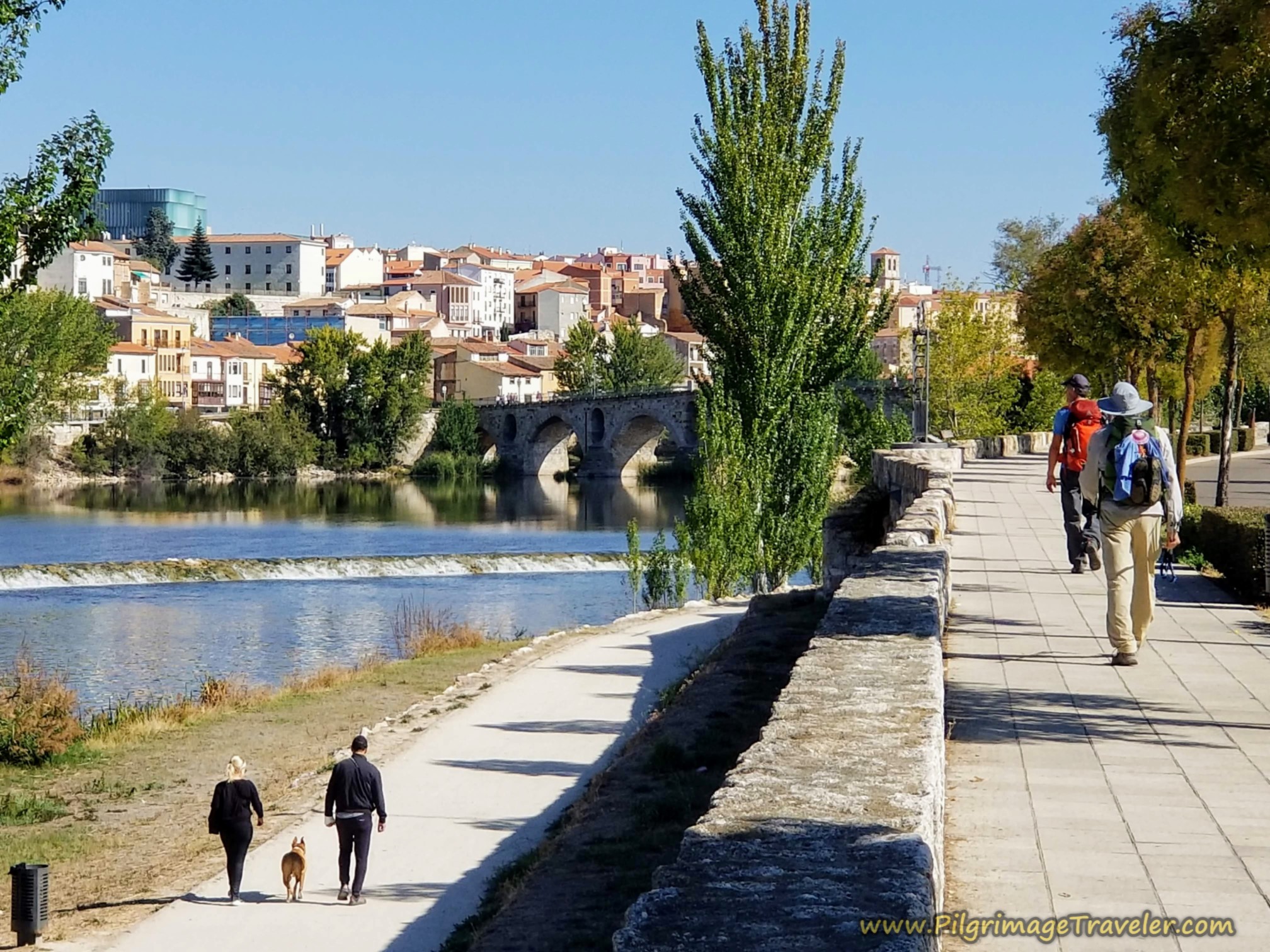
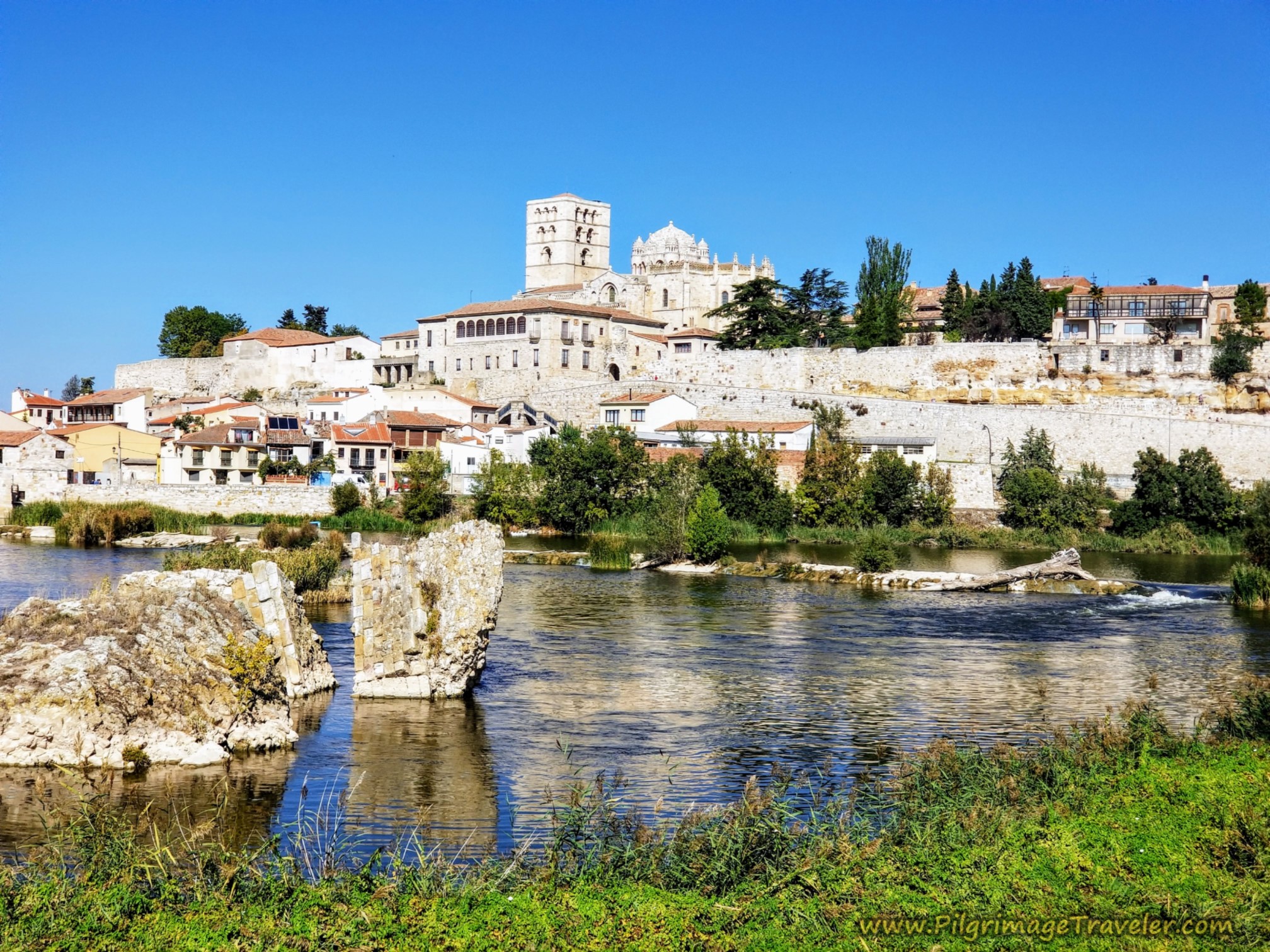
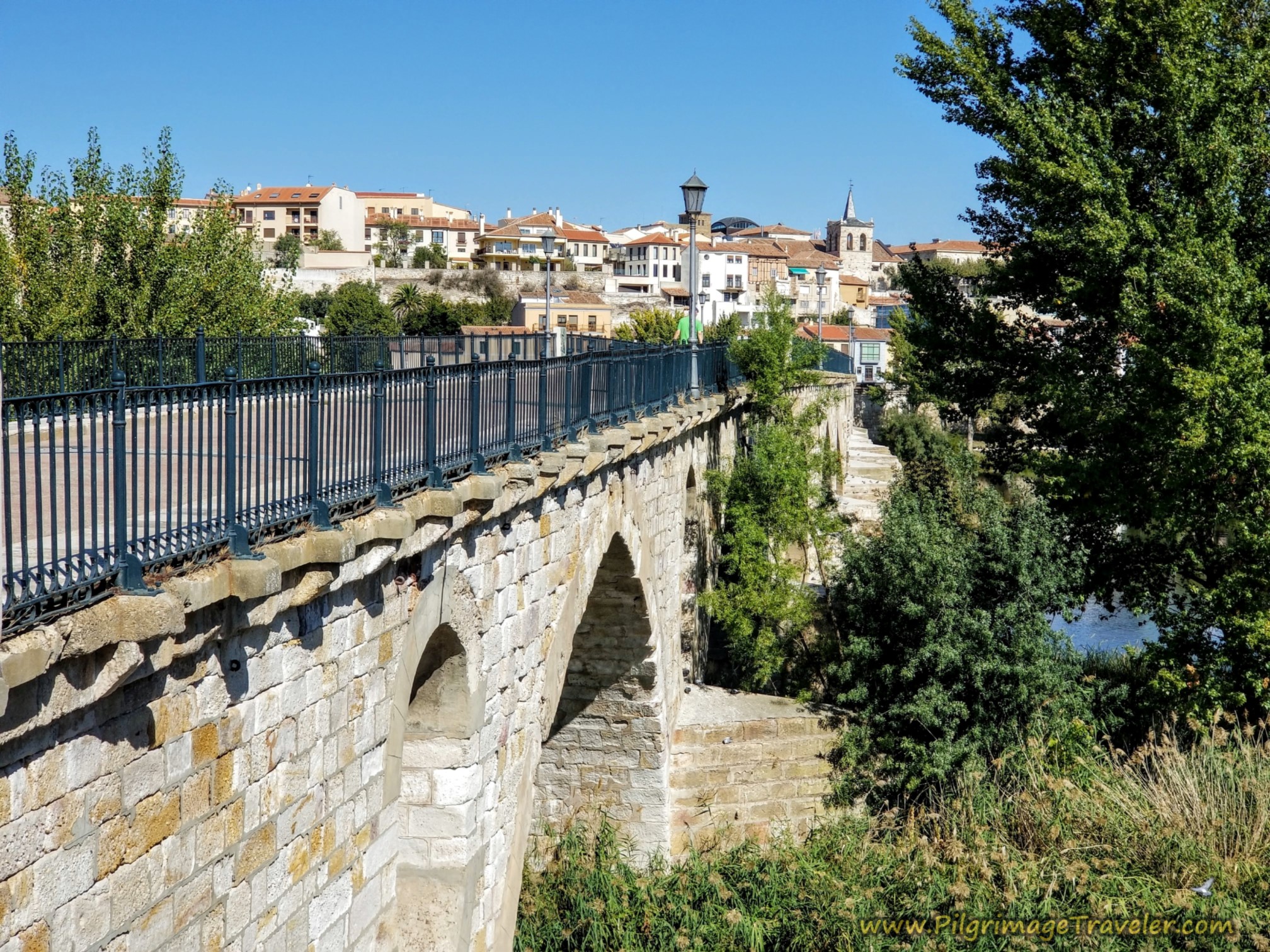
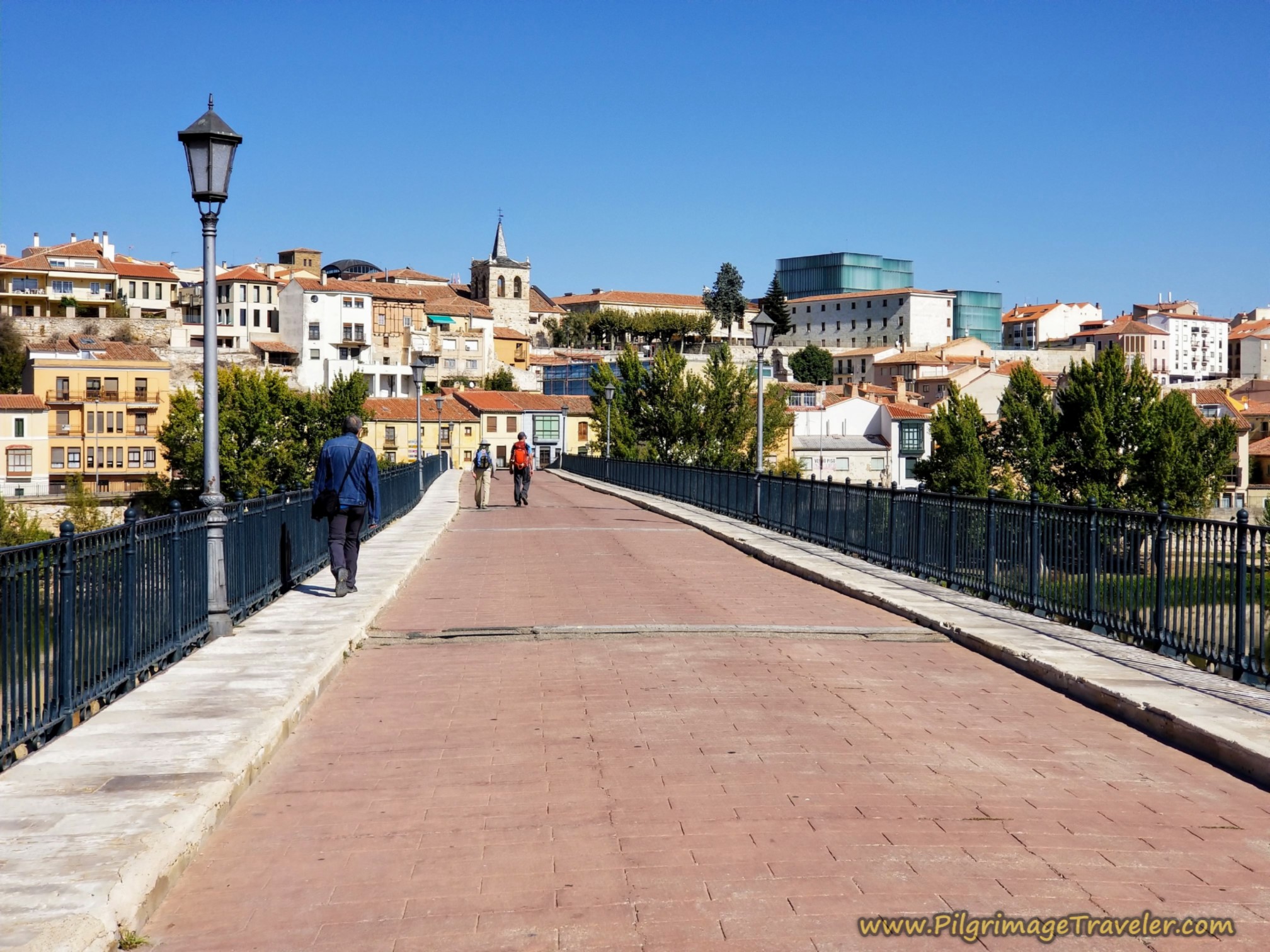
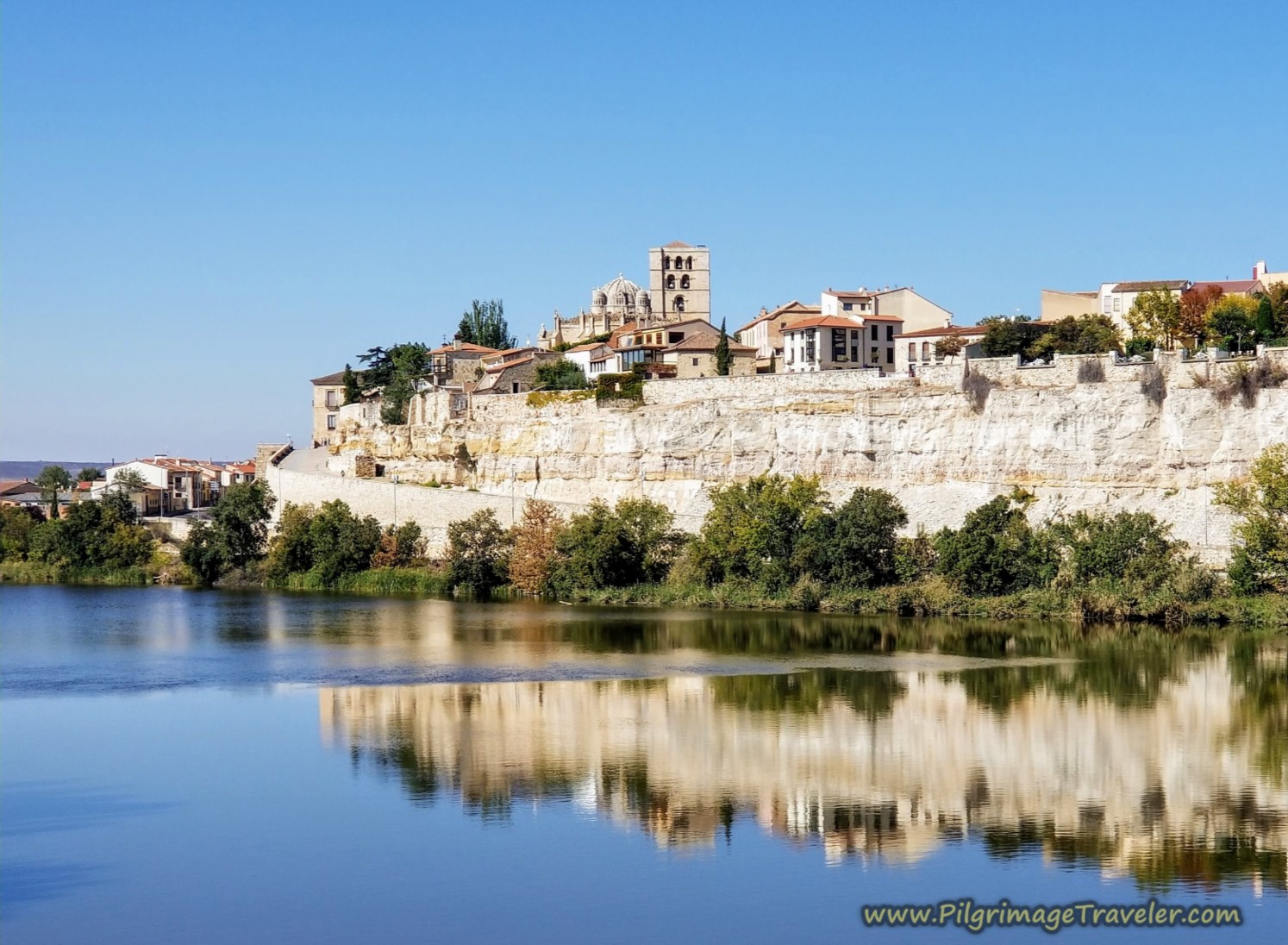
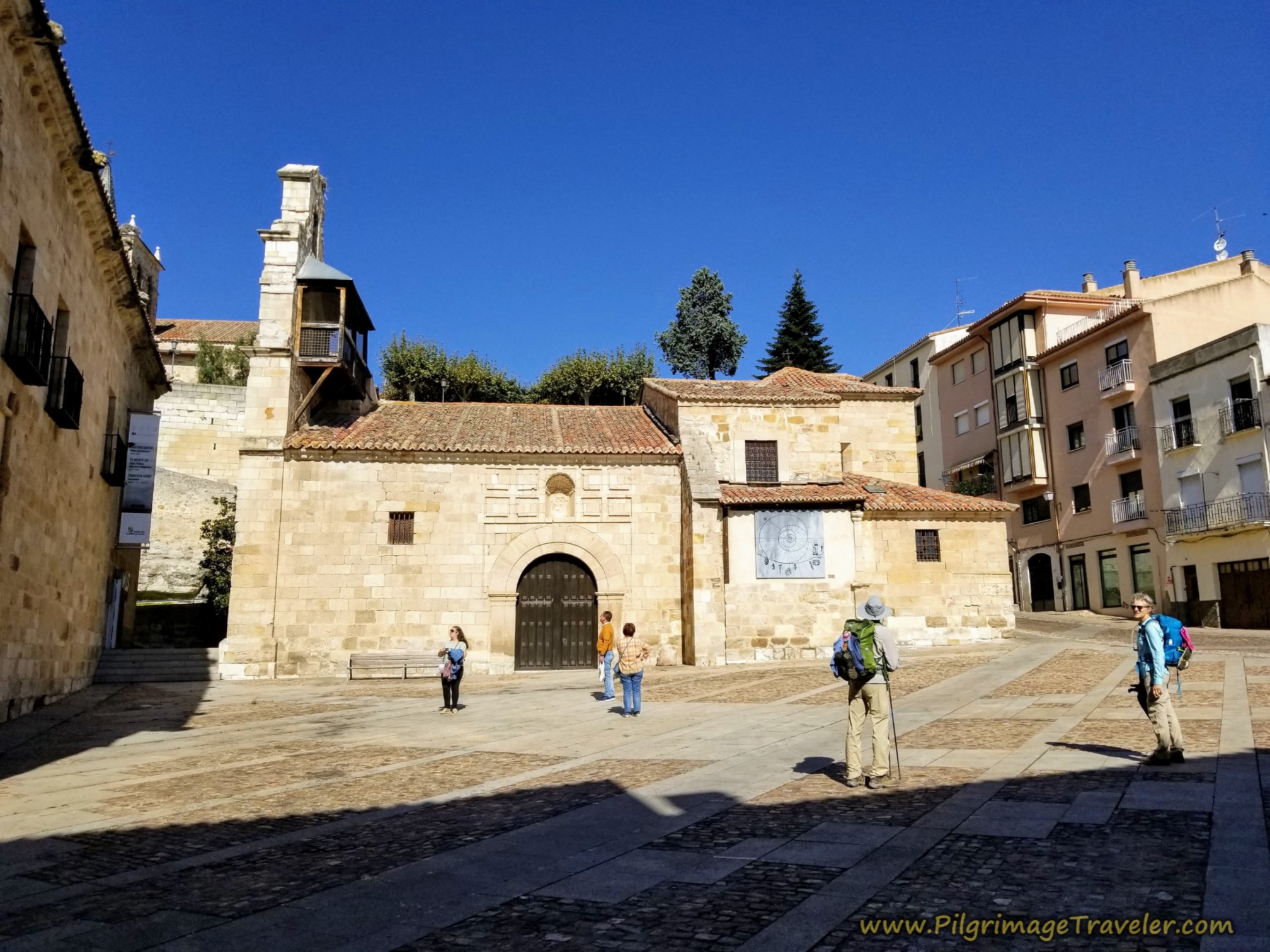
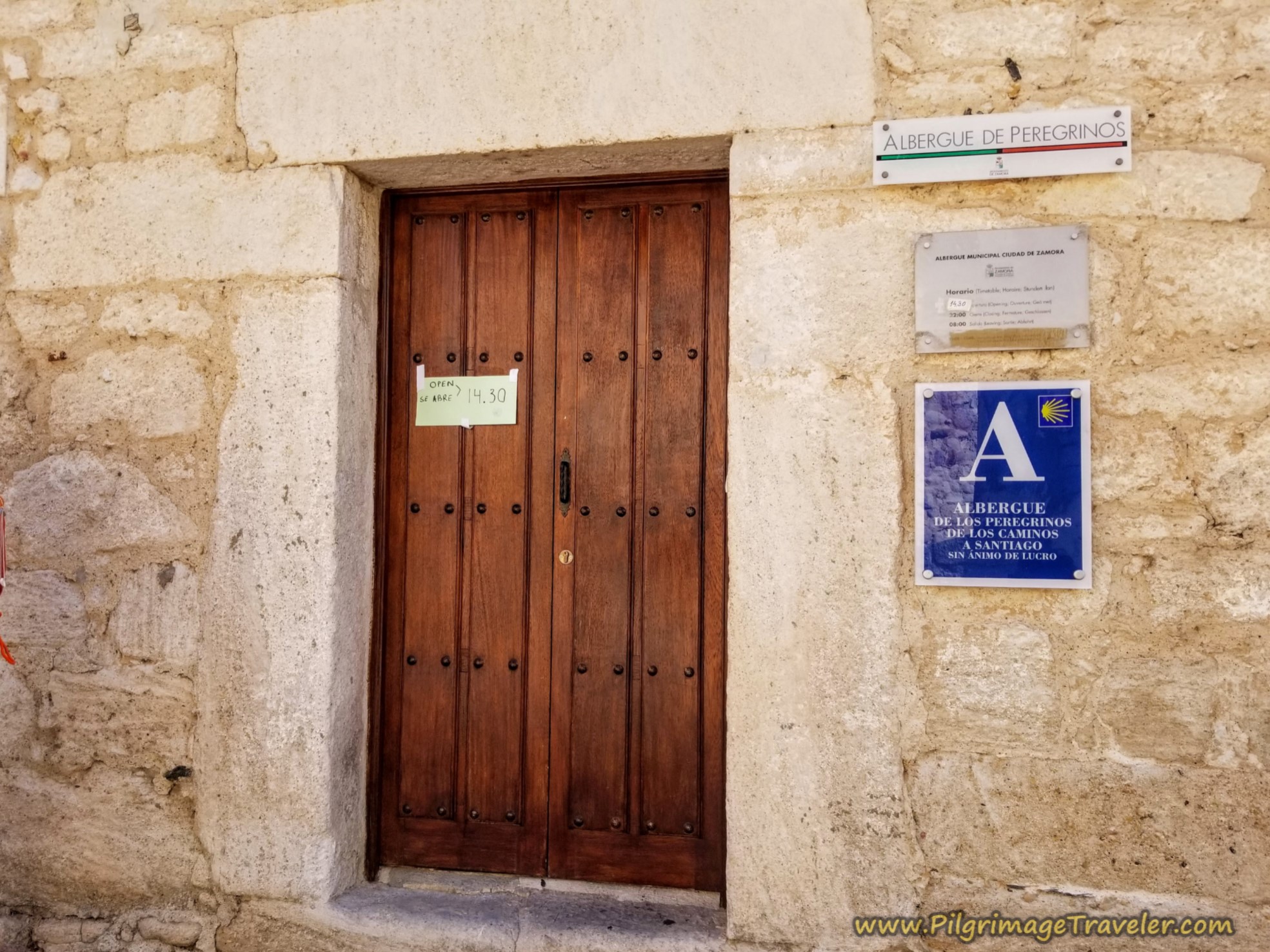
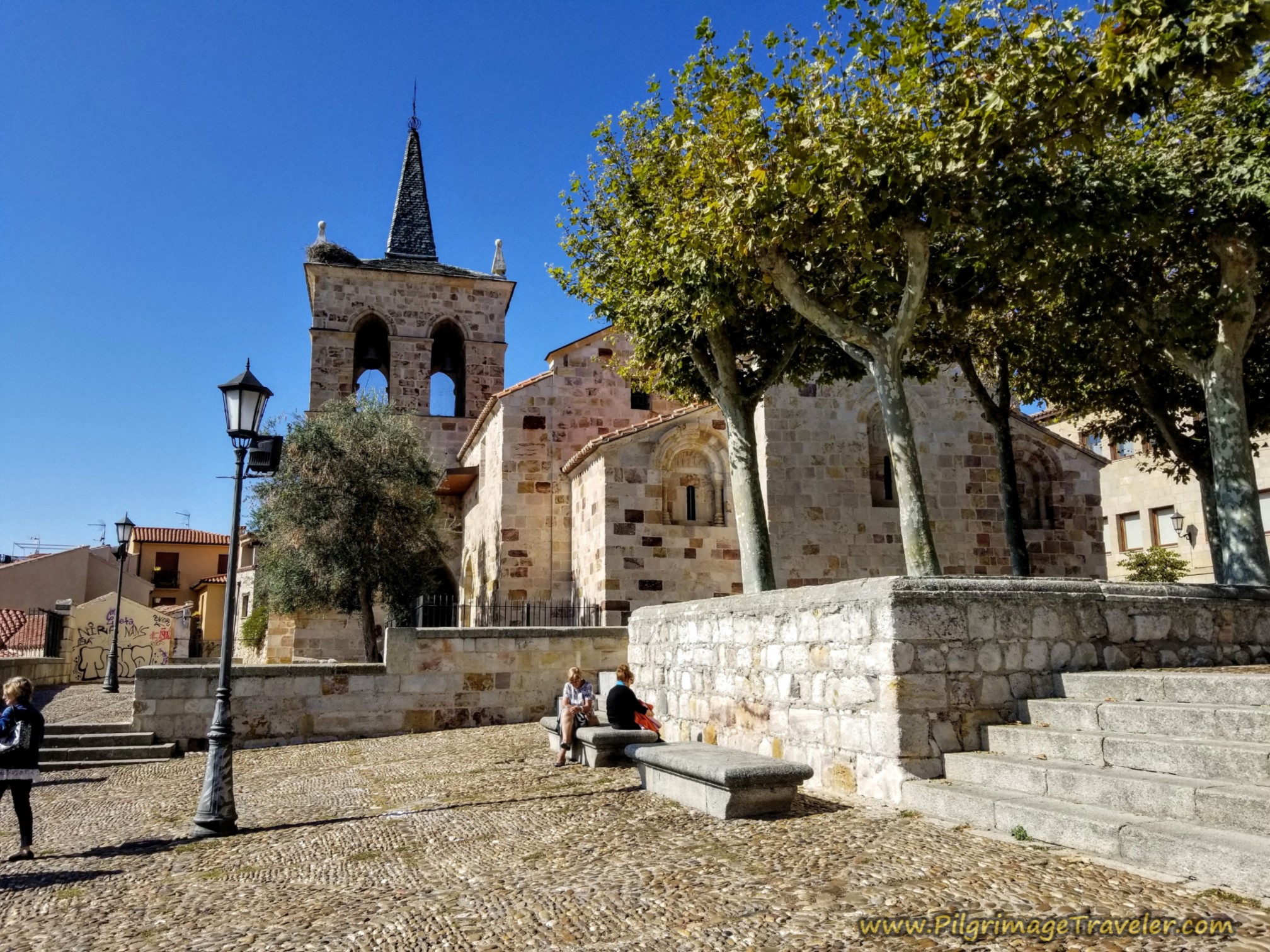
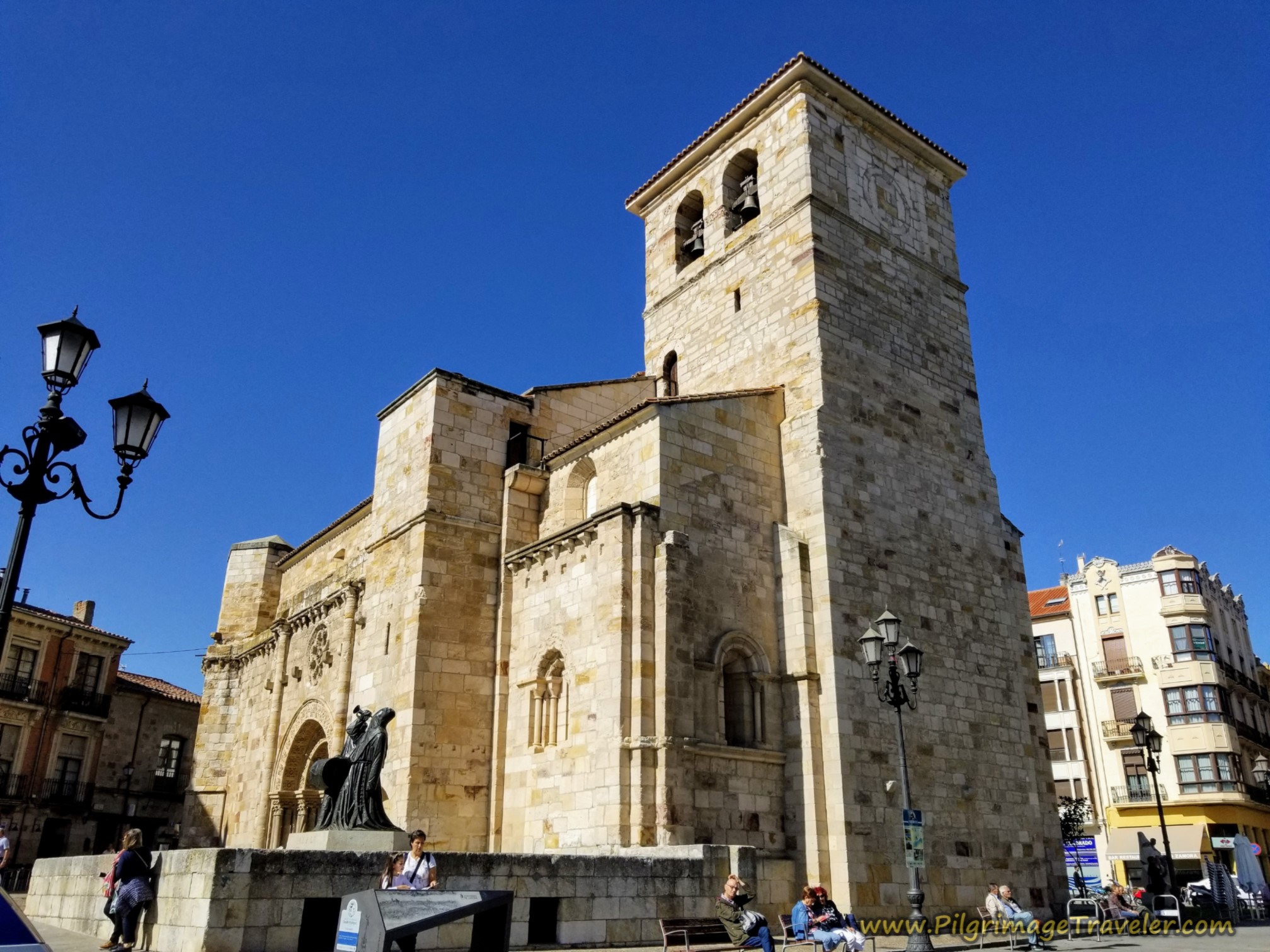
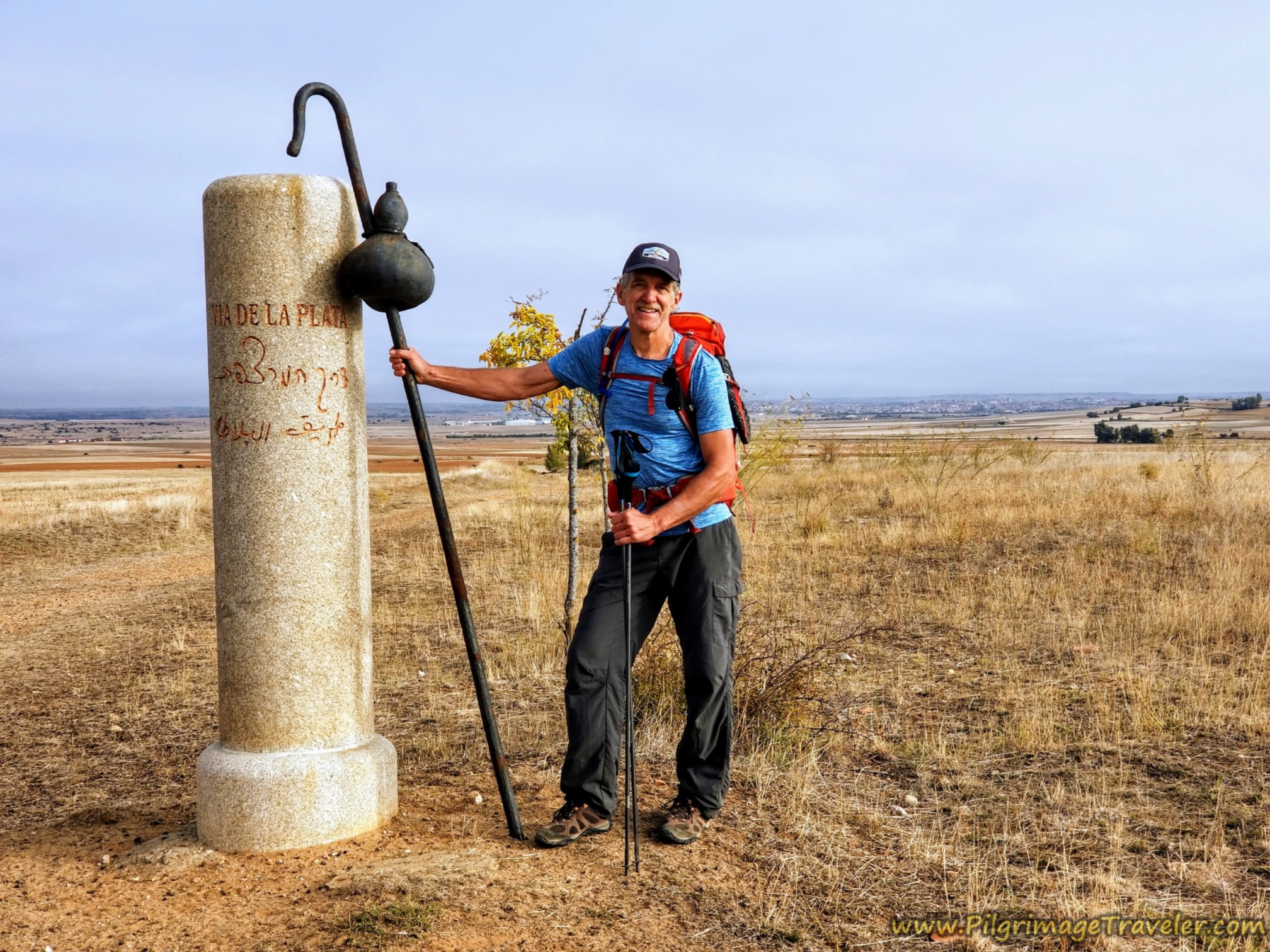
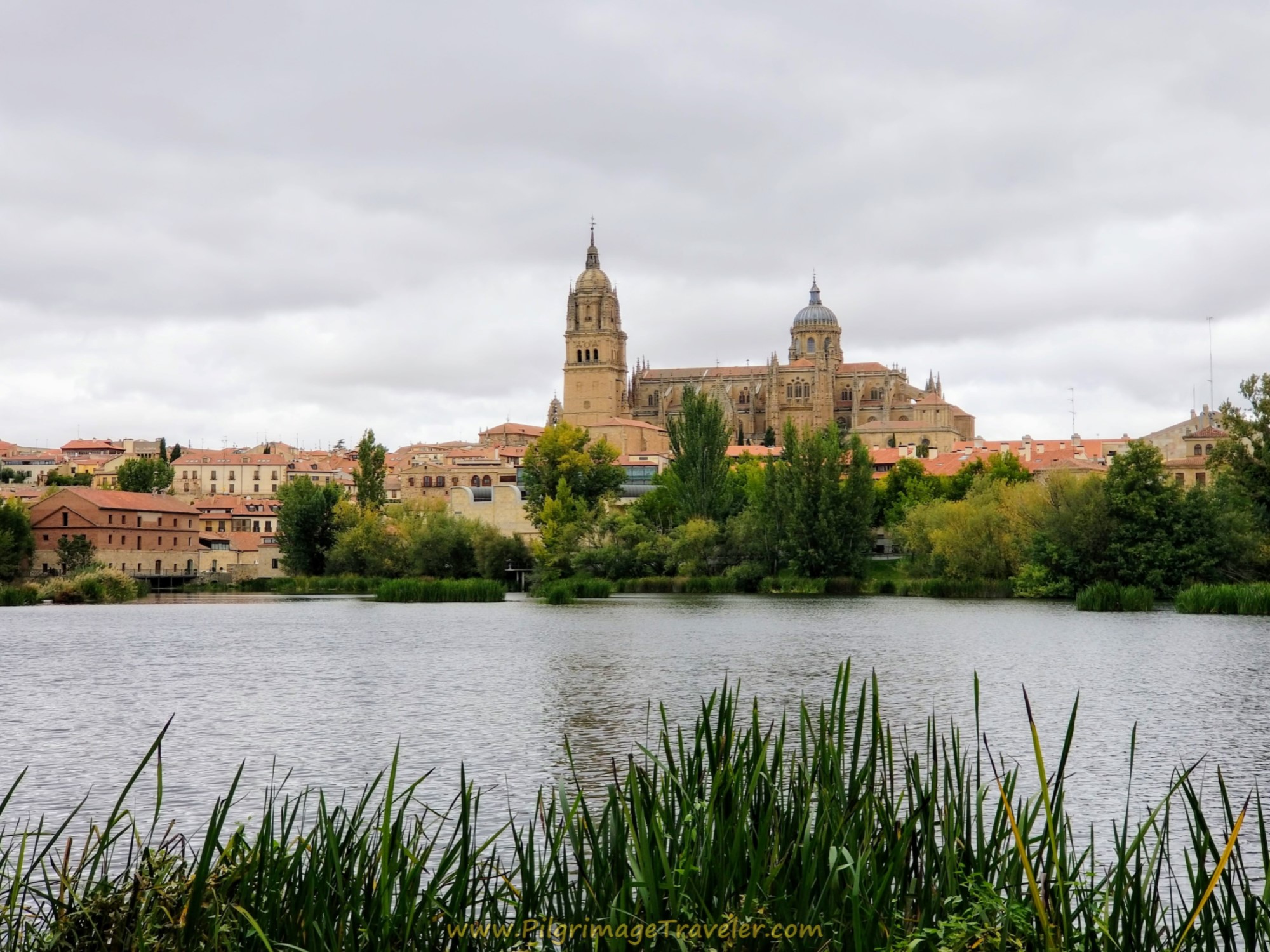
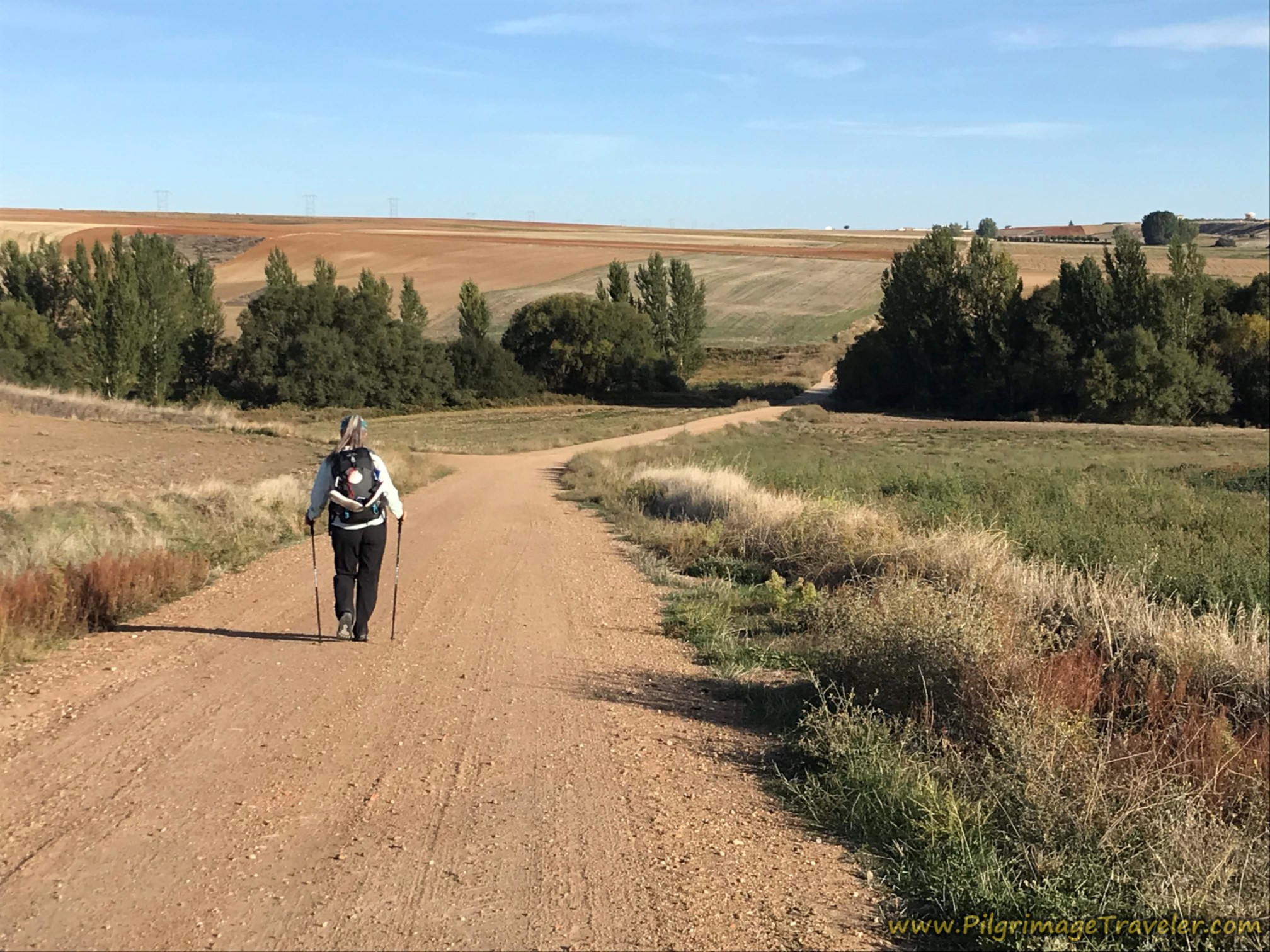
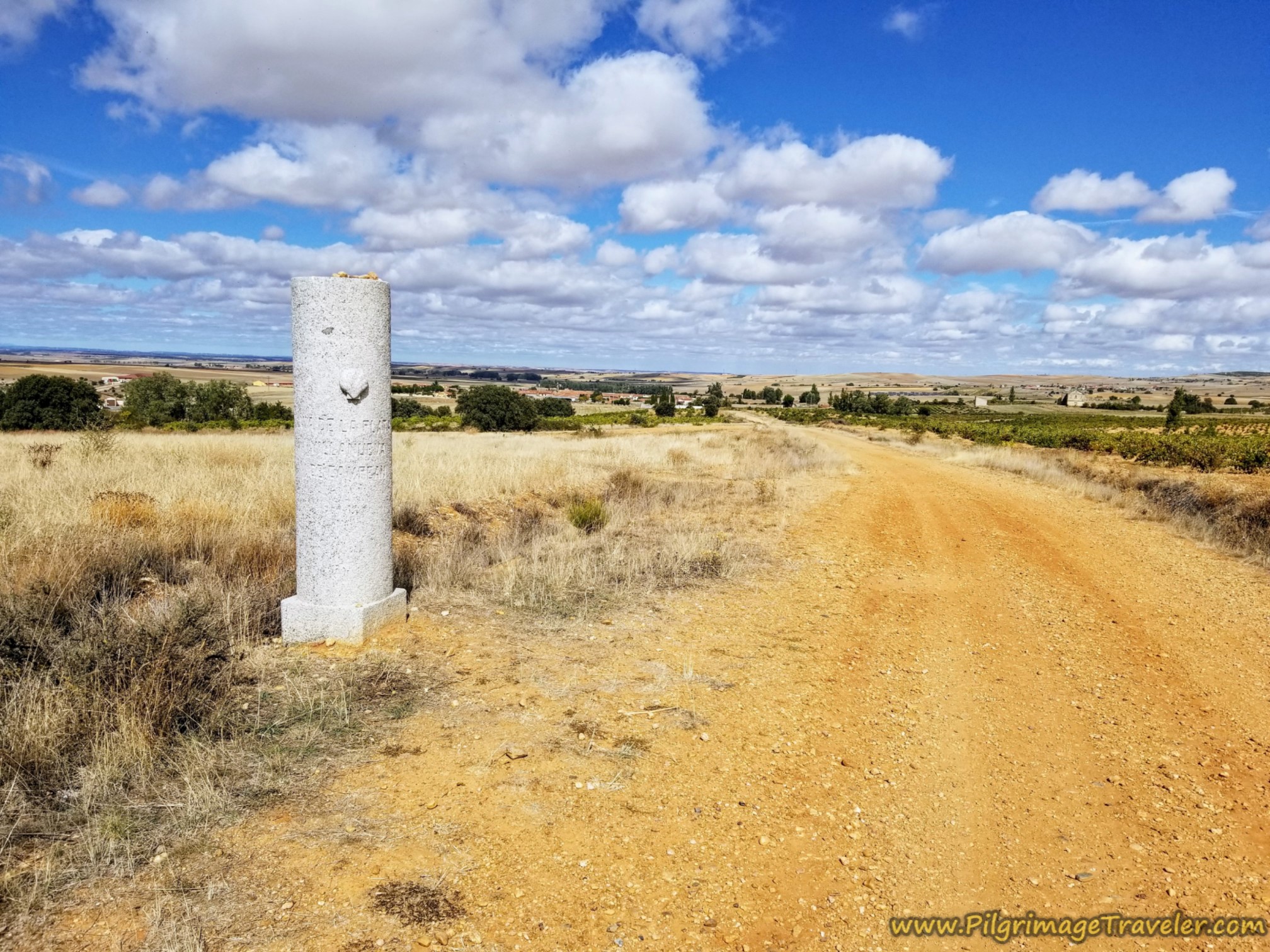
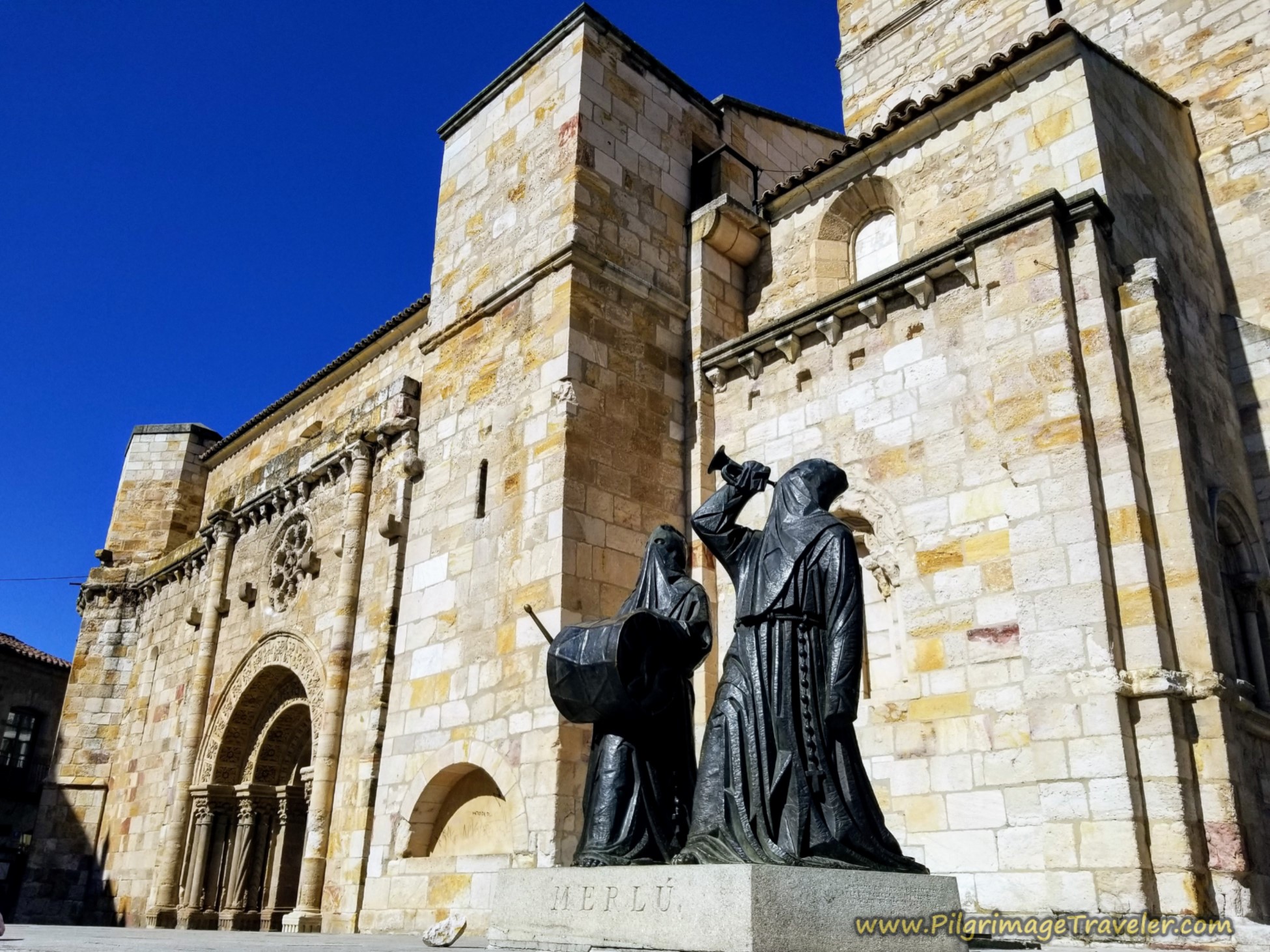
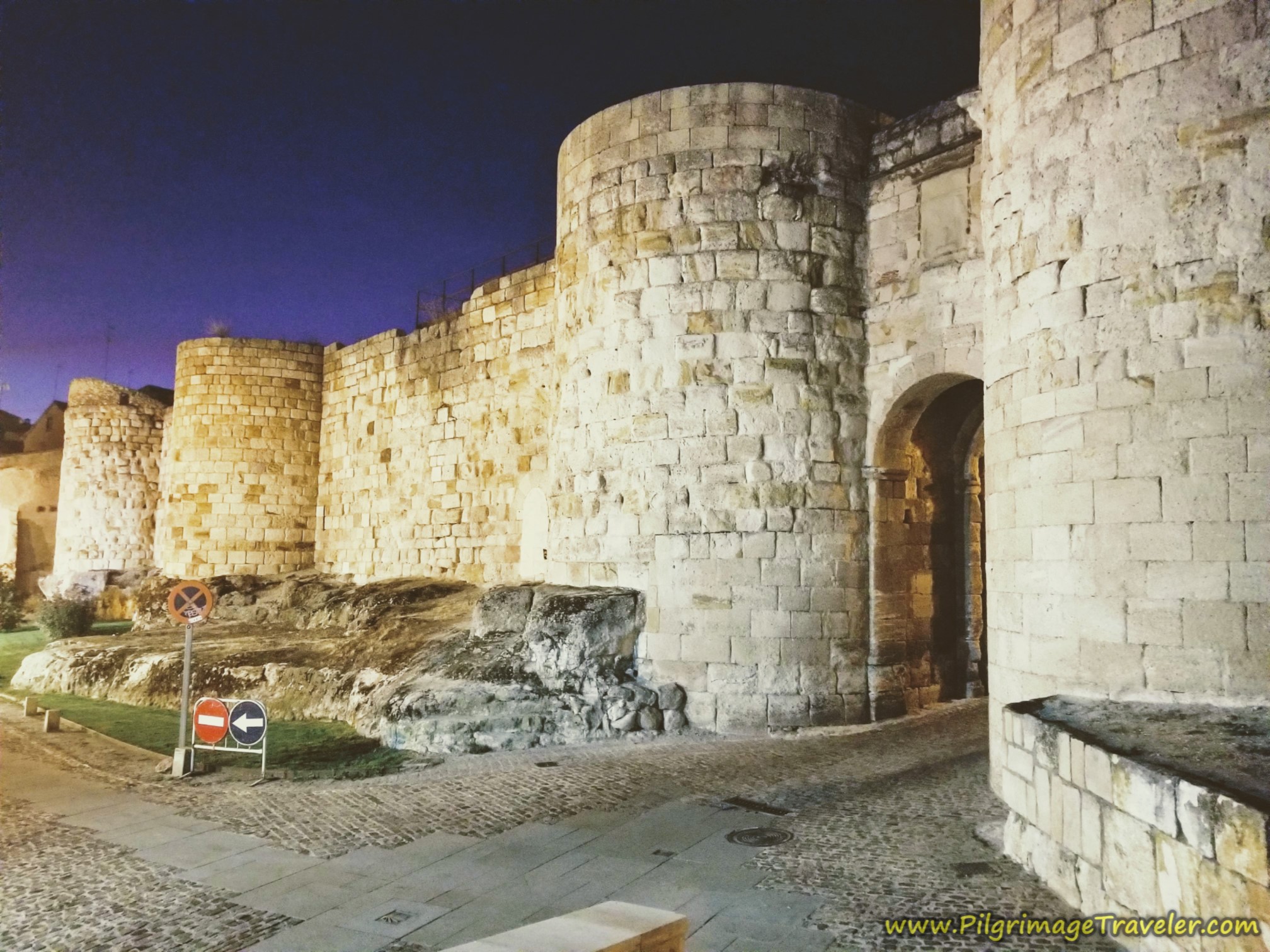
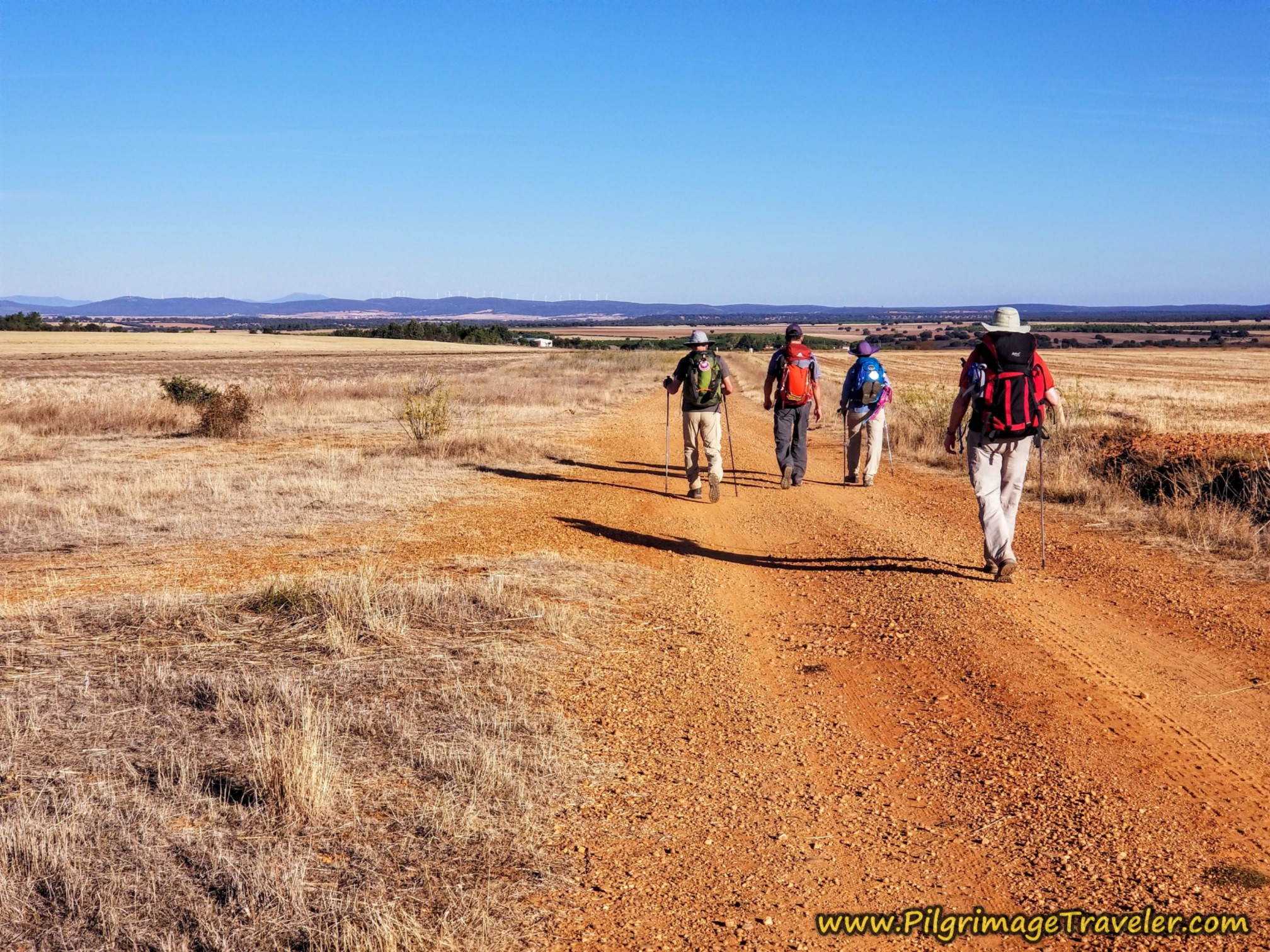
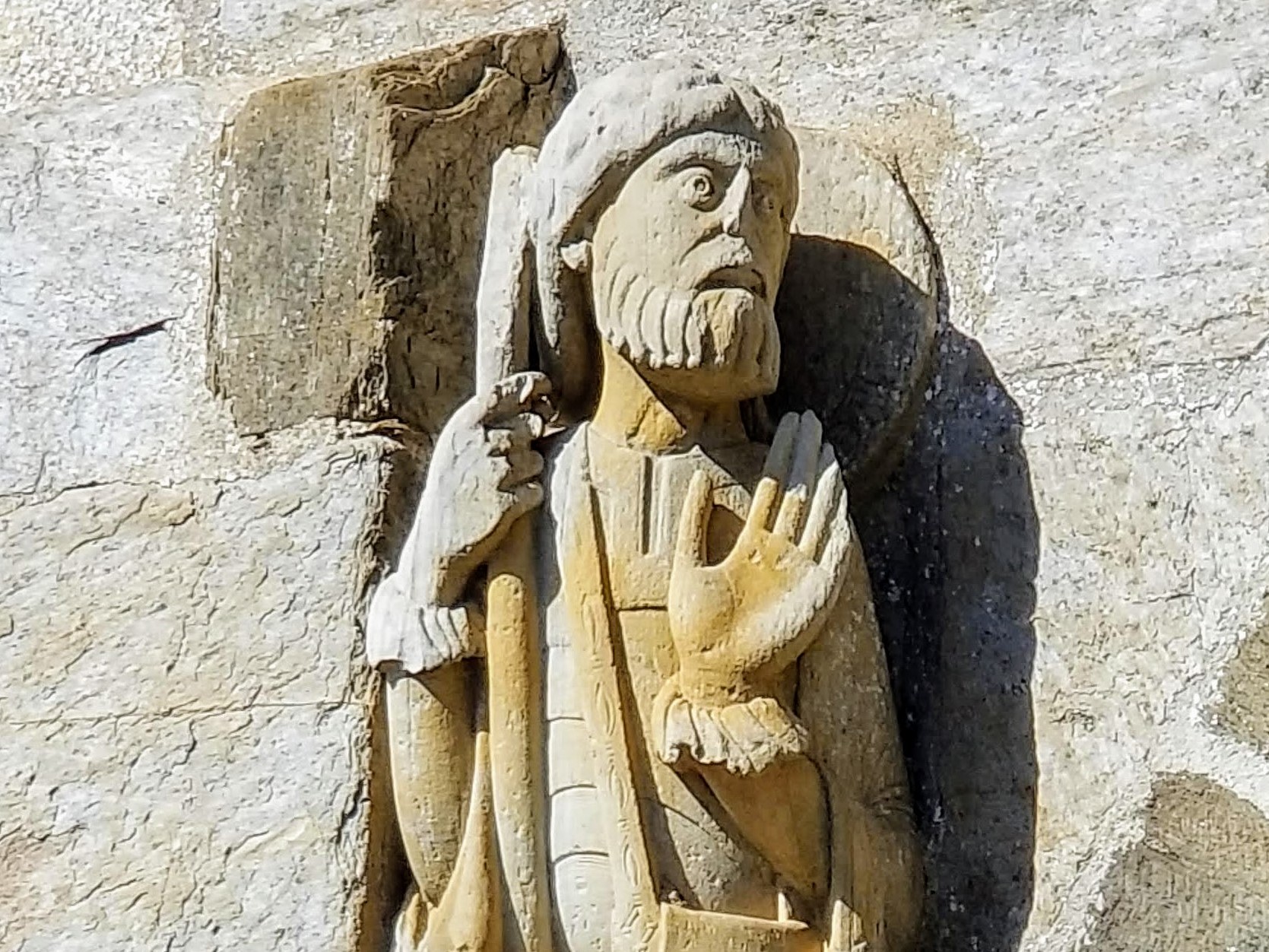
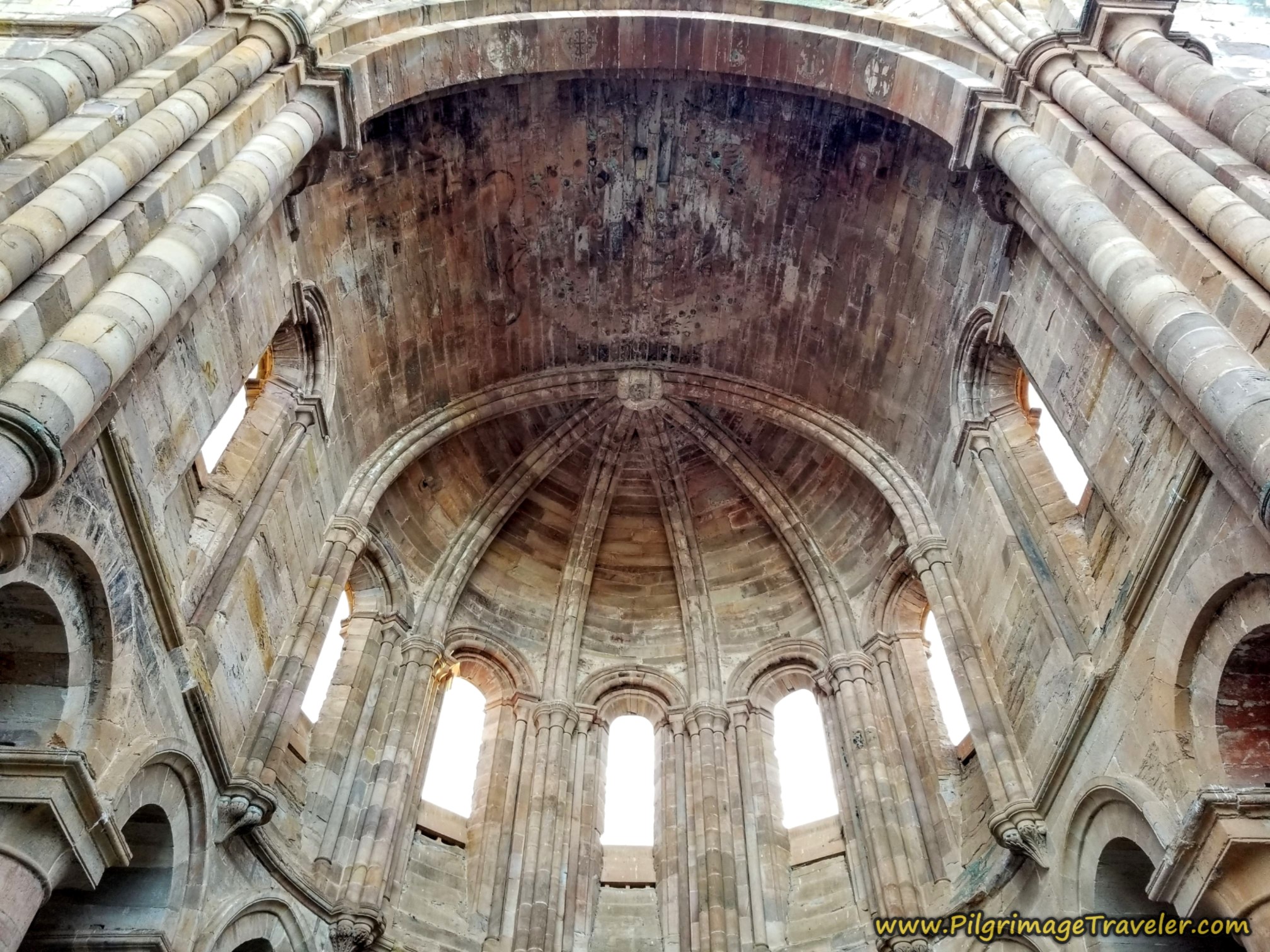
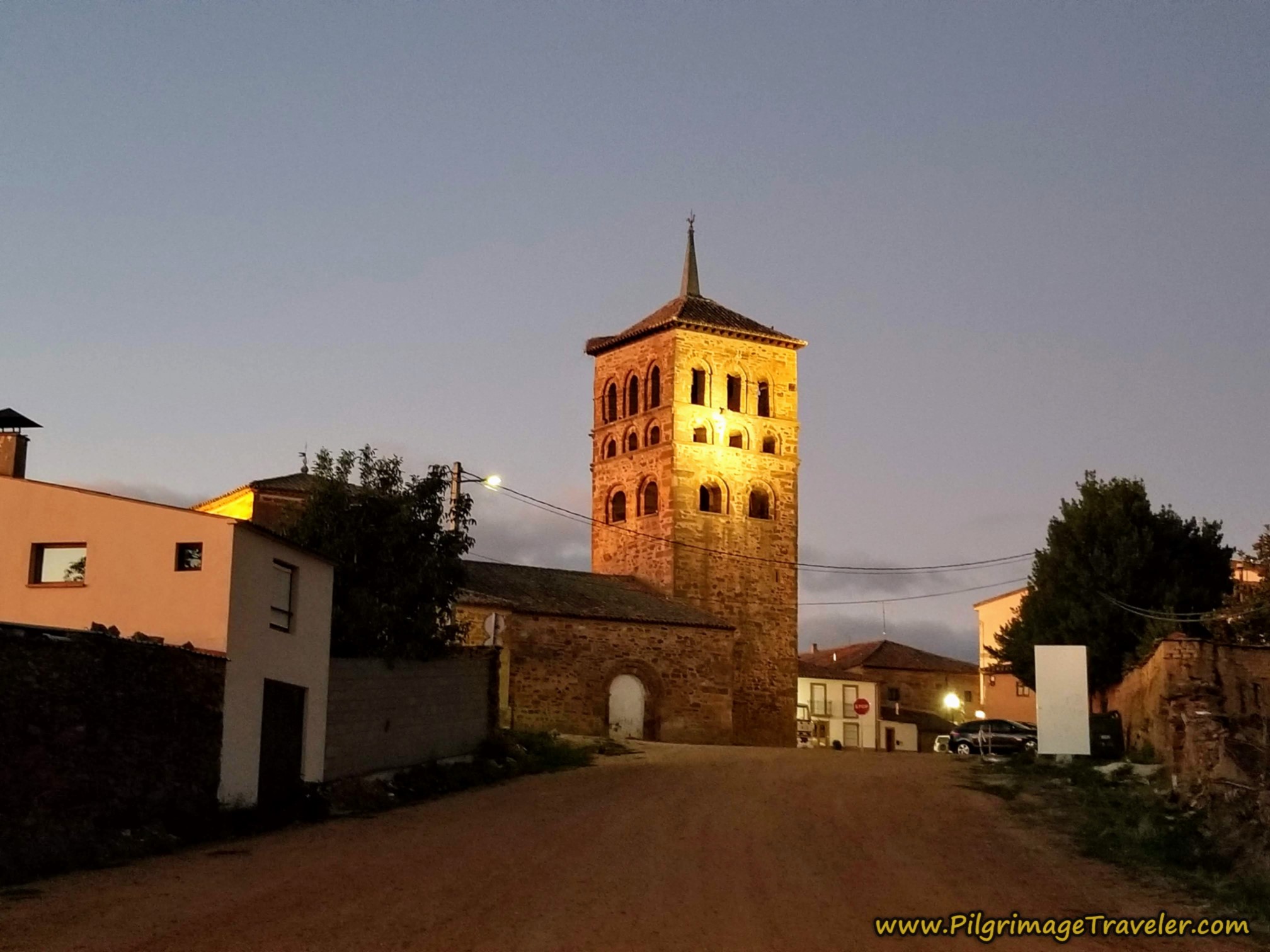
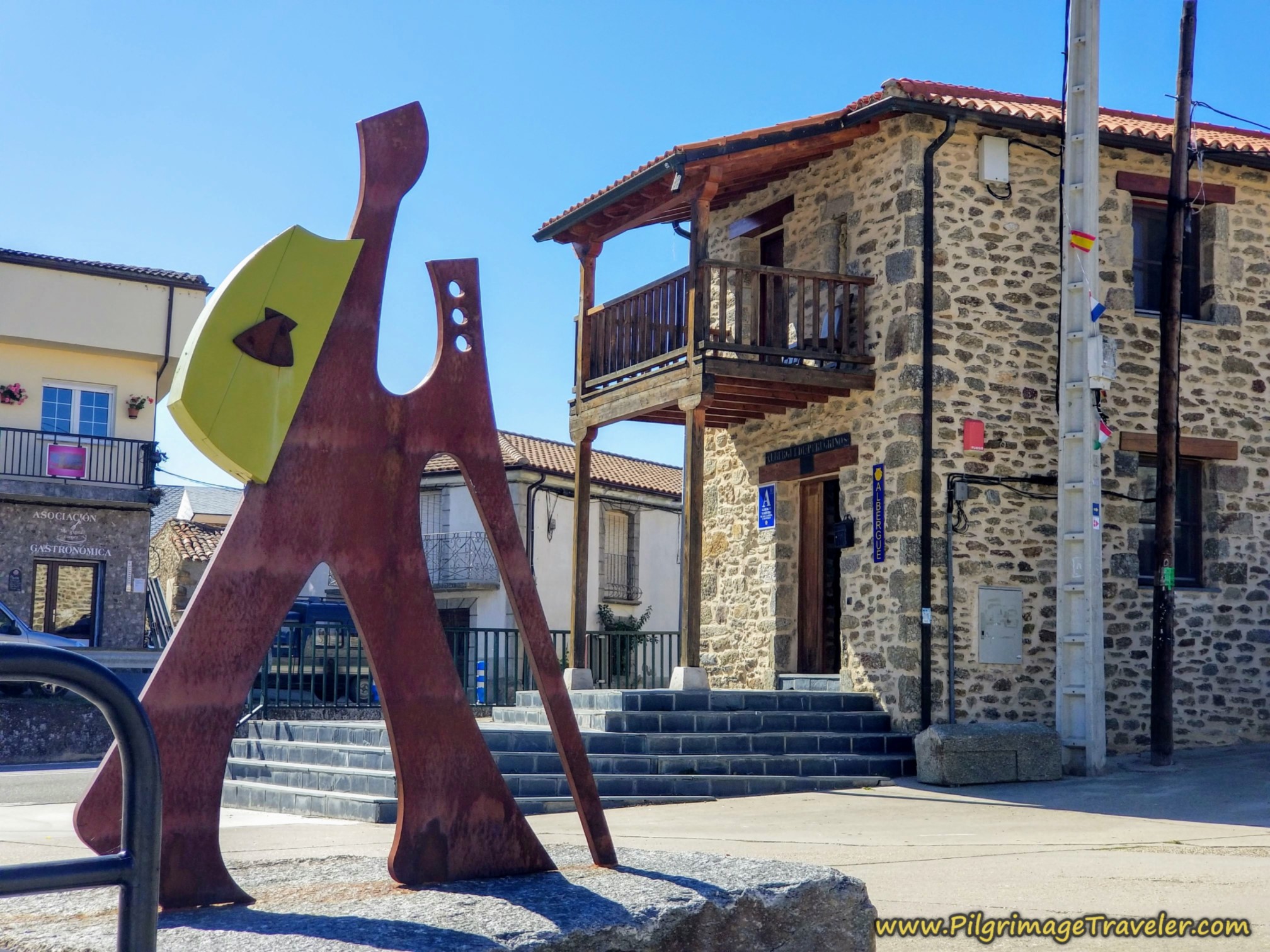
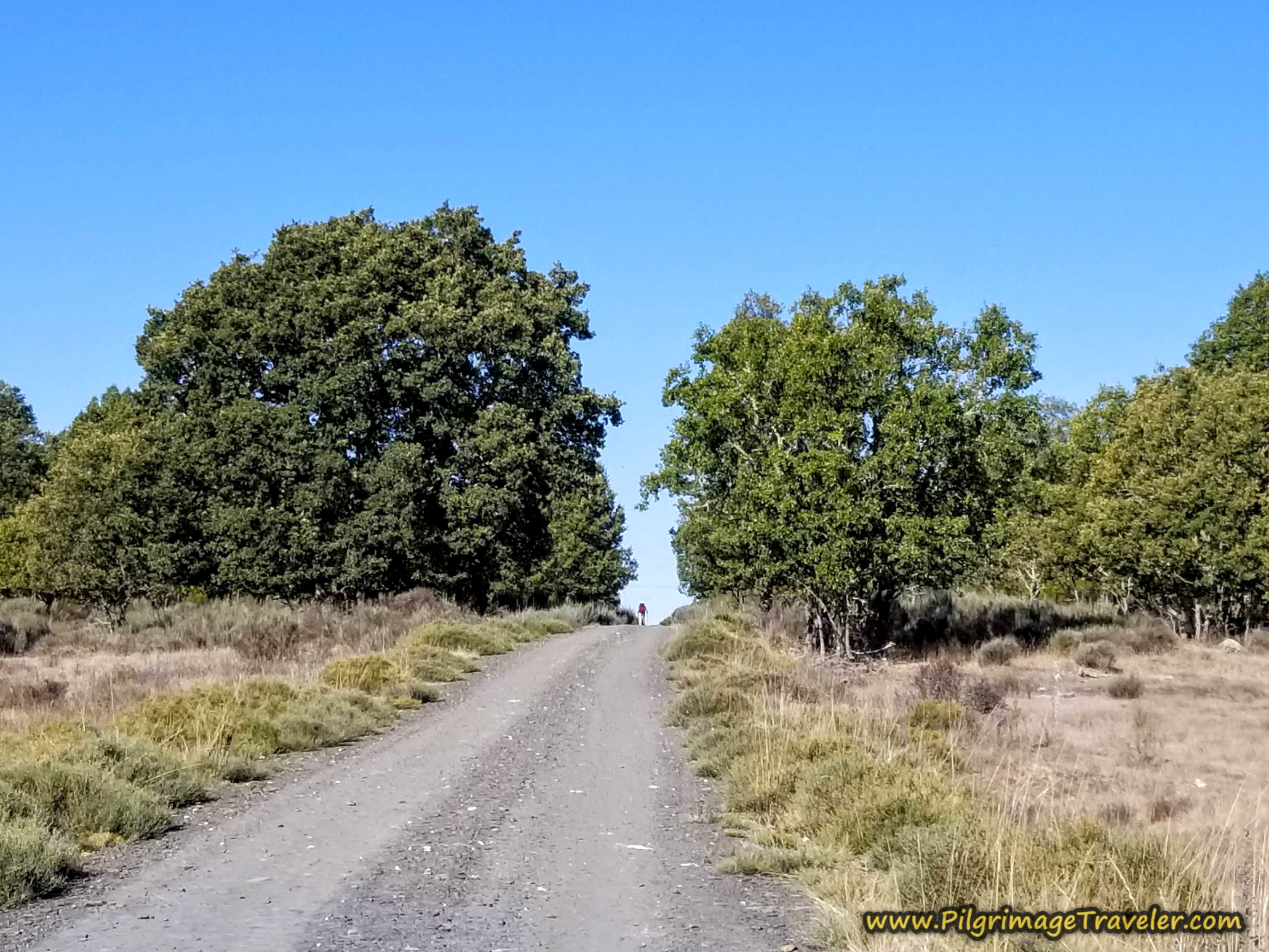
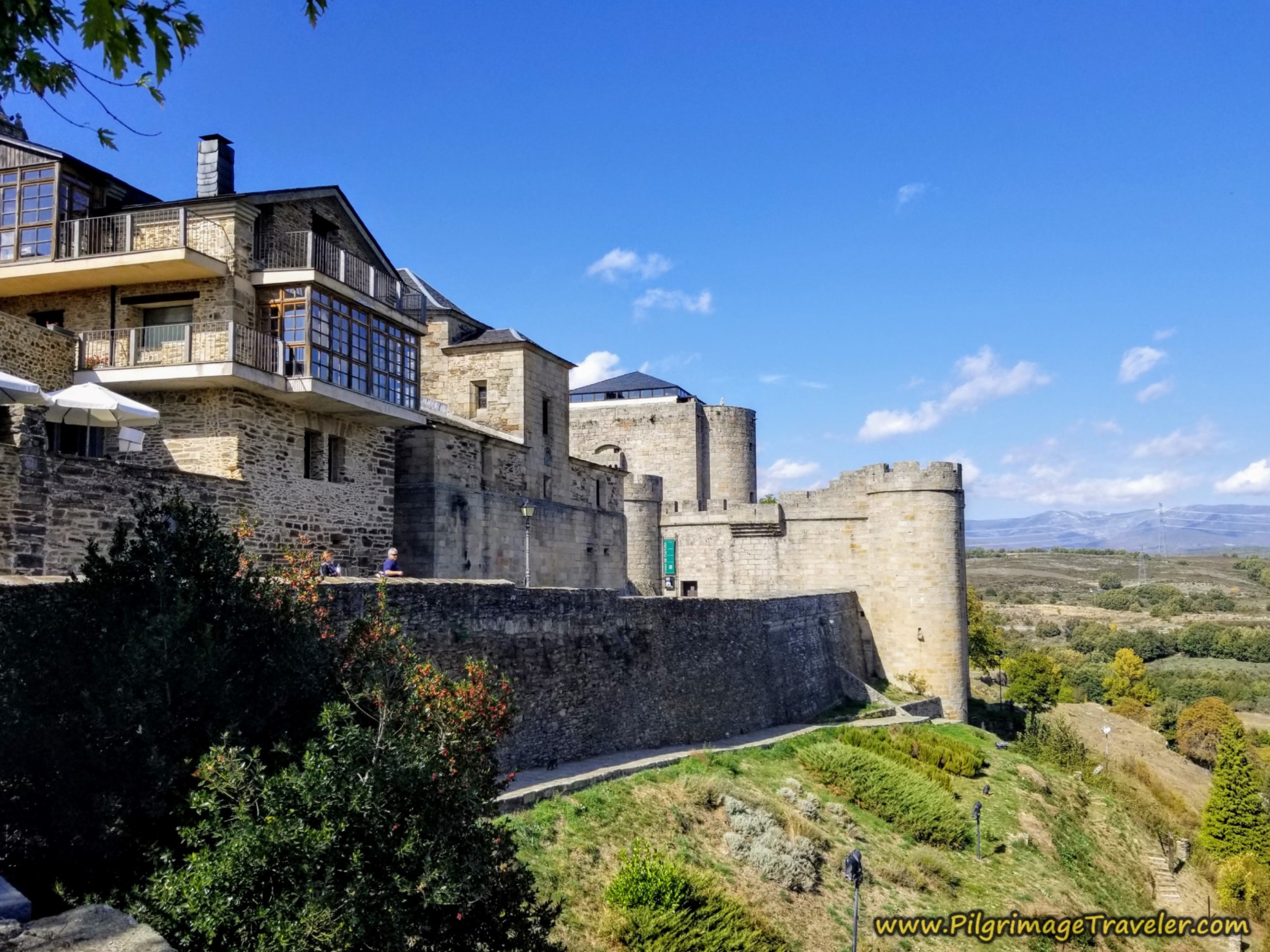
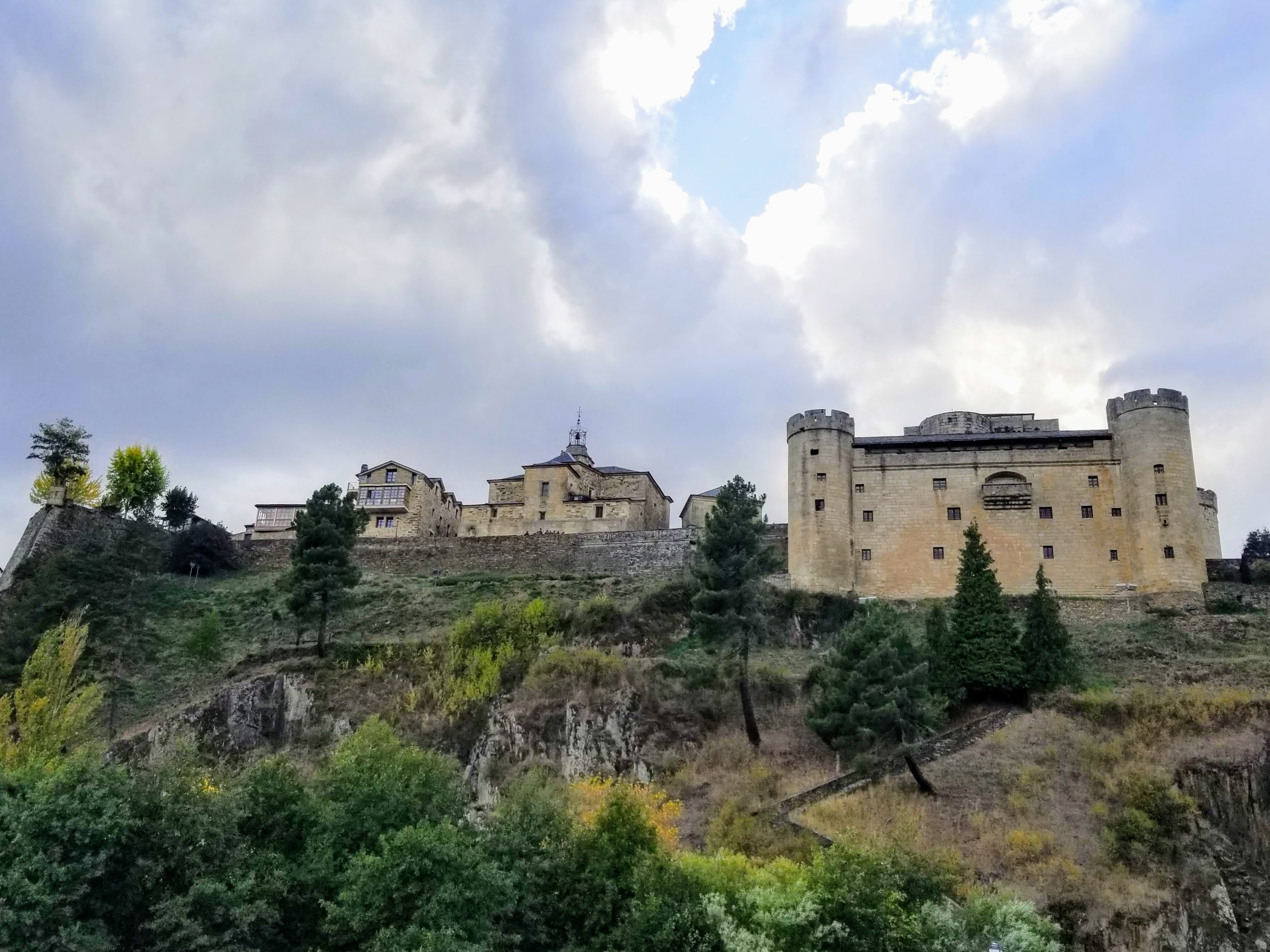
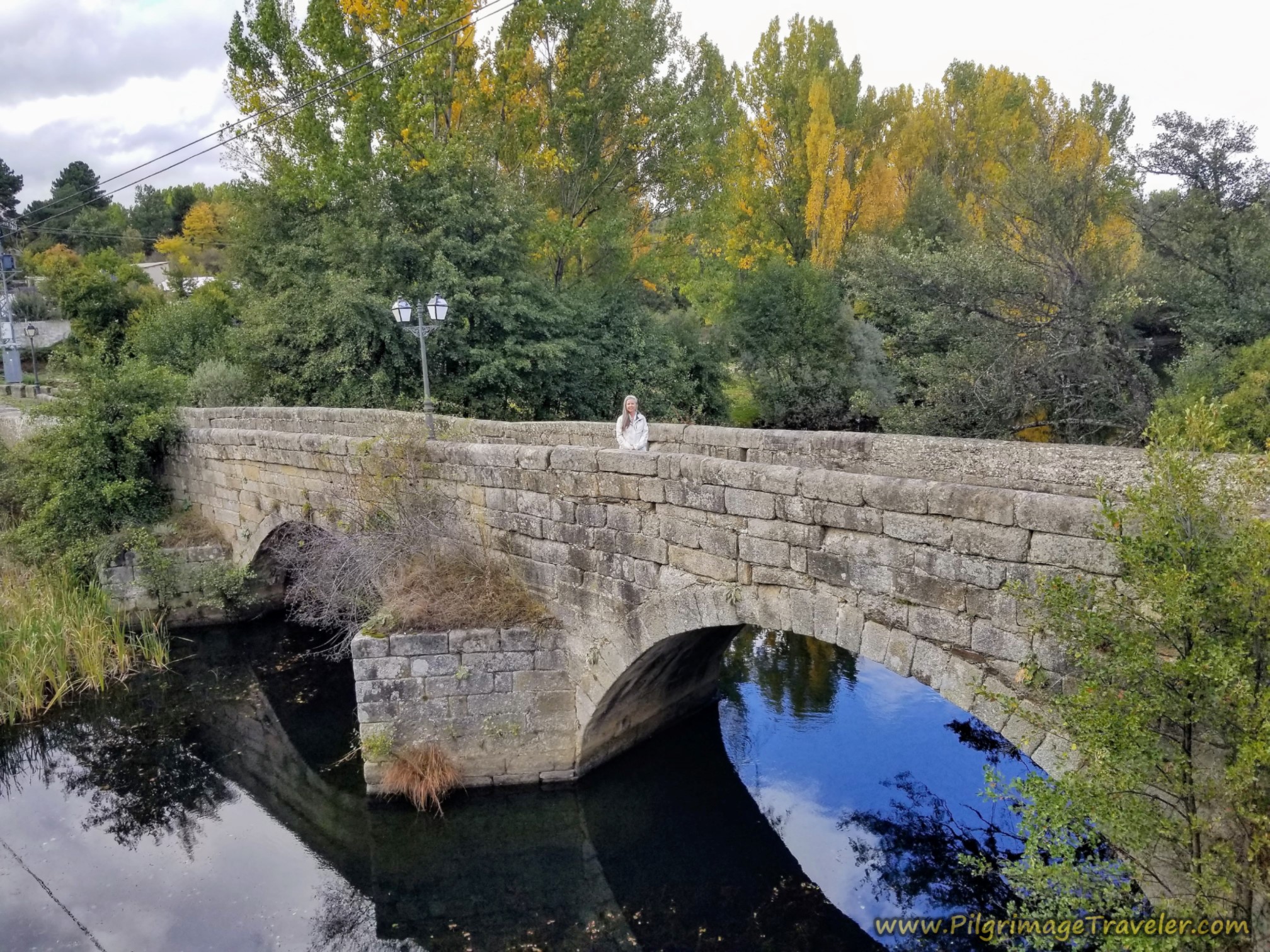
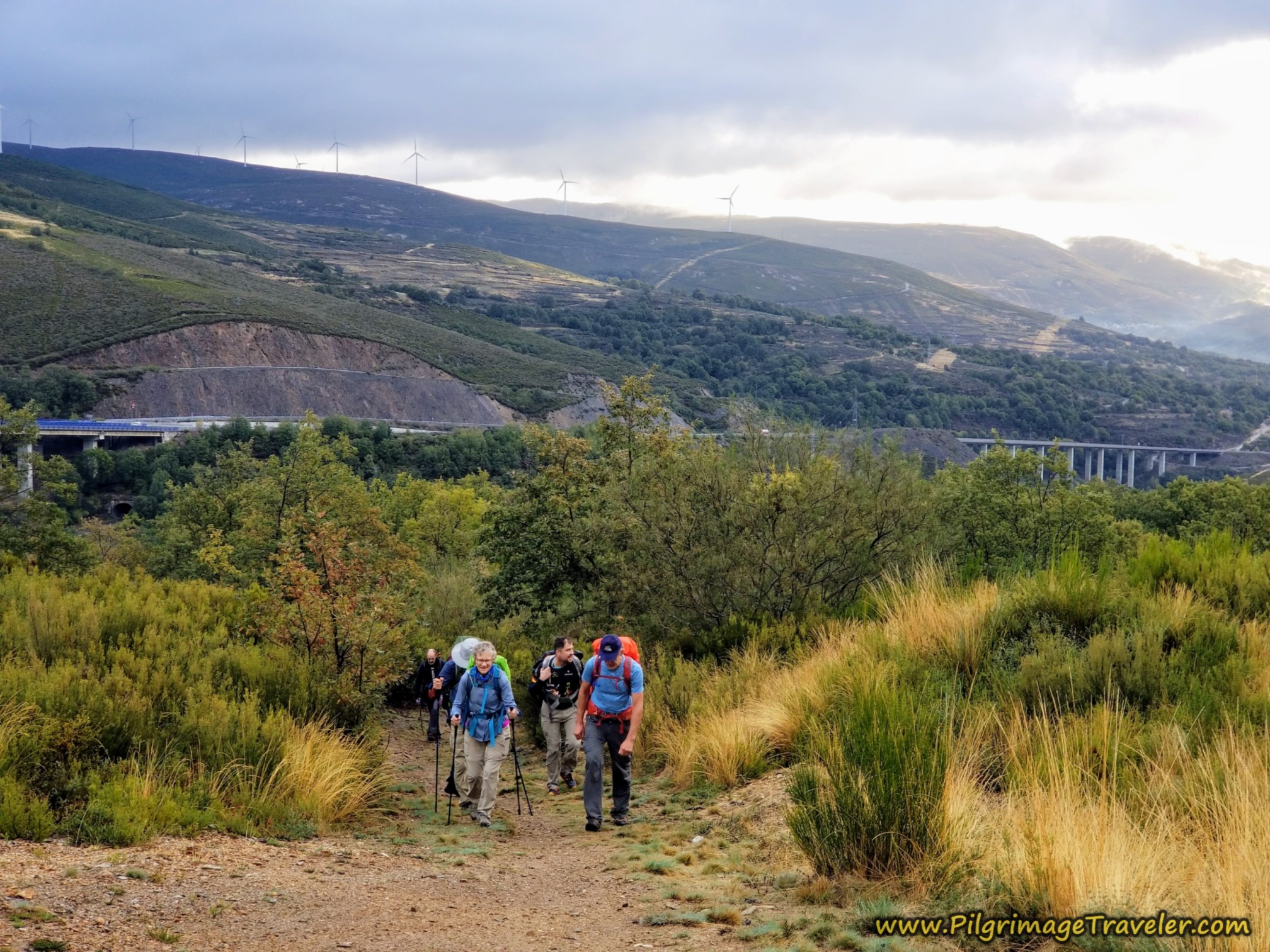
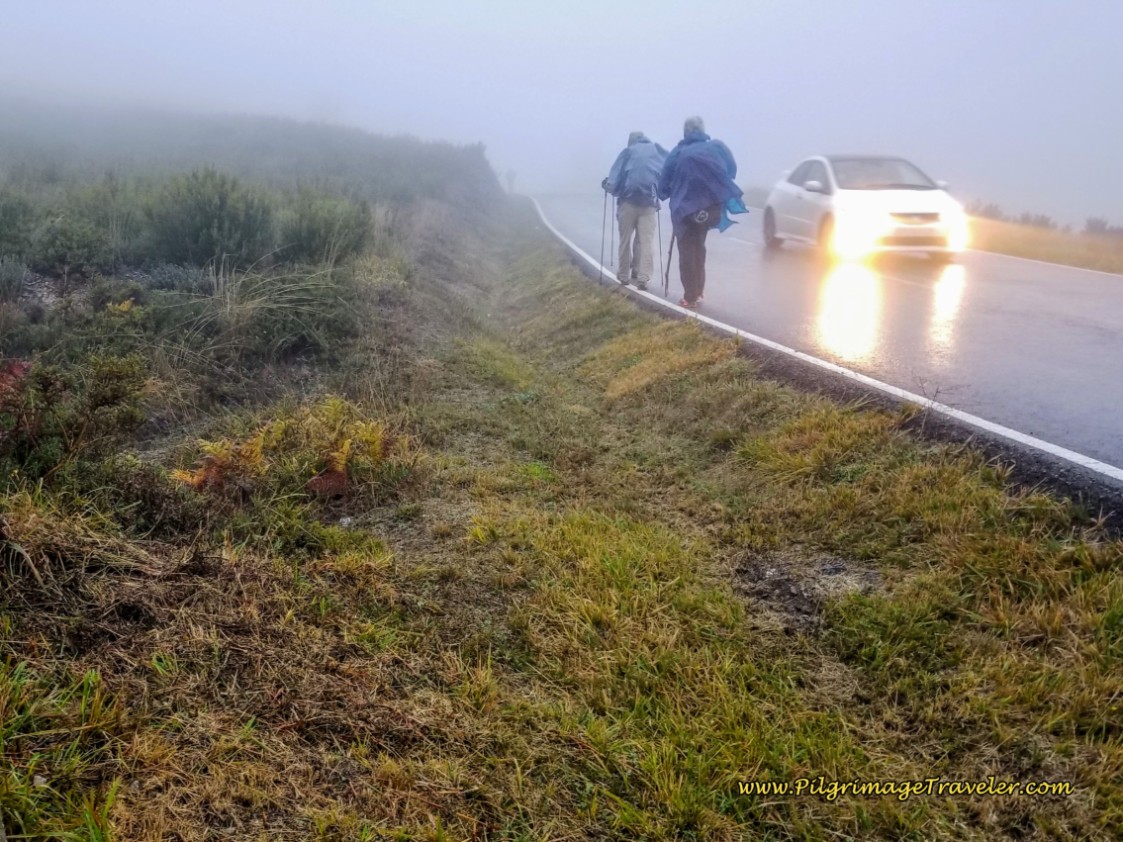
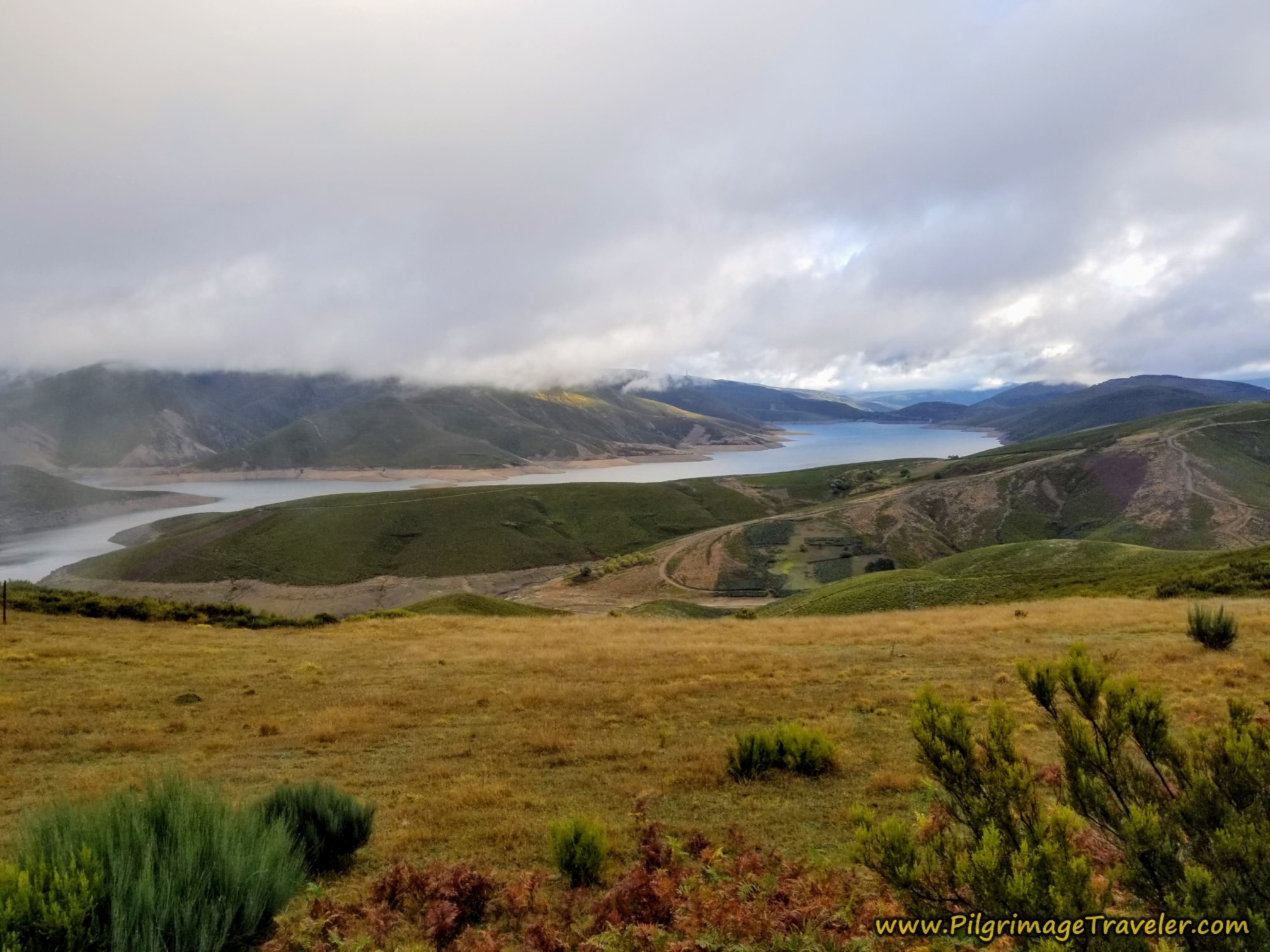
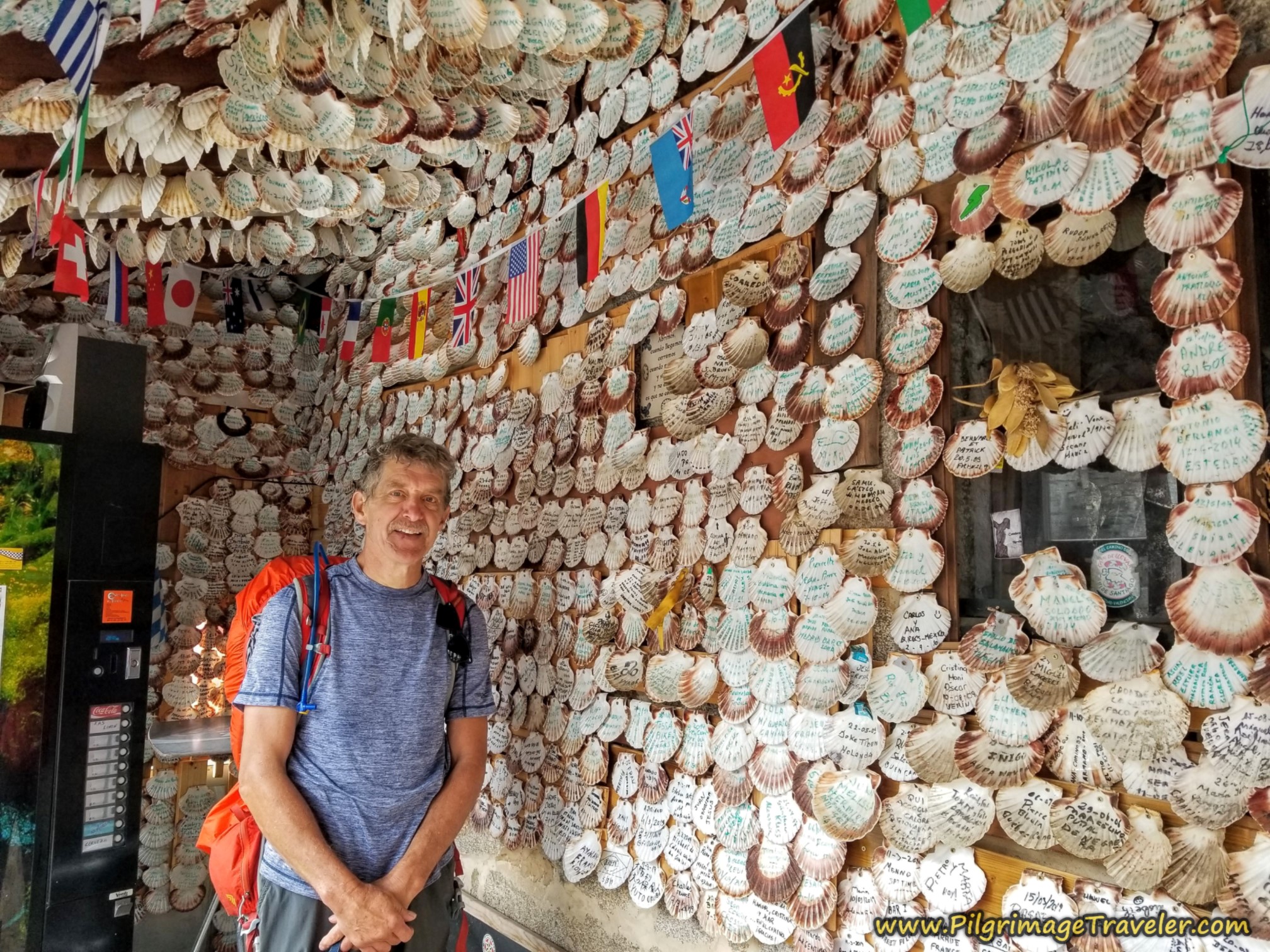
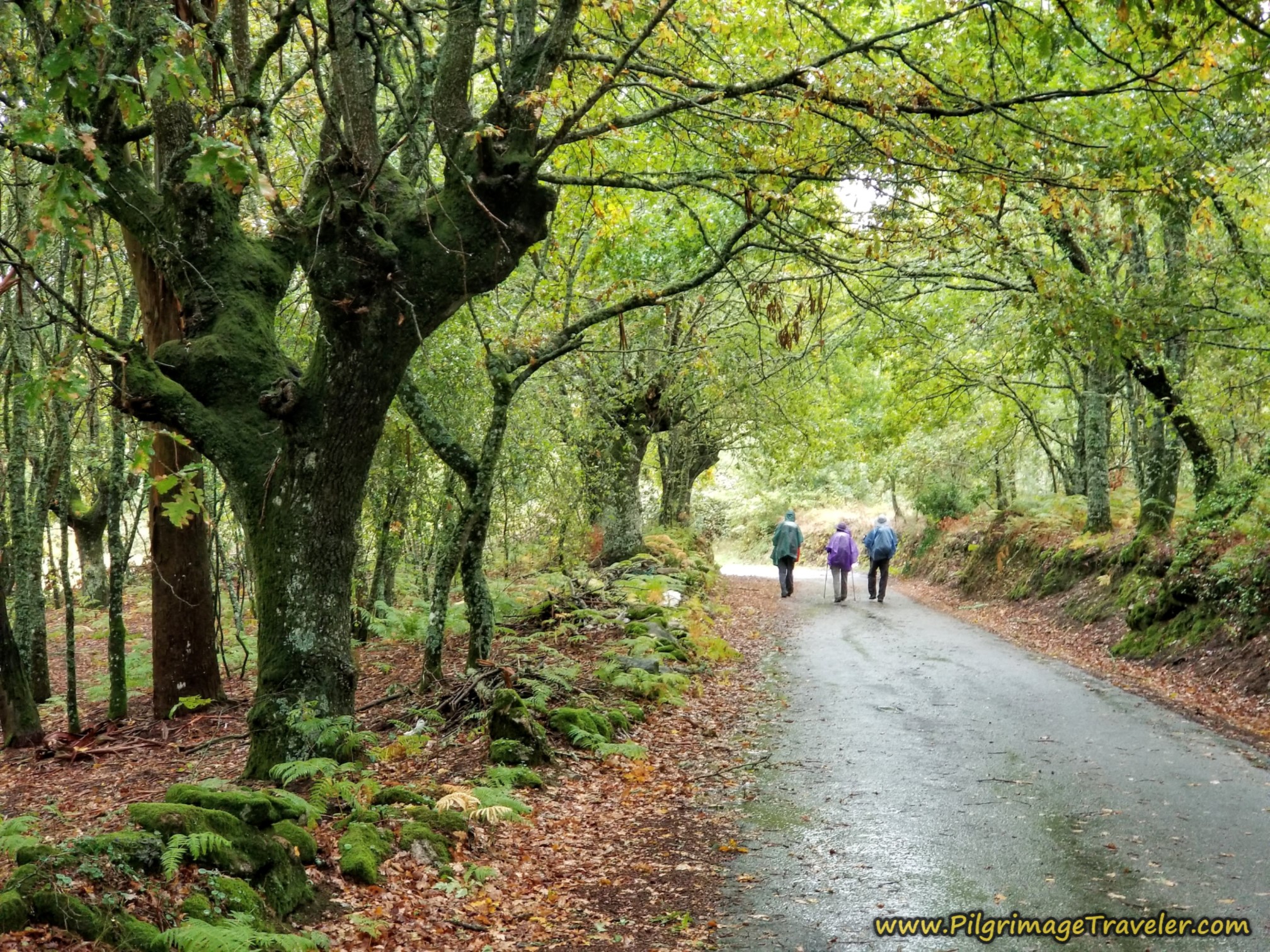
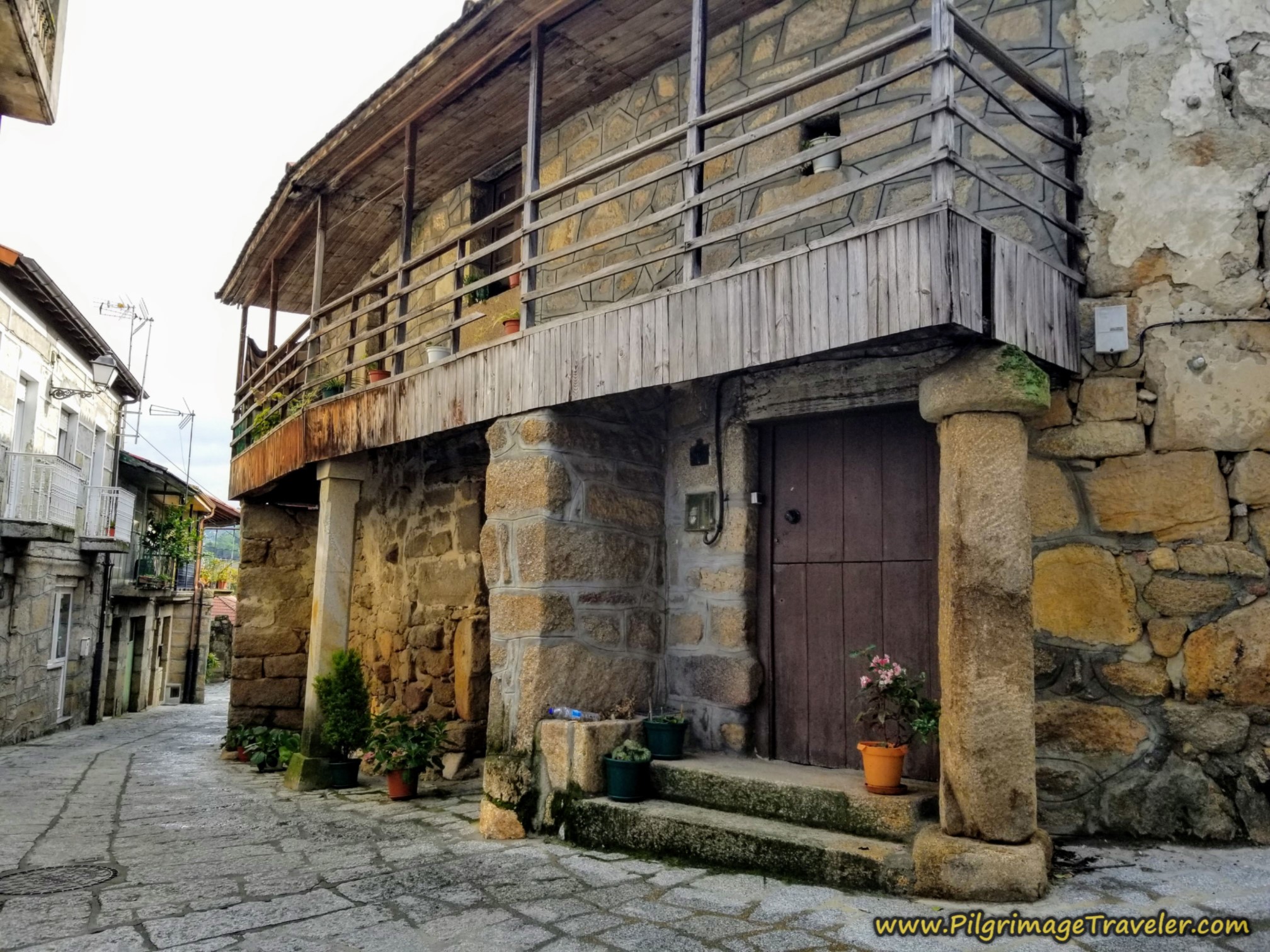
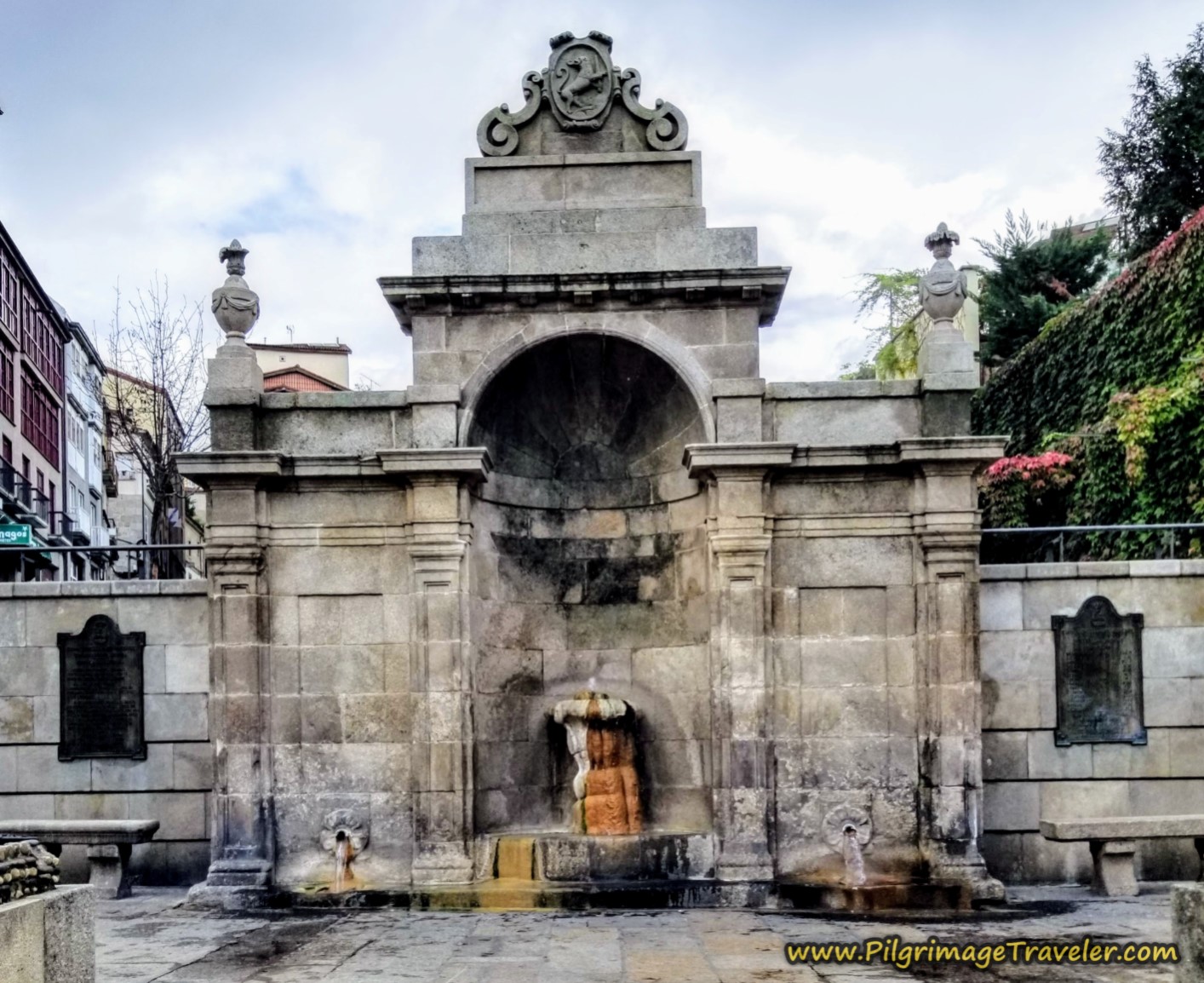
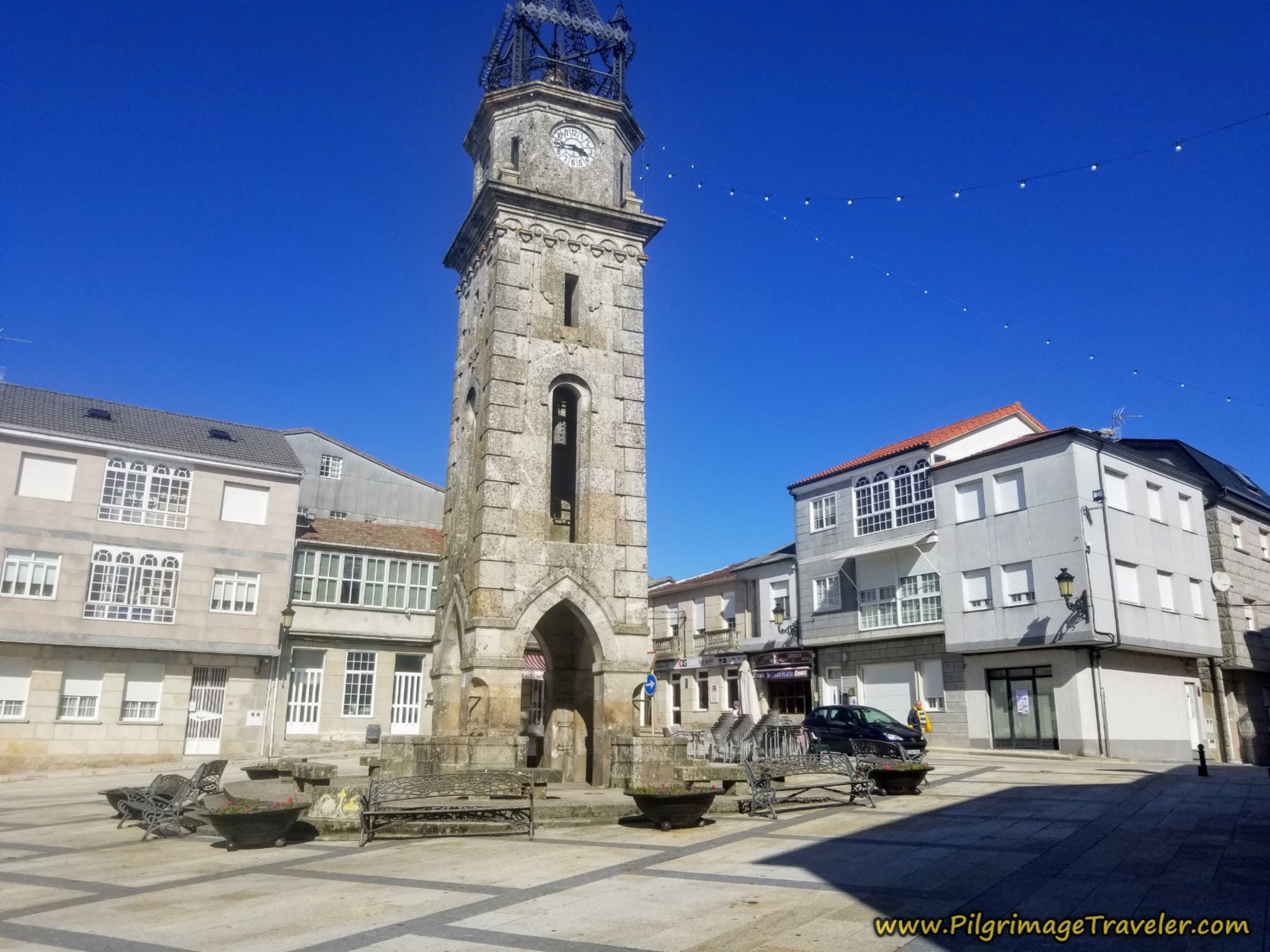
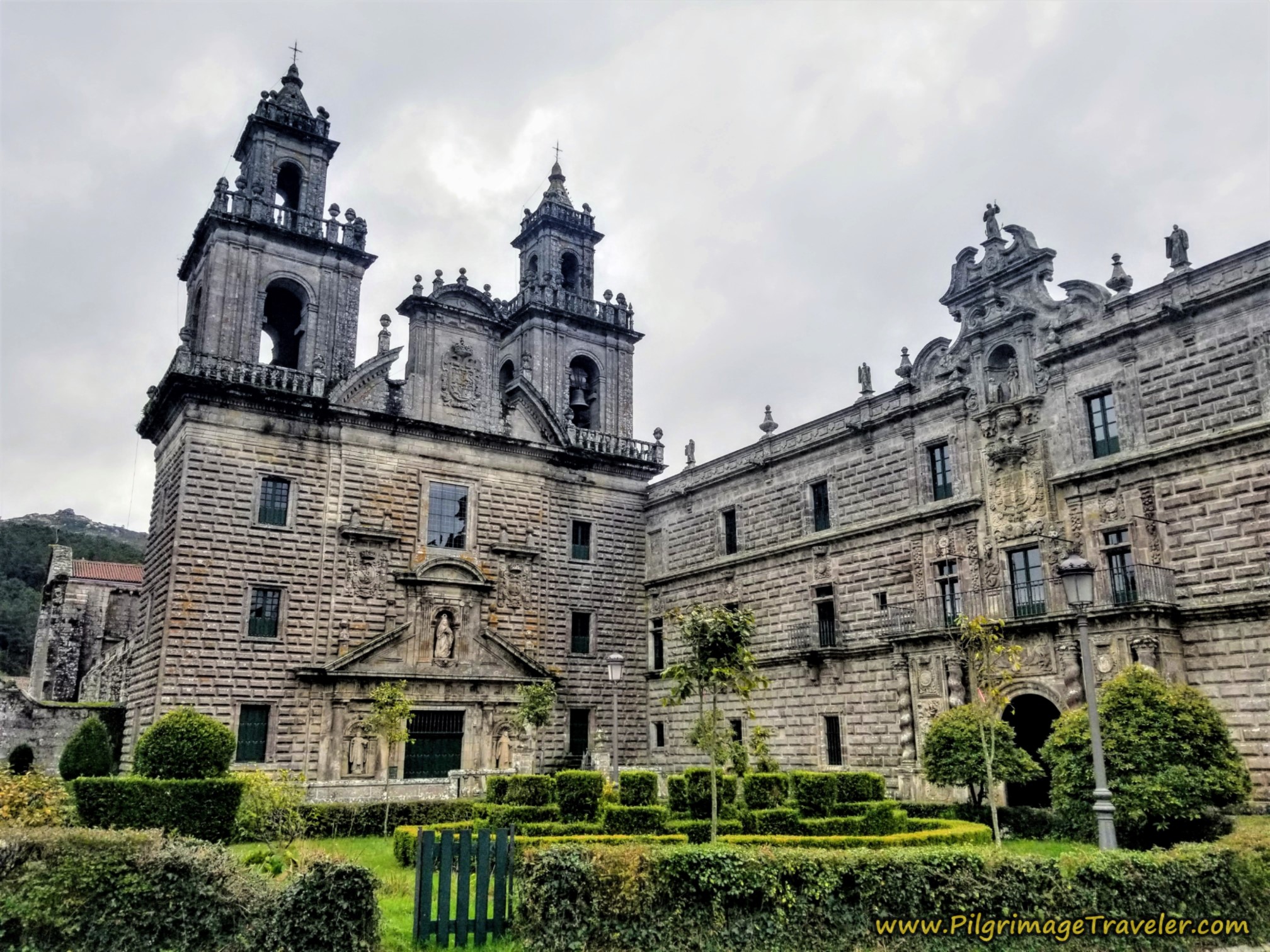
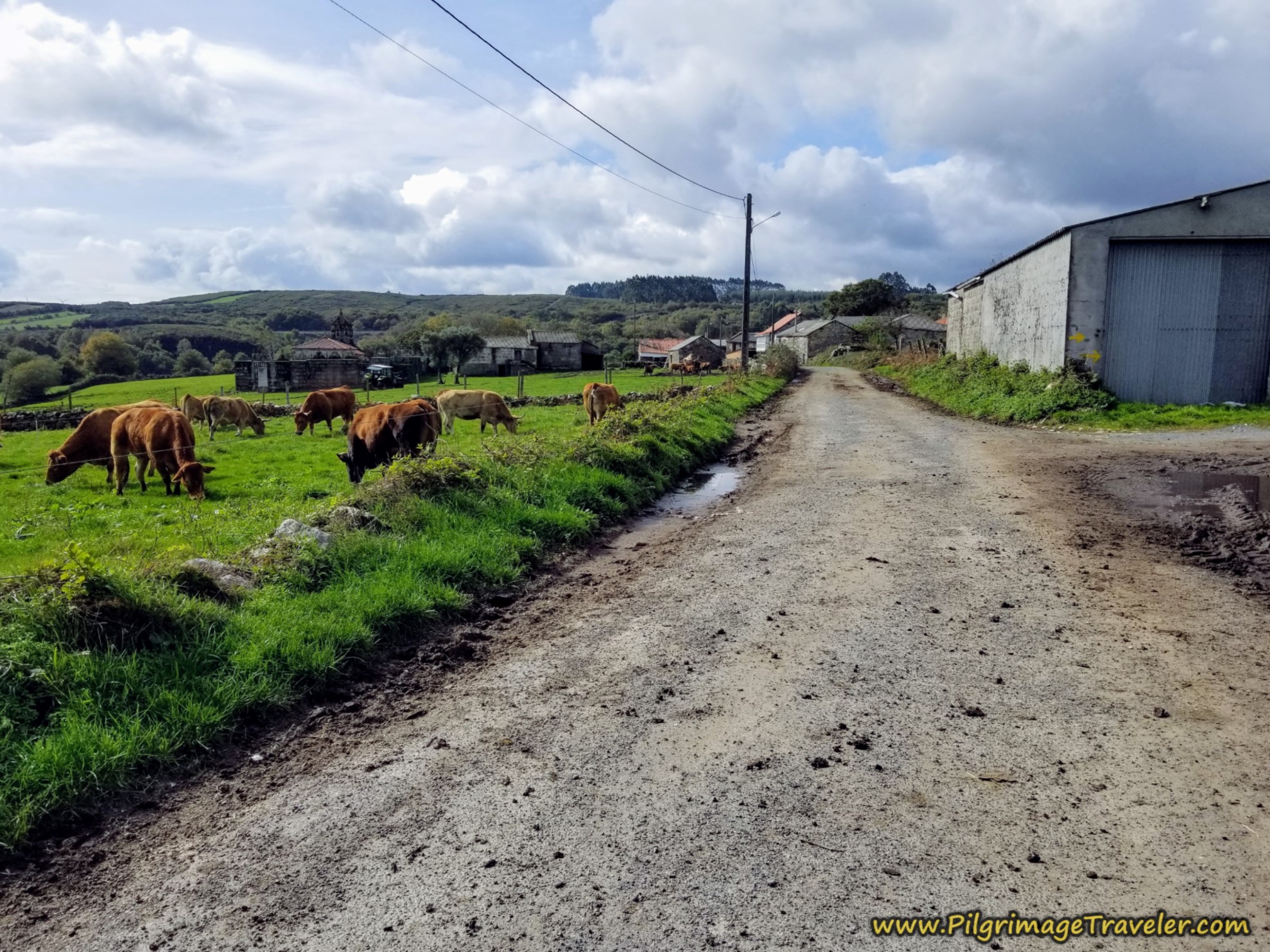
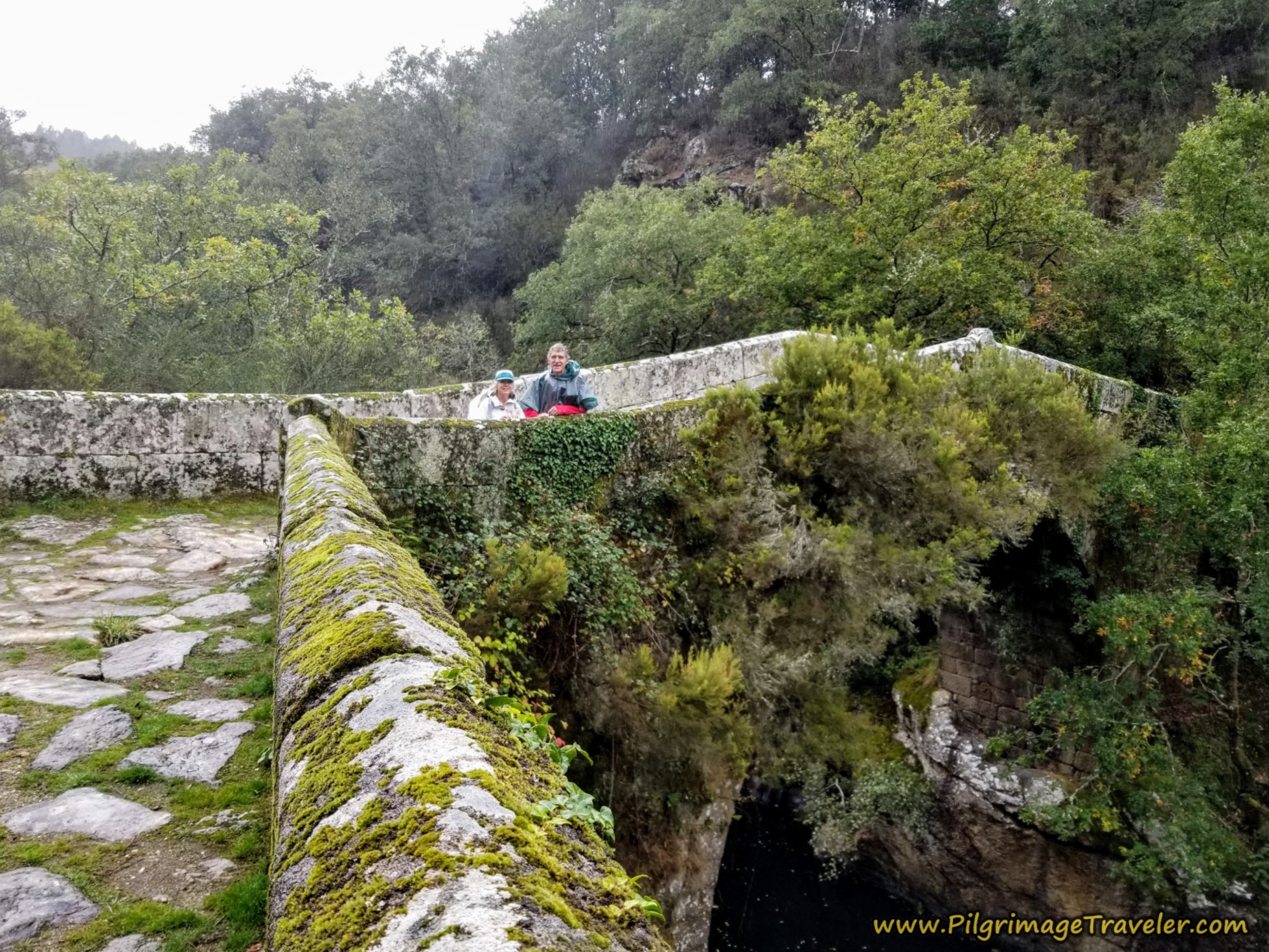
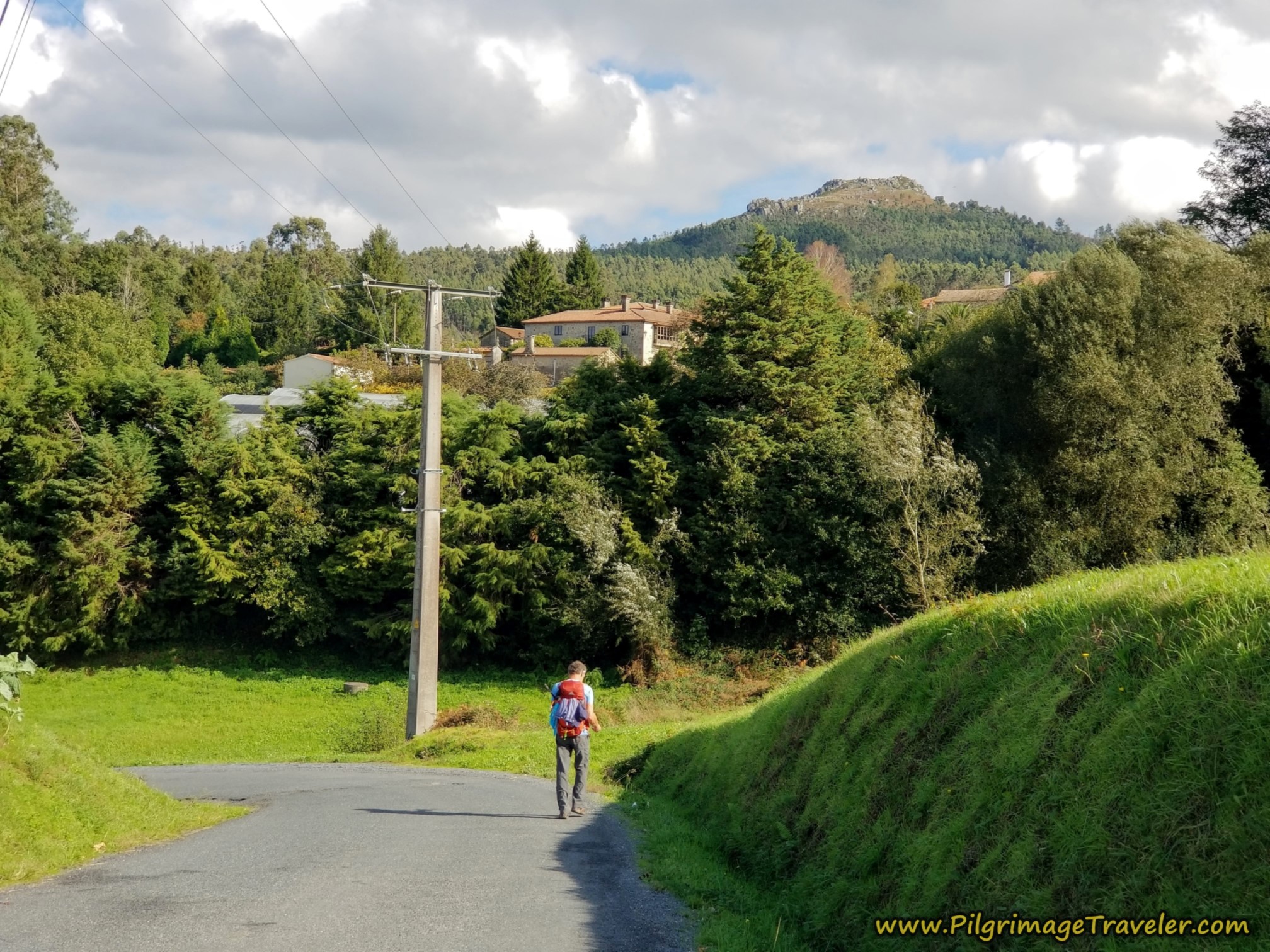
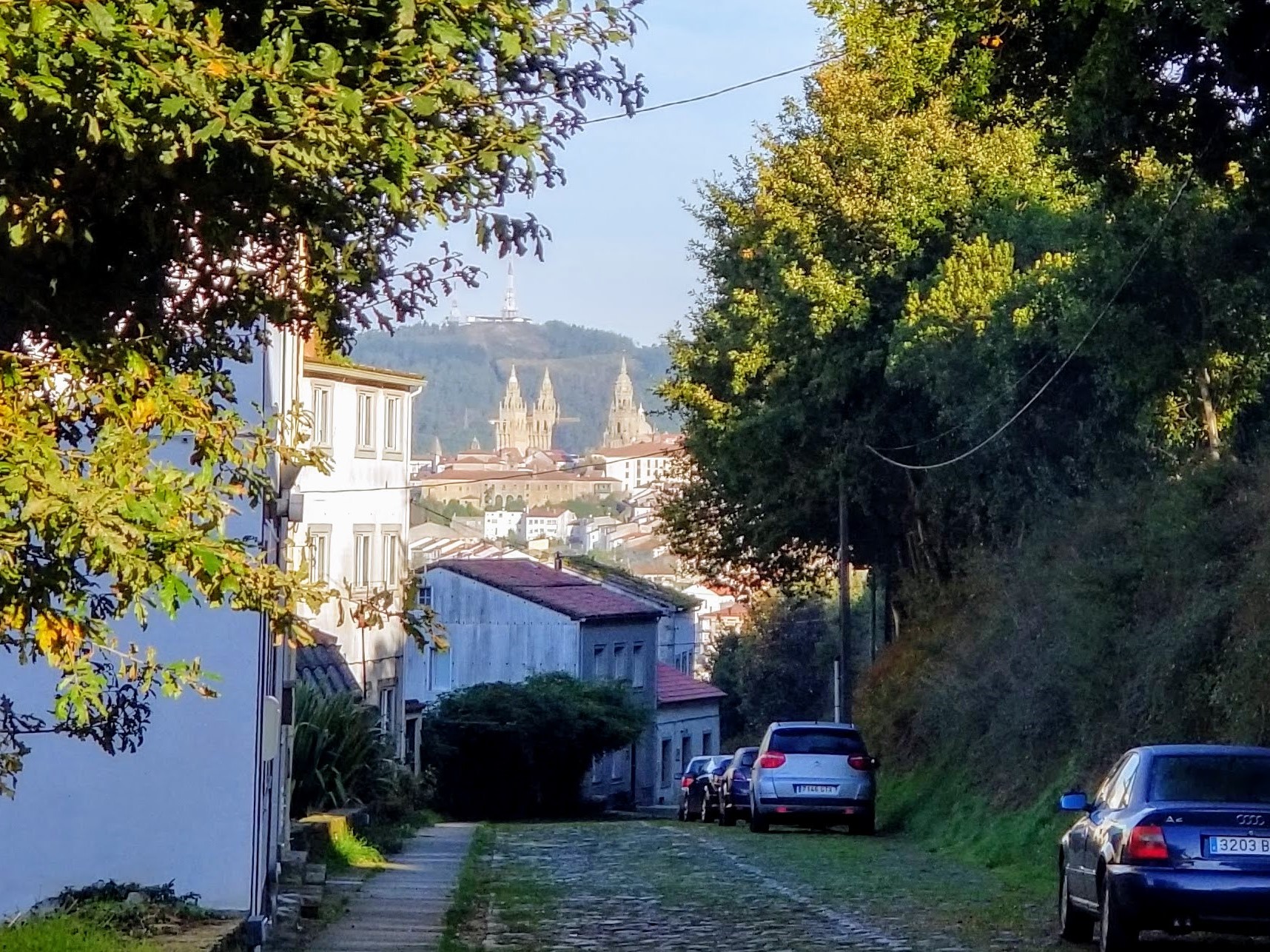
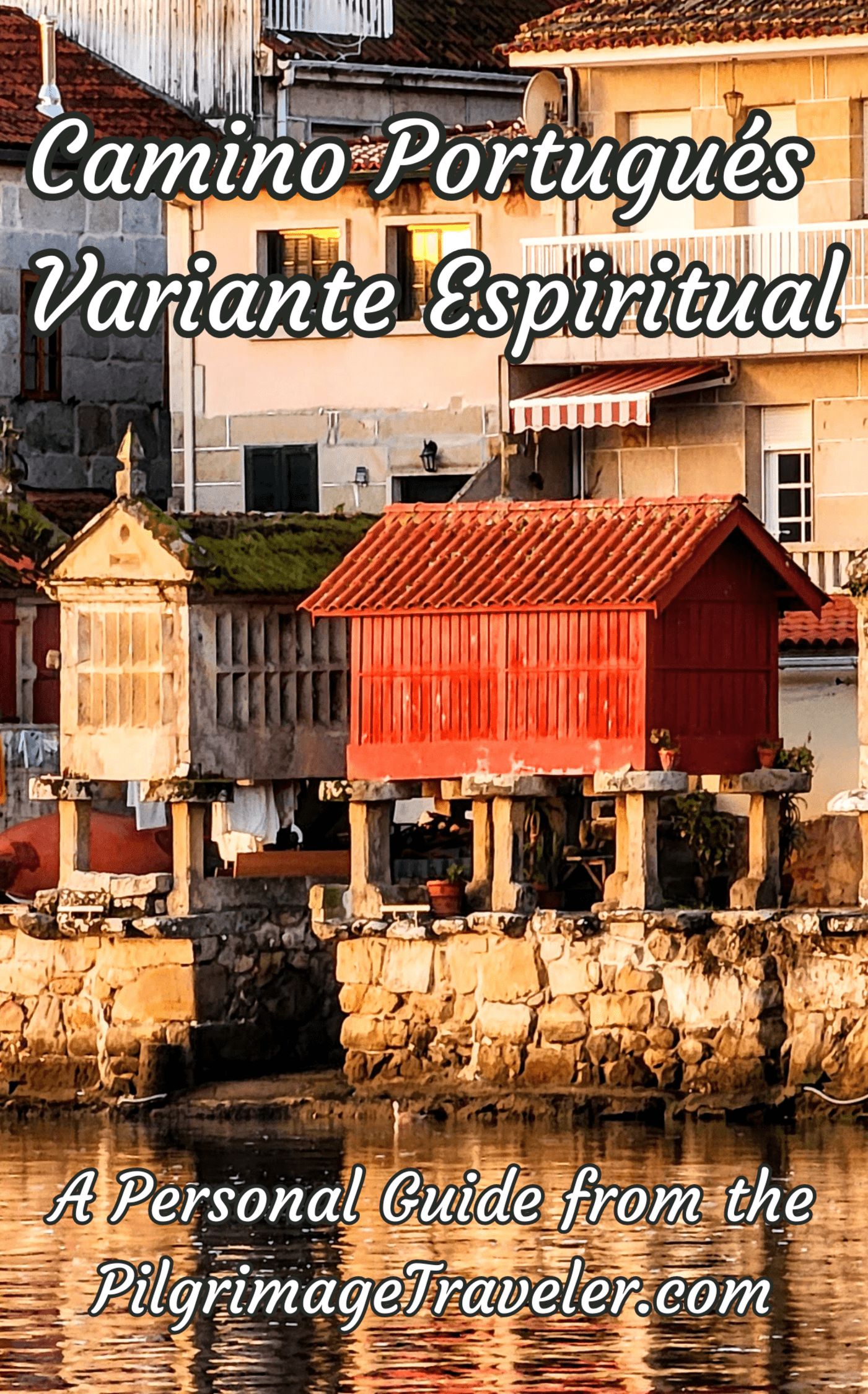
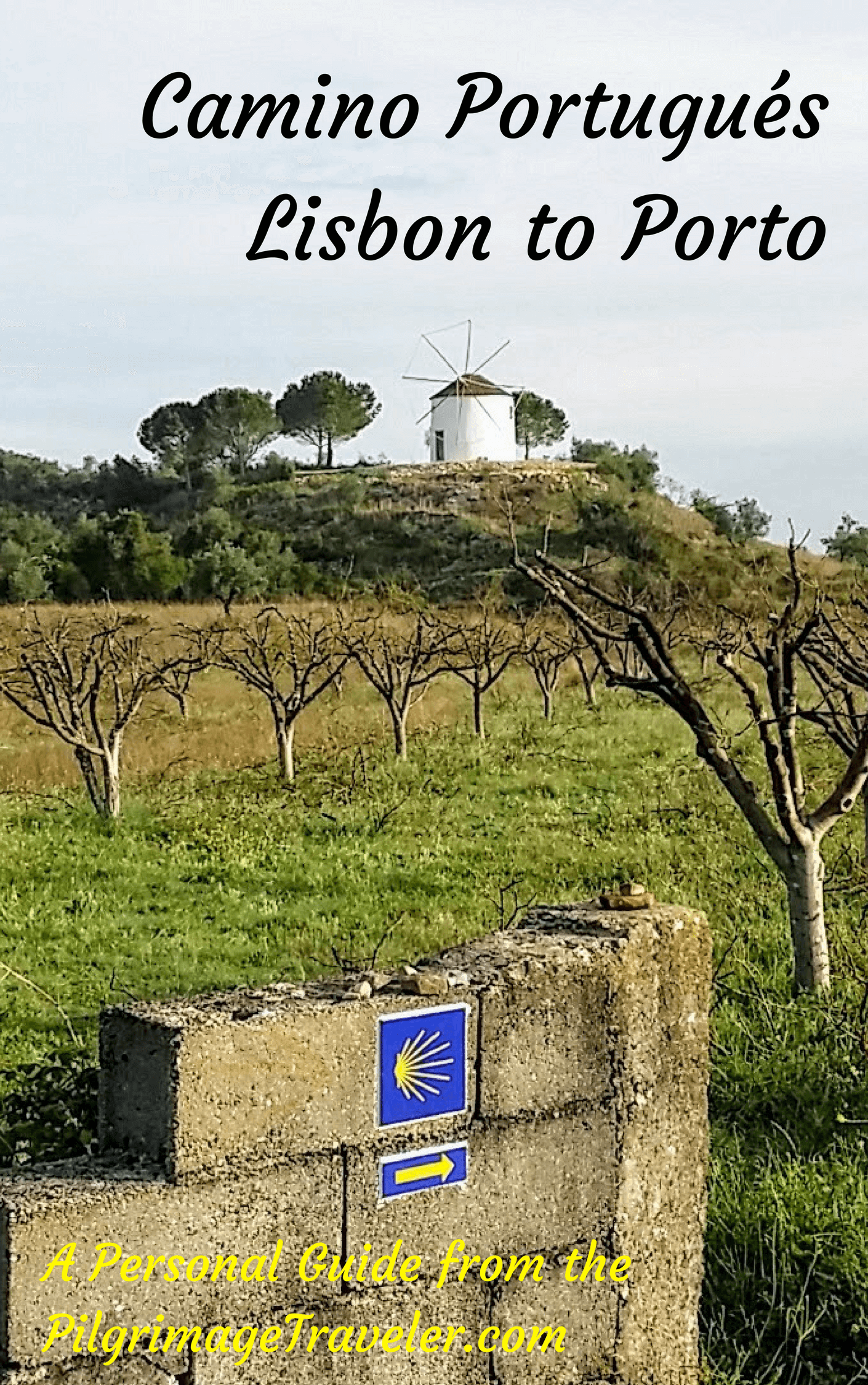
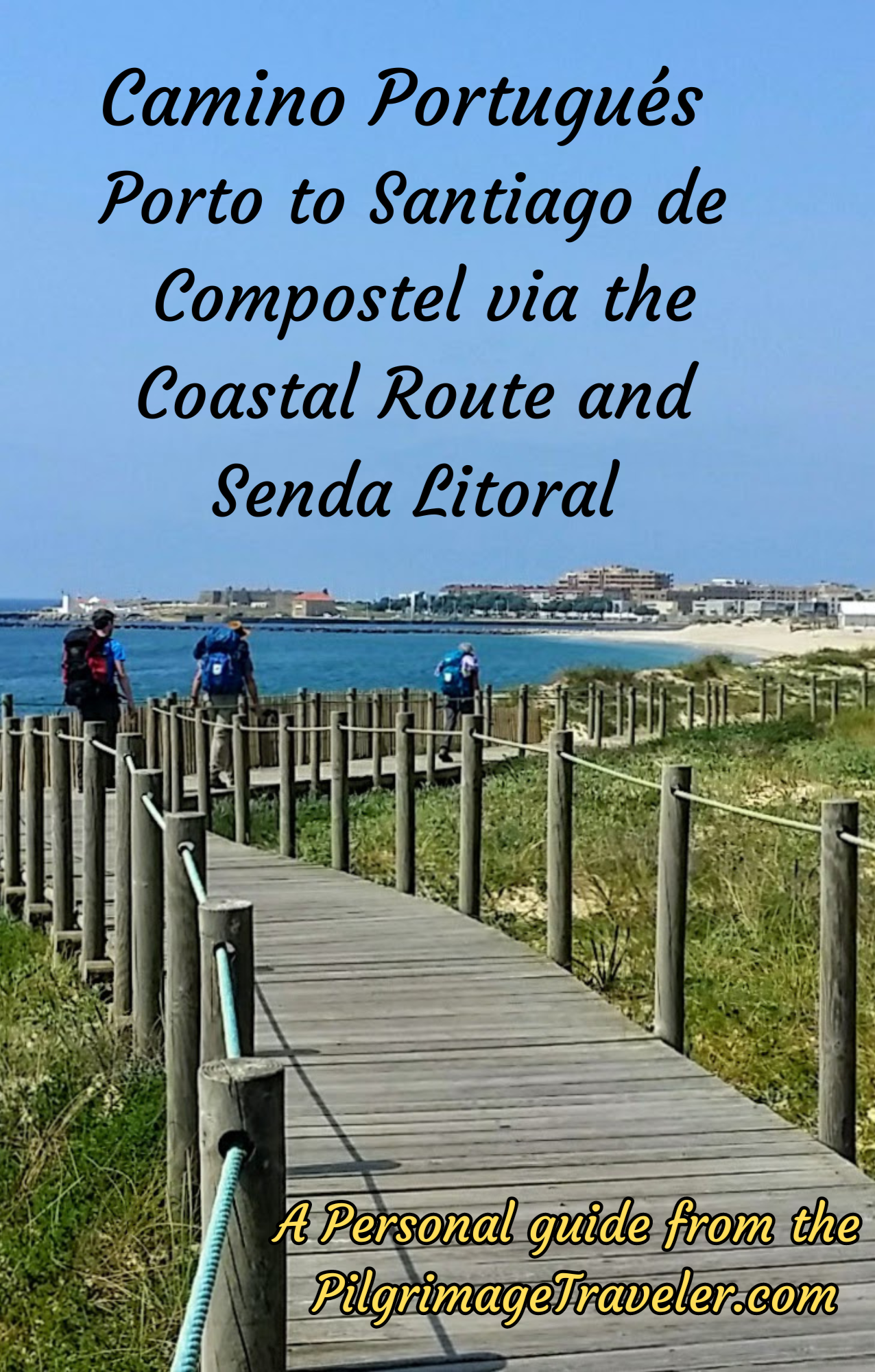
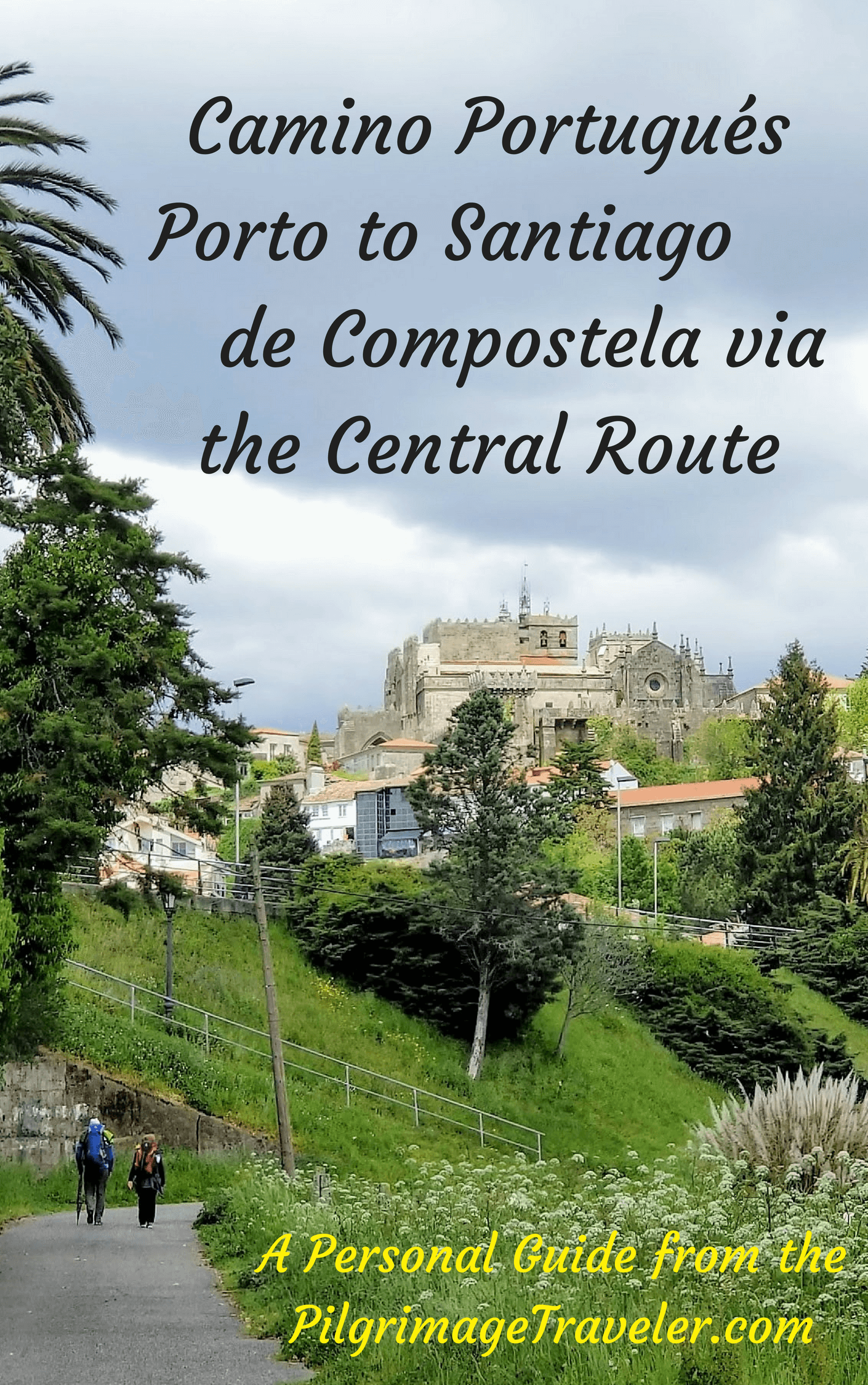
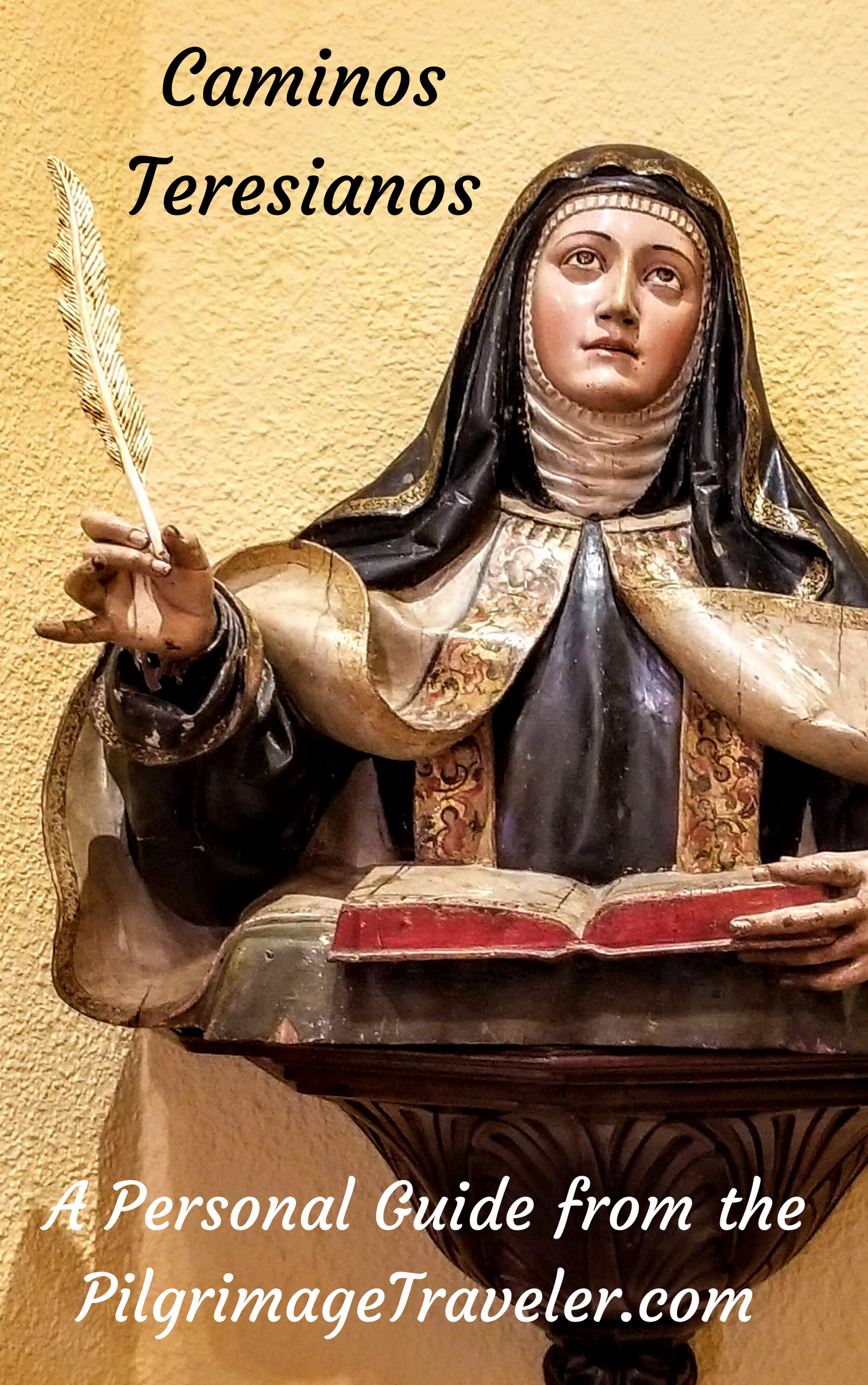
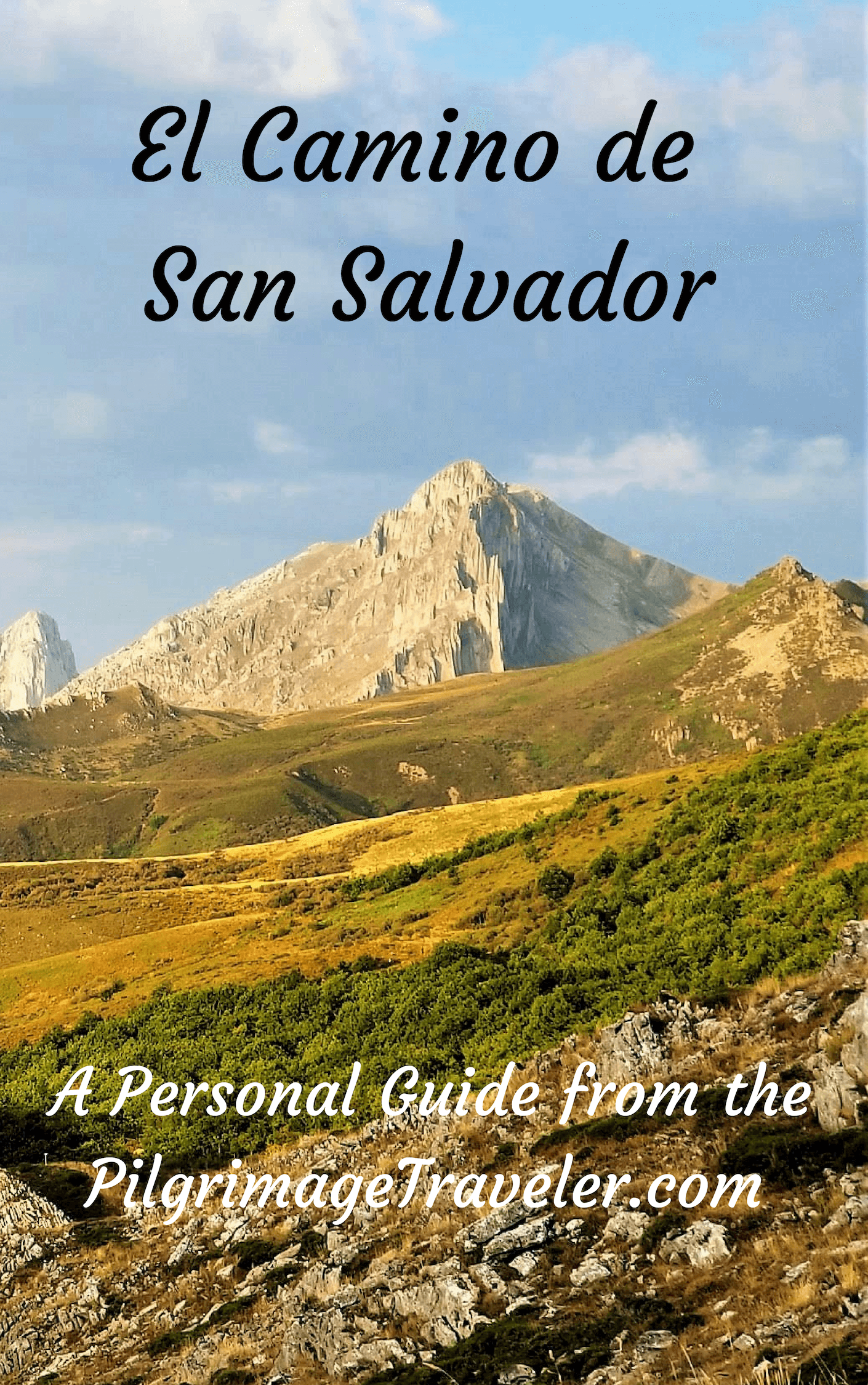
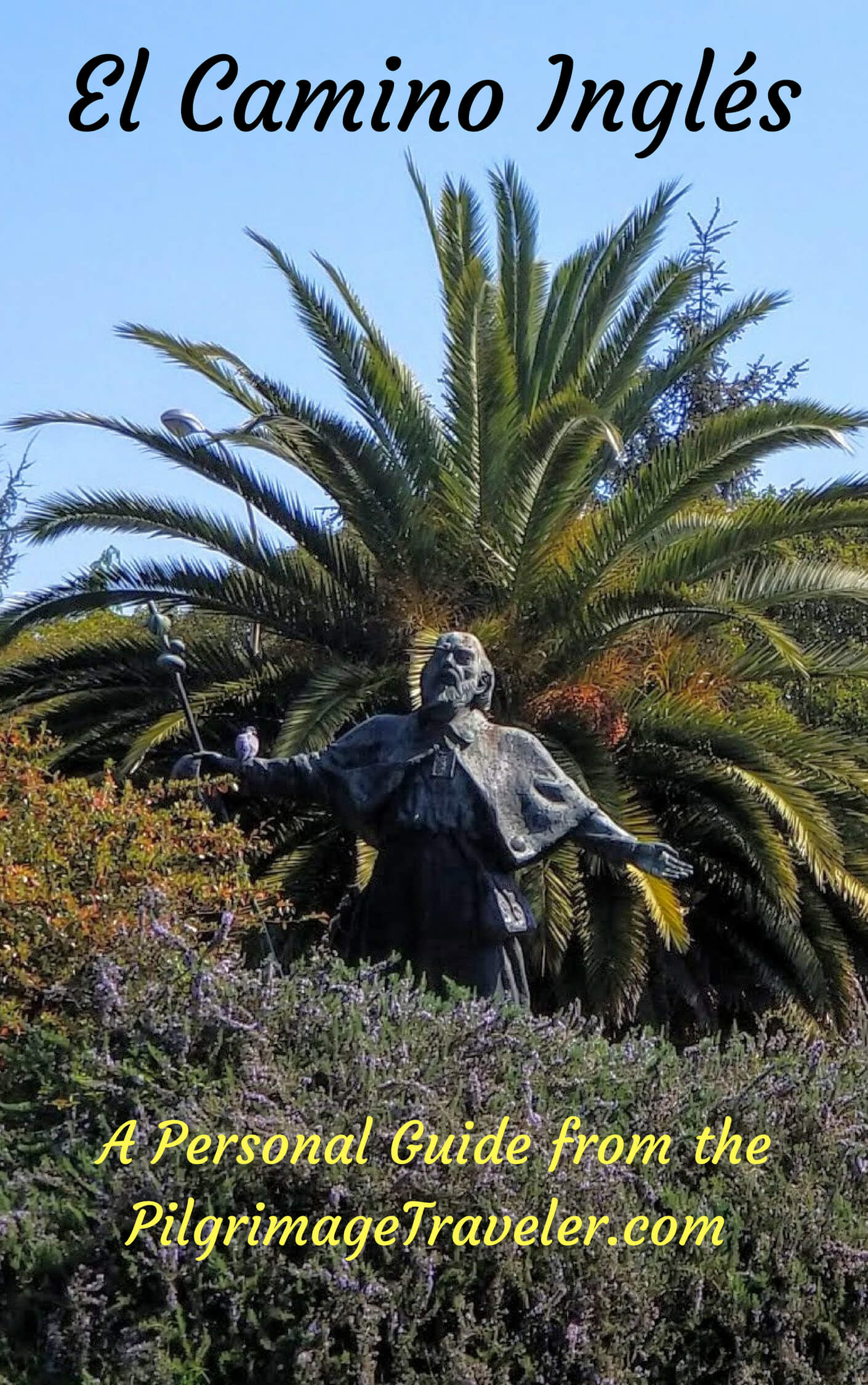
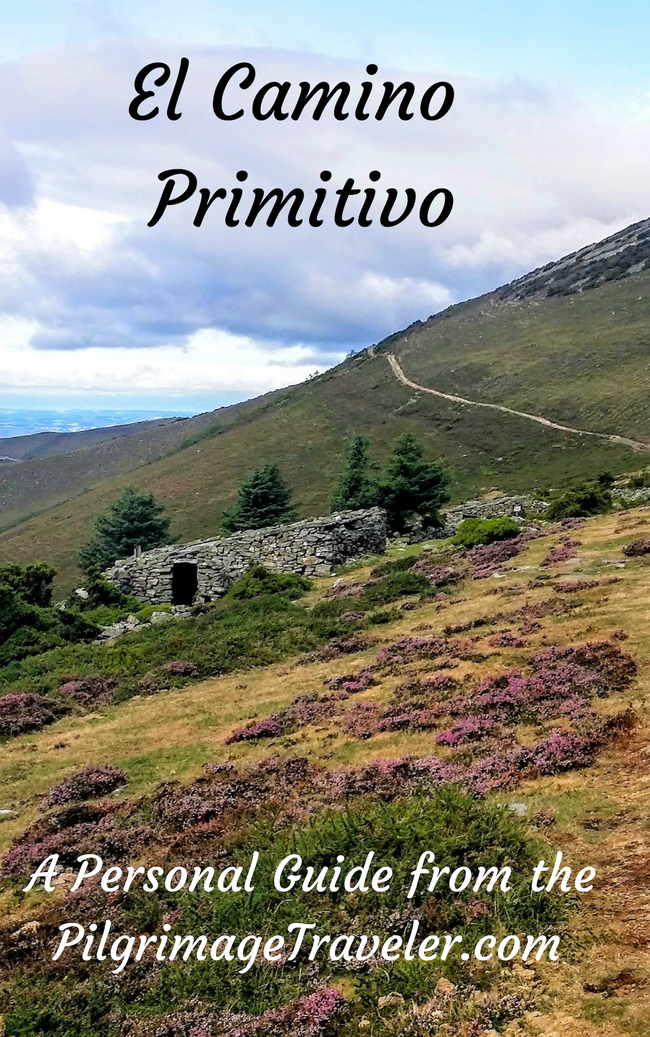
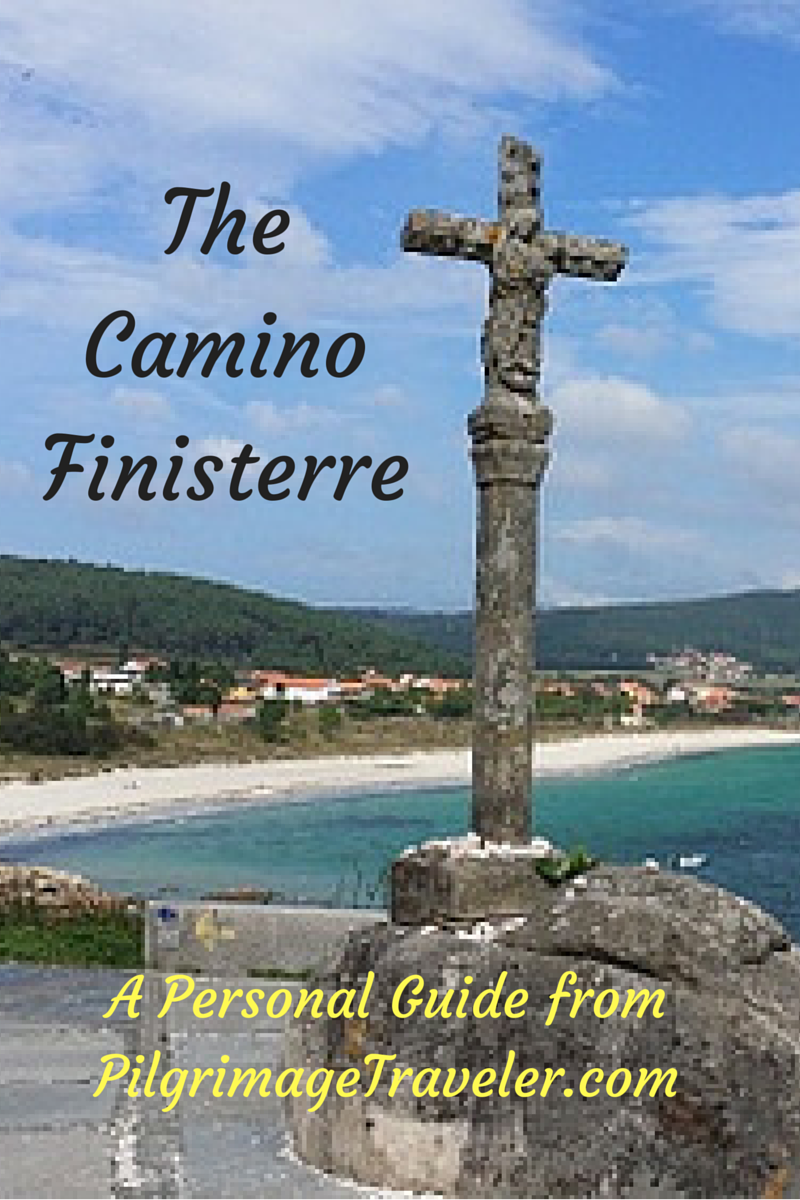
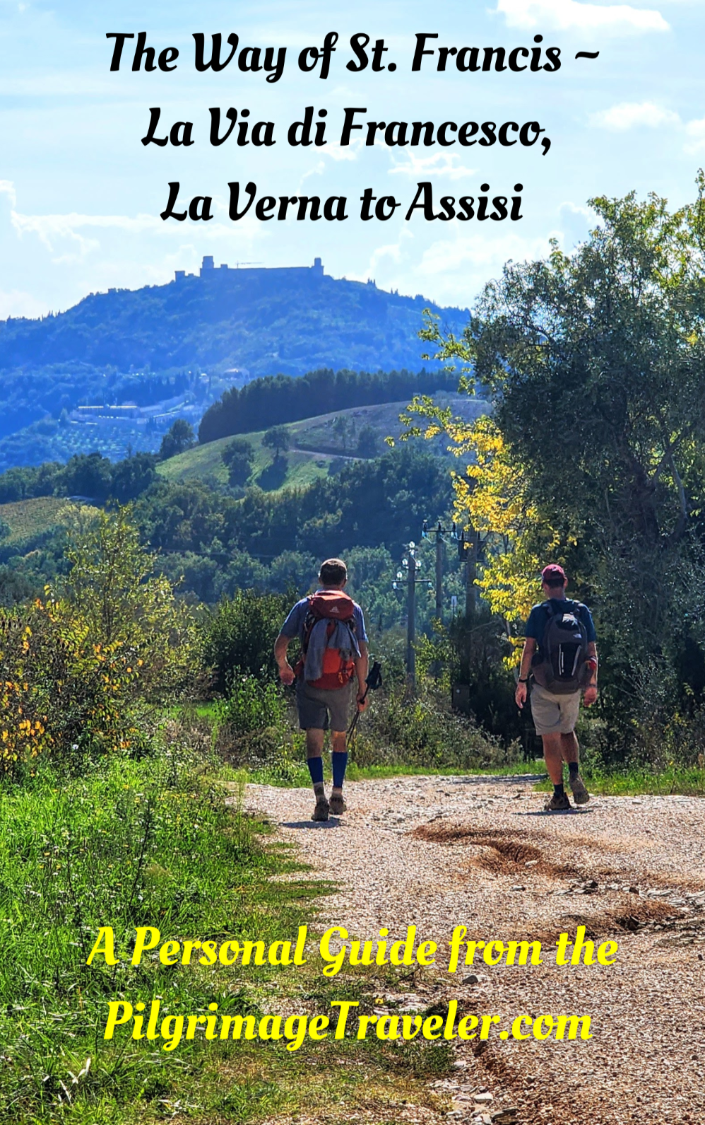
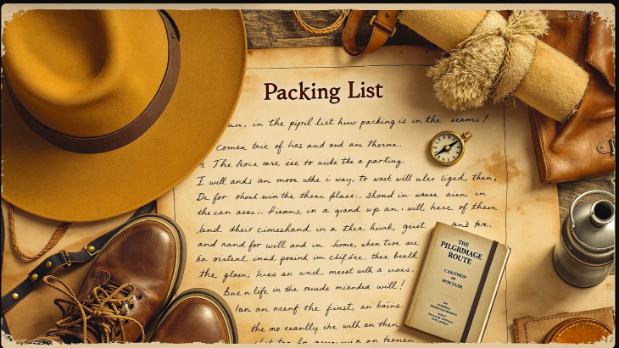
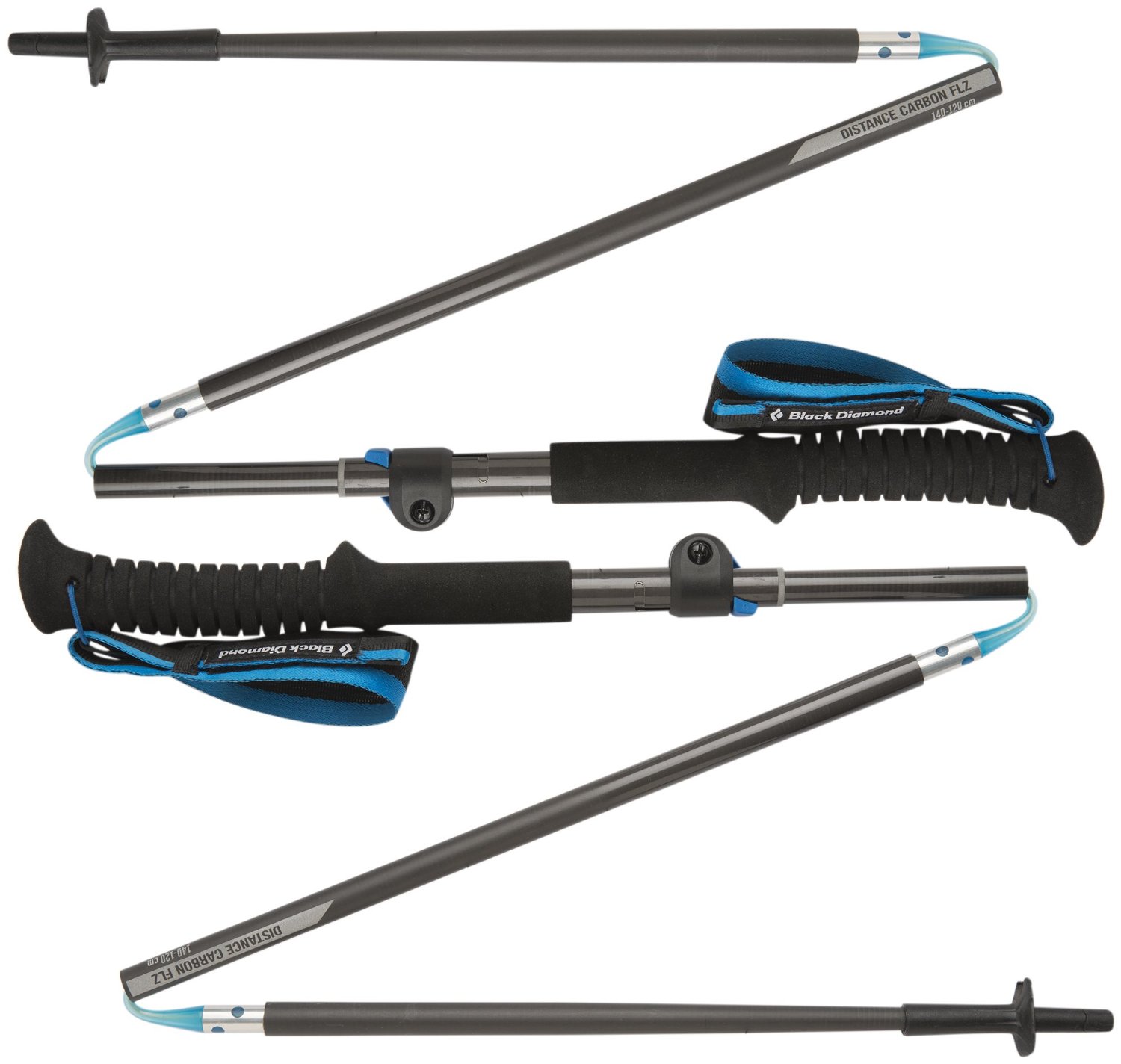
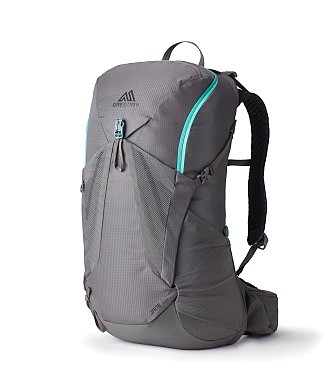
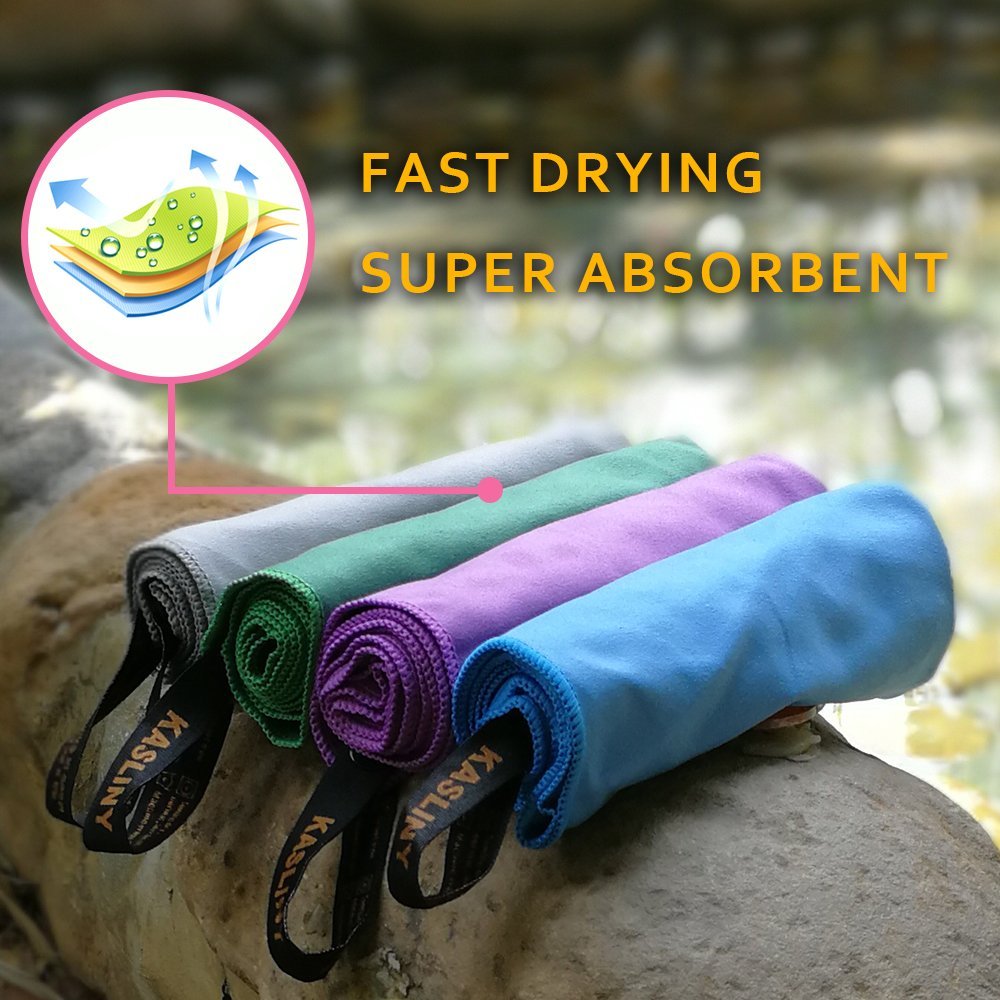
Your Opinion Matters! Comments
Have you had a similar experience, have some advice to give, or have something else you'd like to share? We would love to hear from you! Please leave us a comment in the box below.